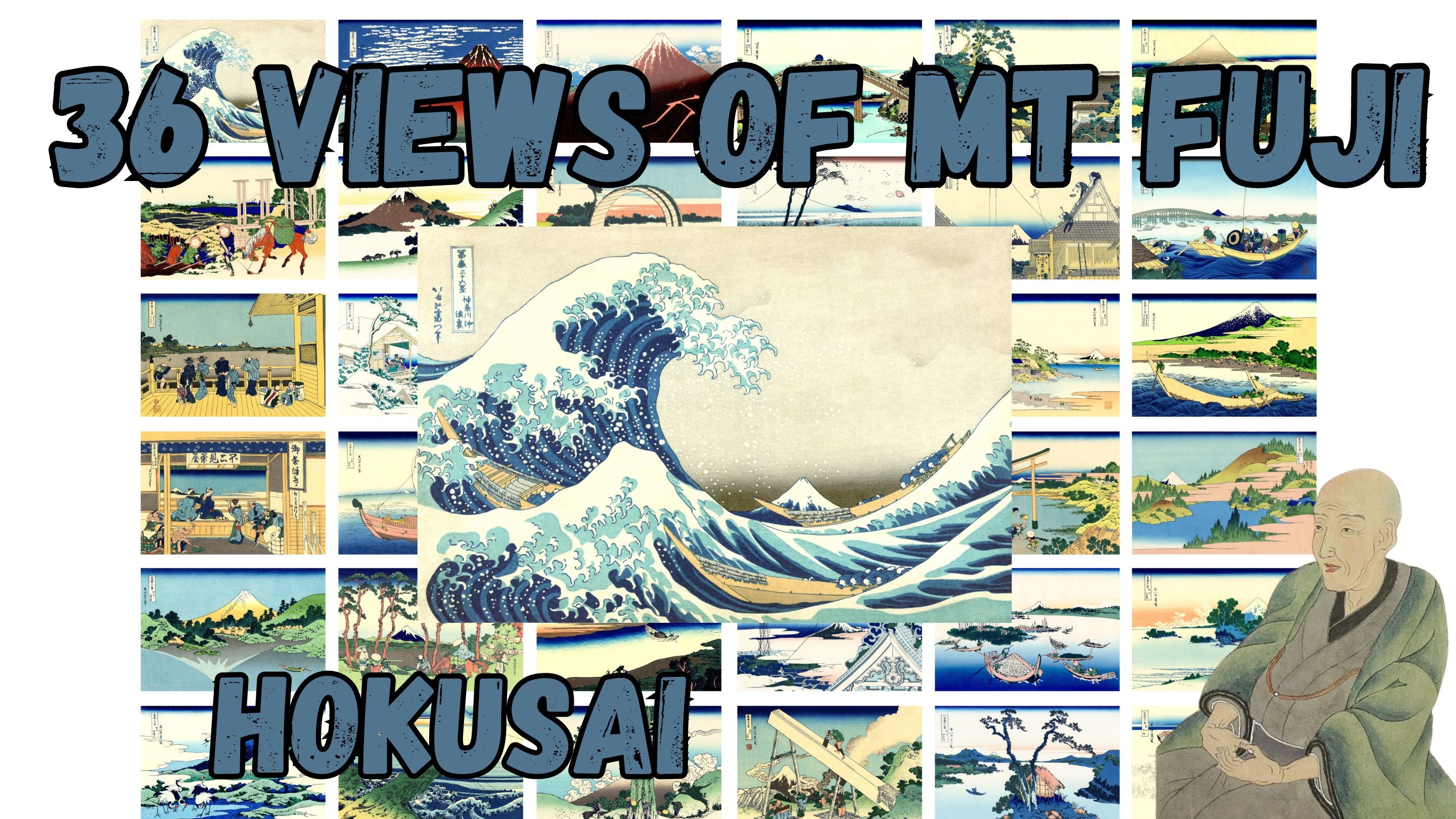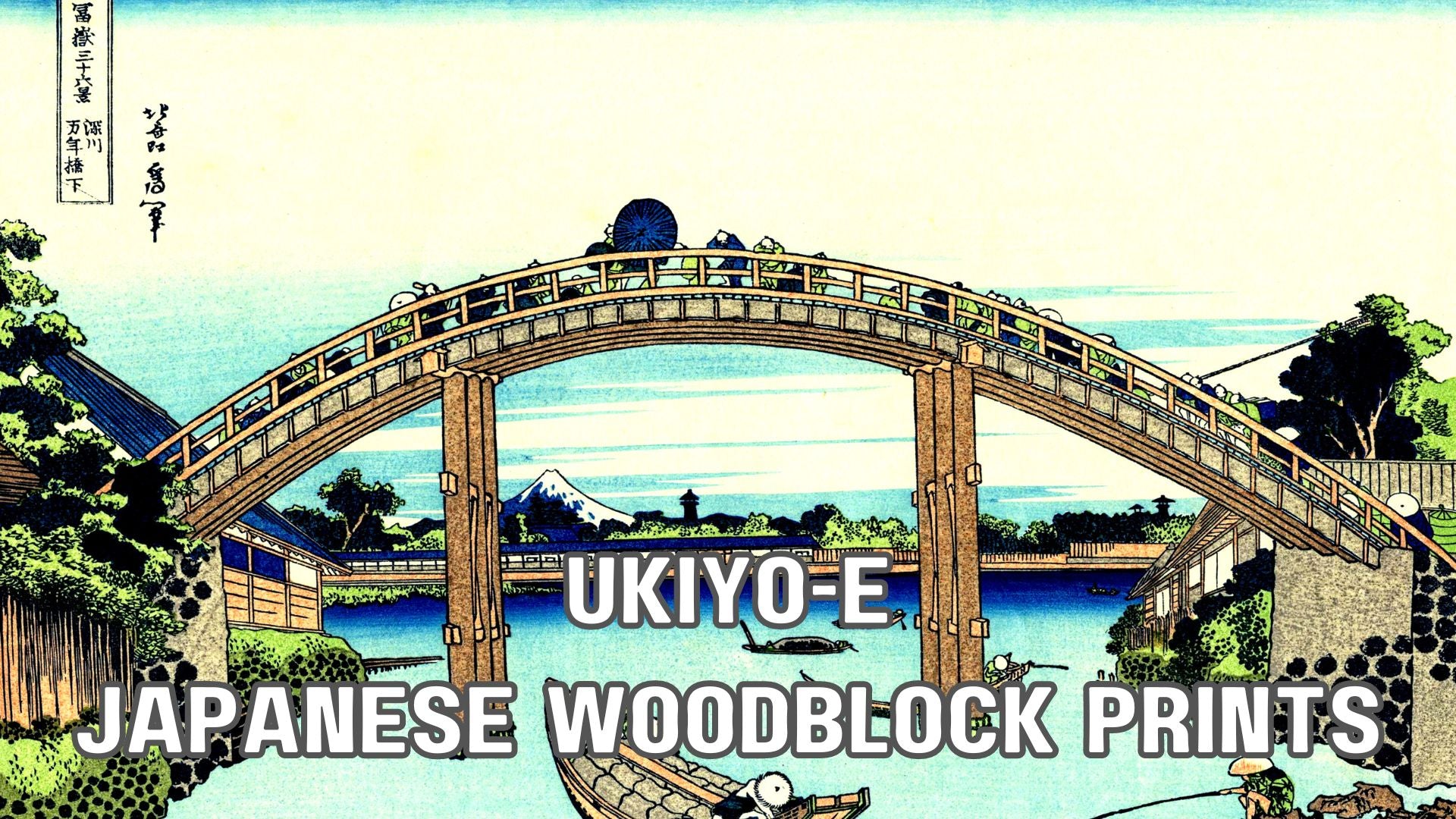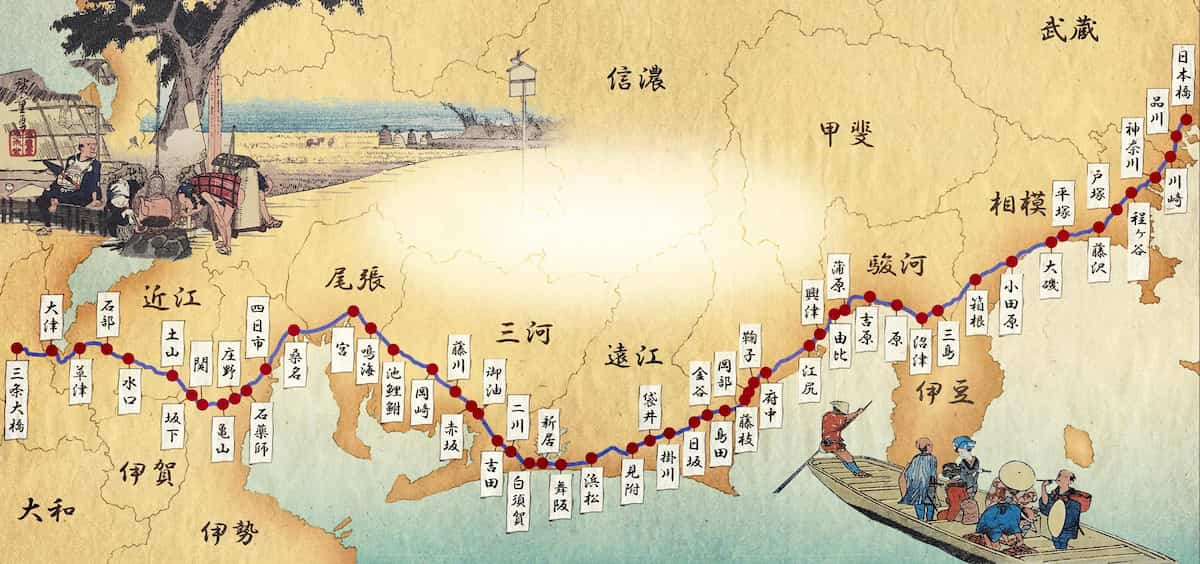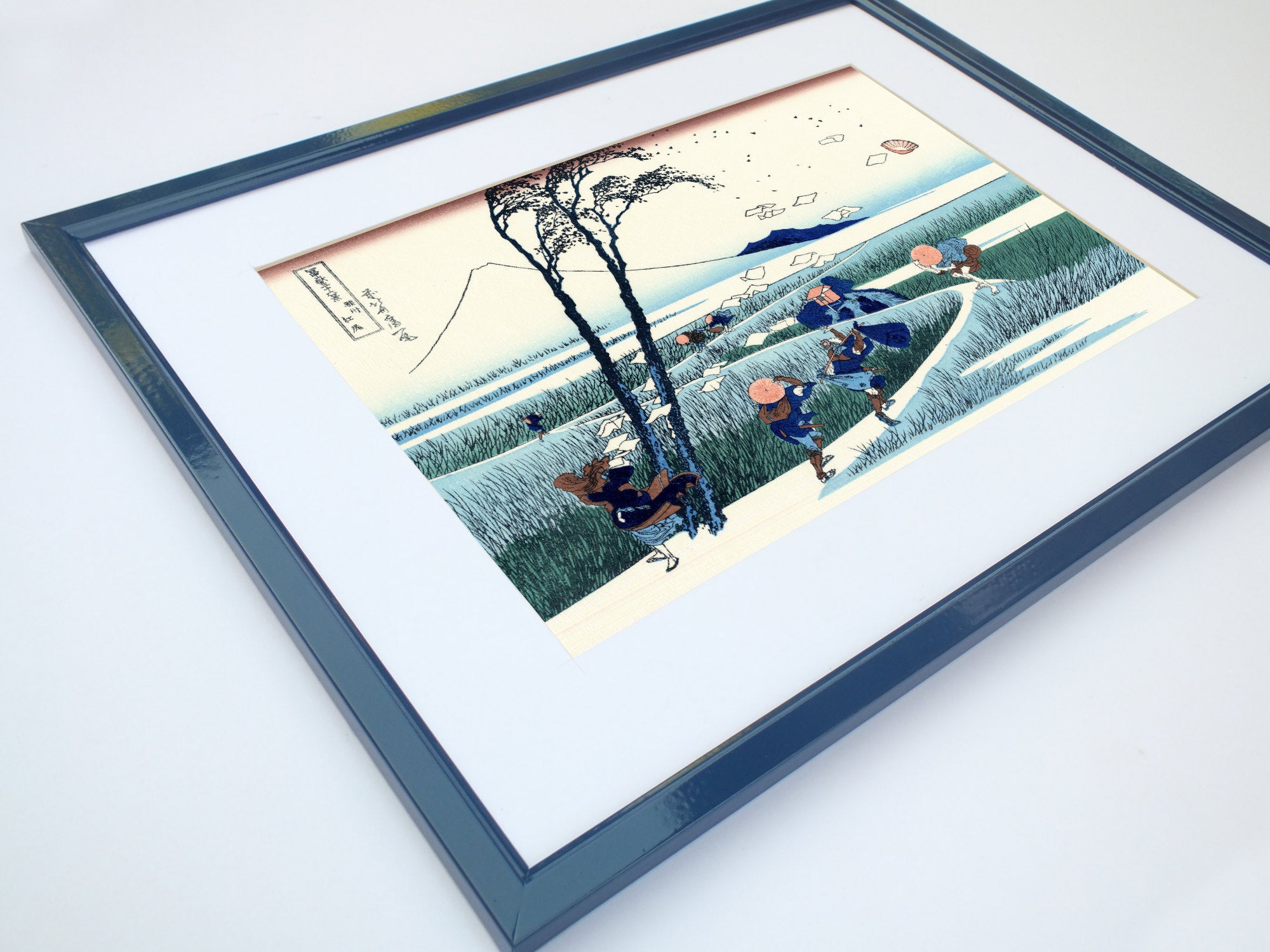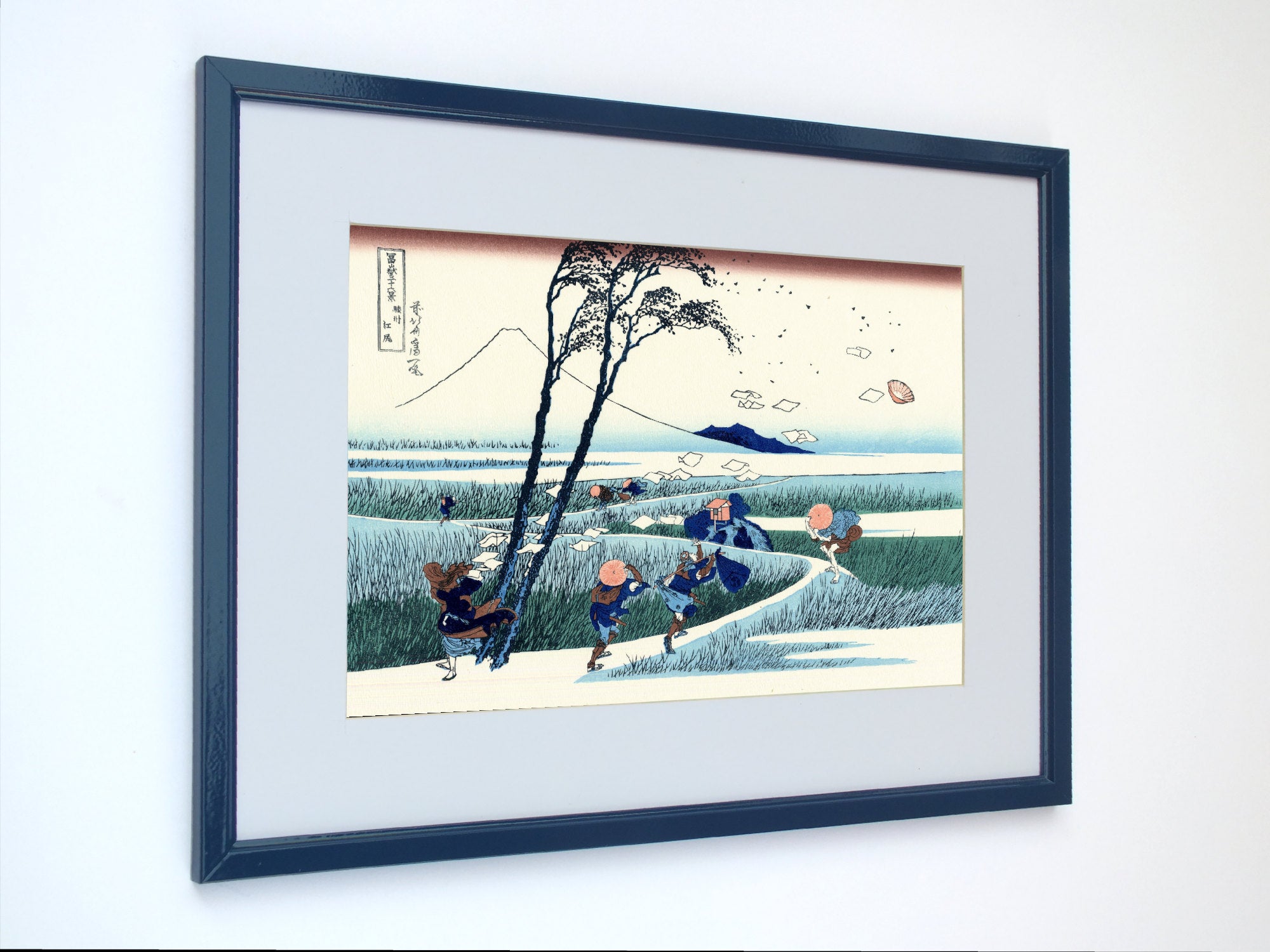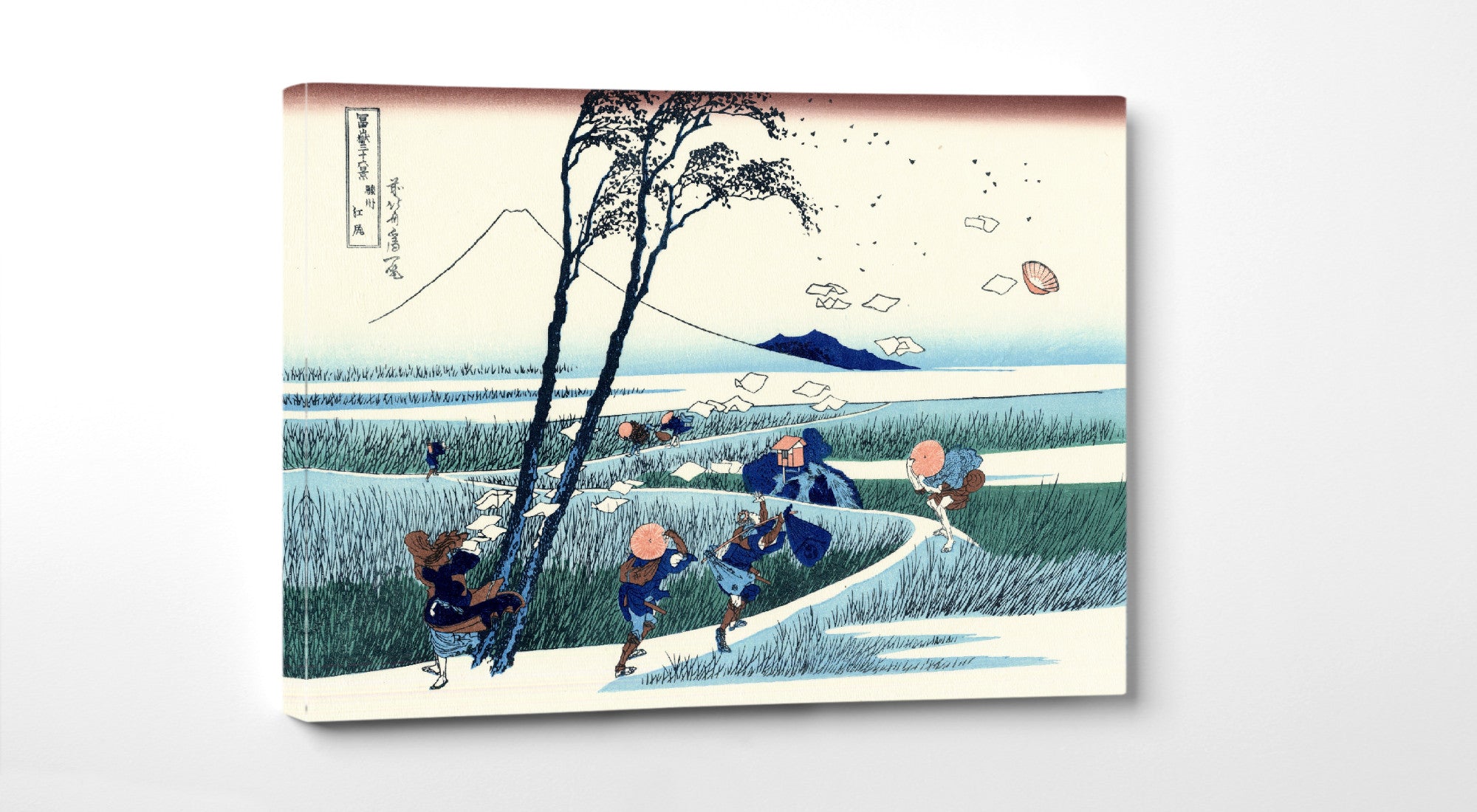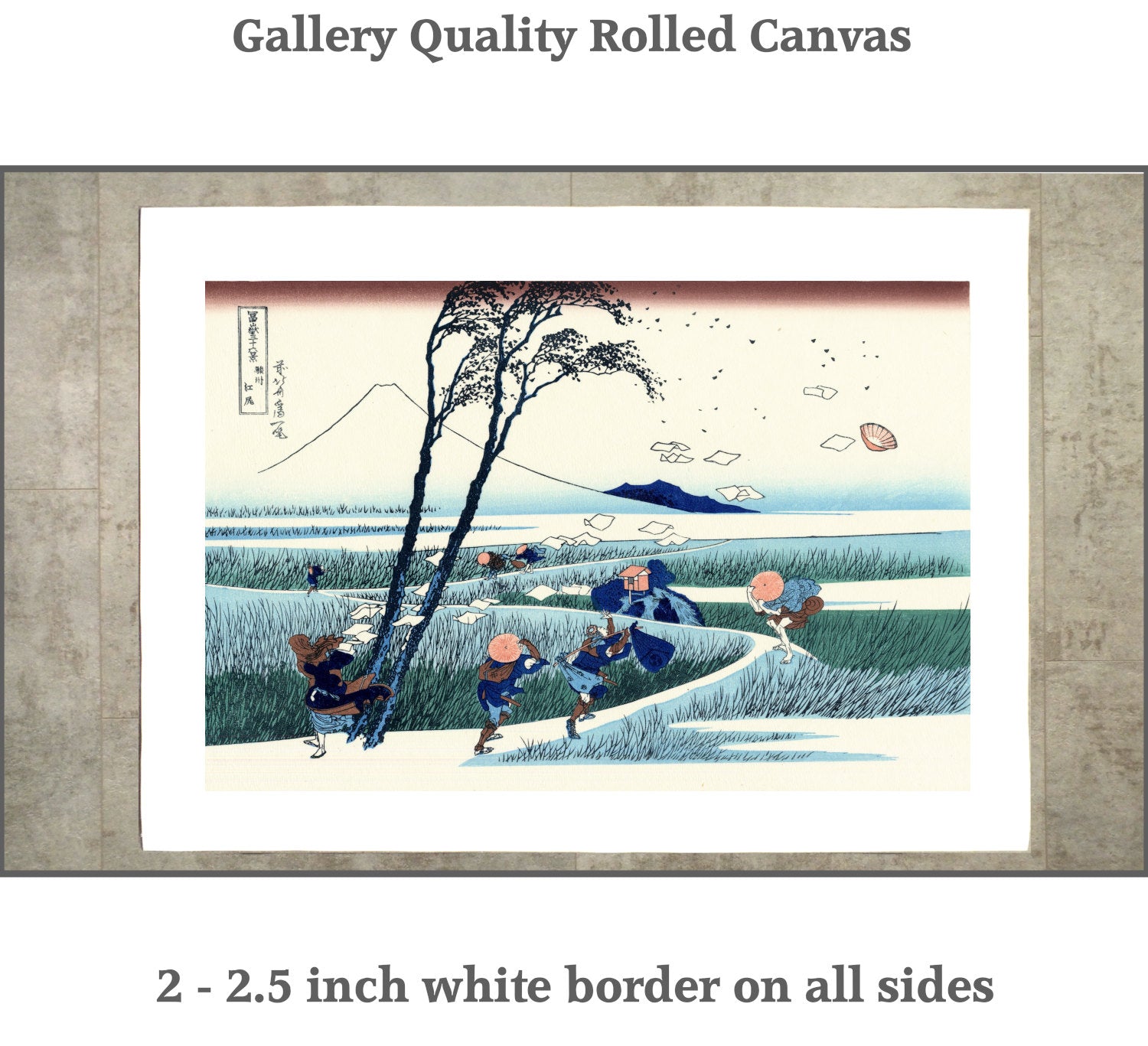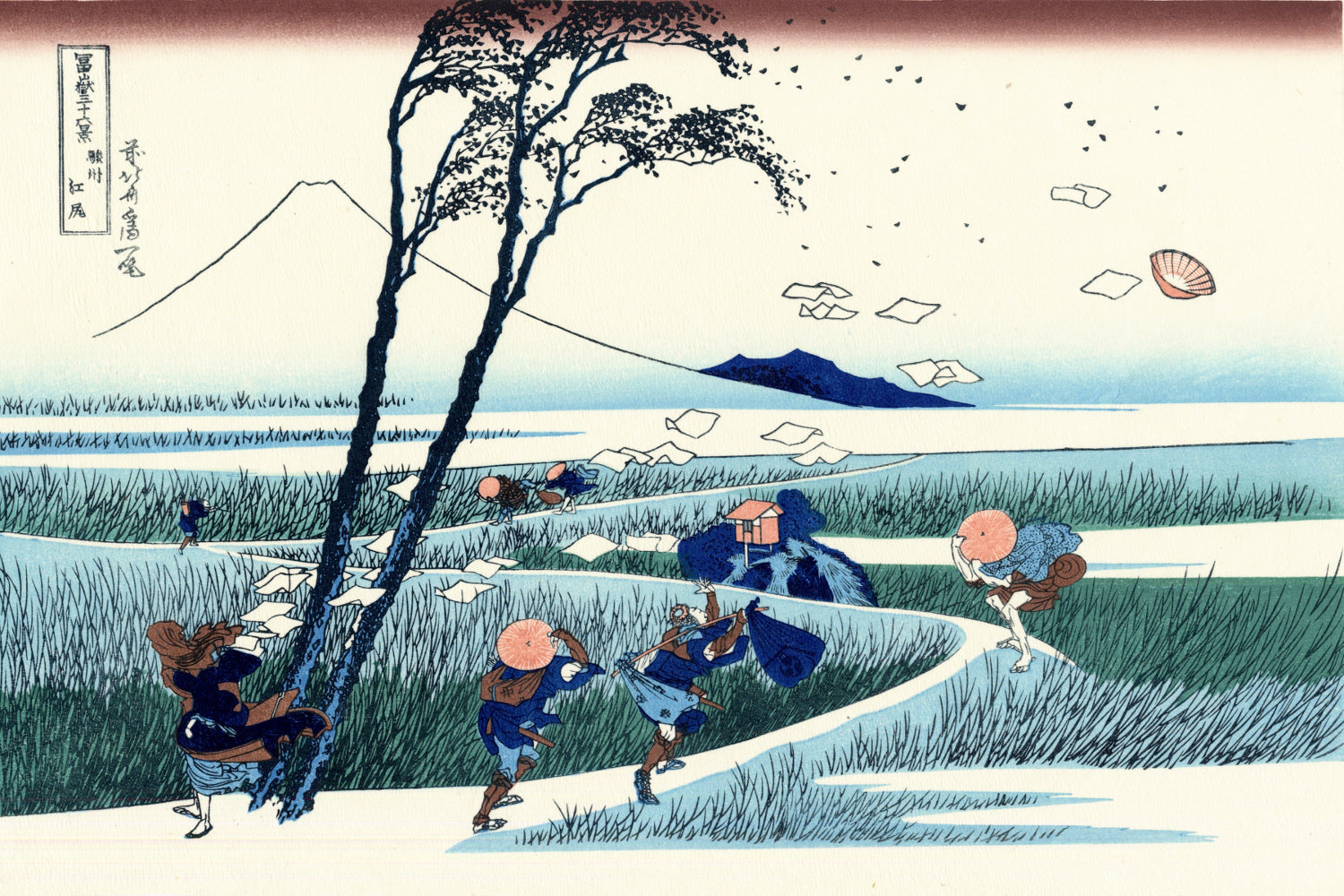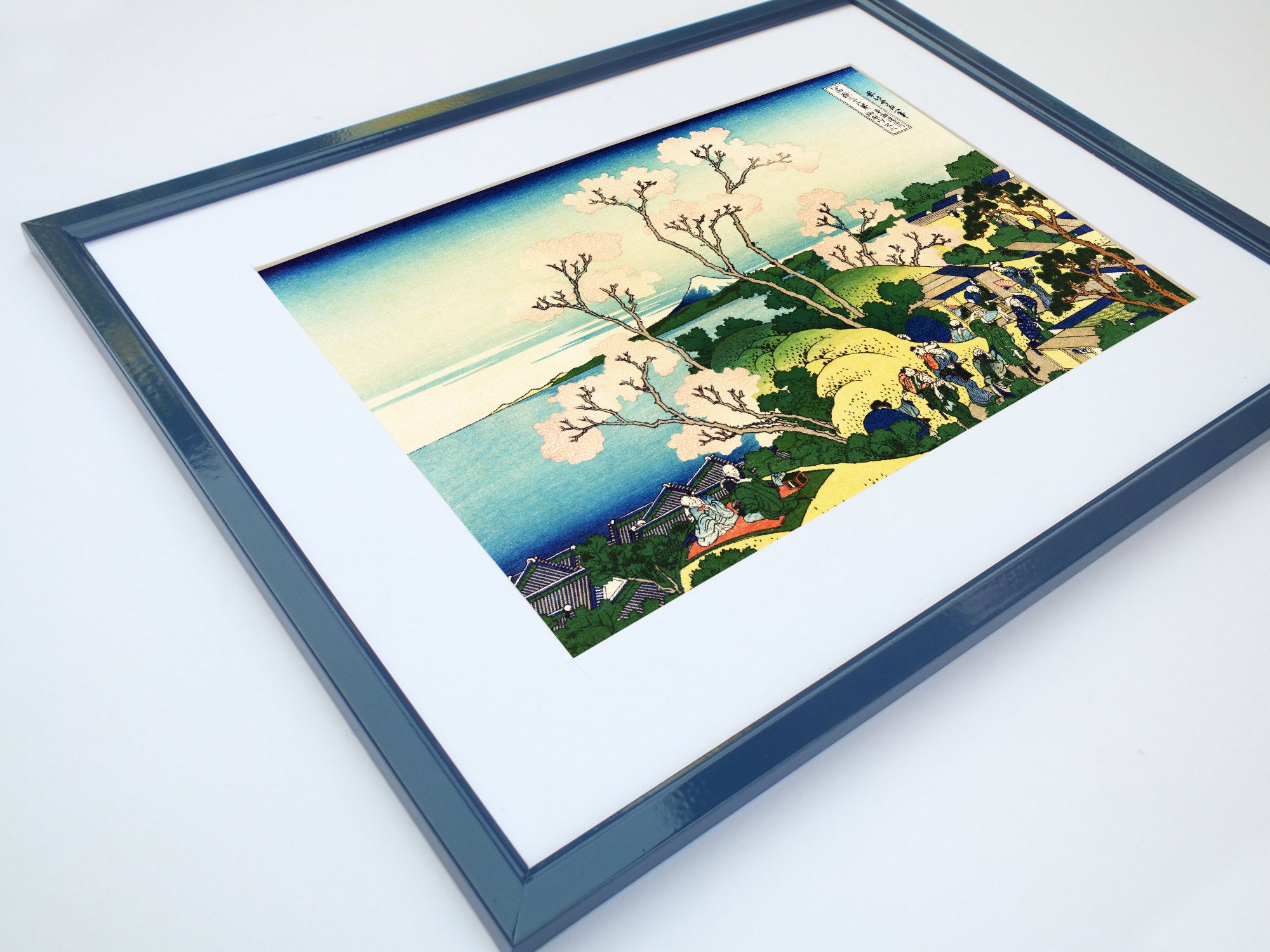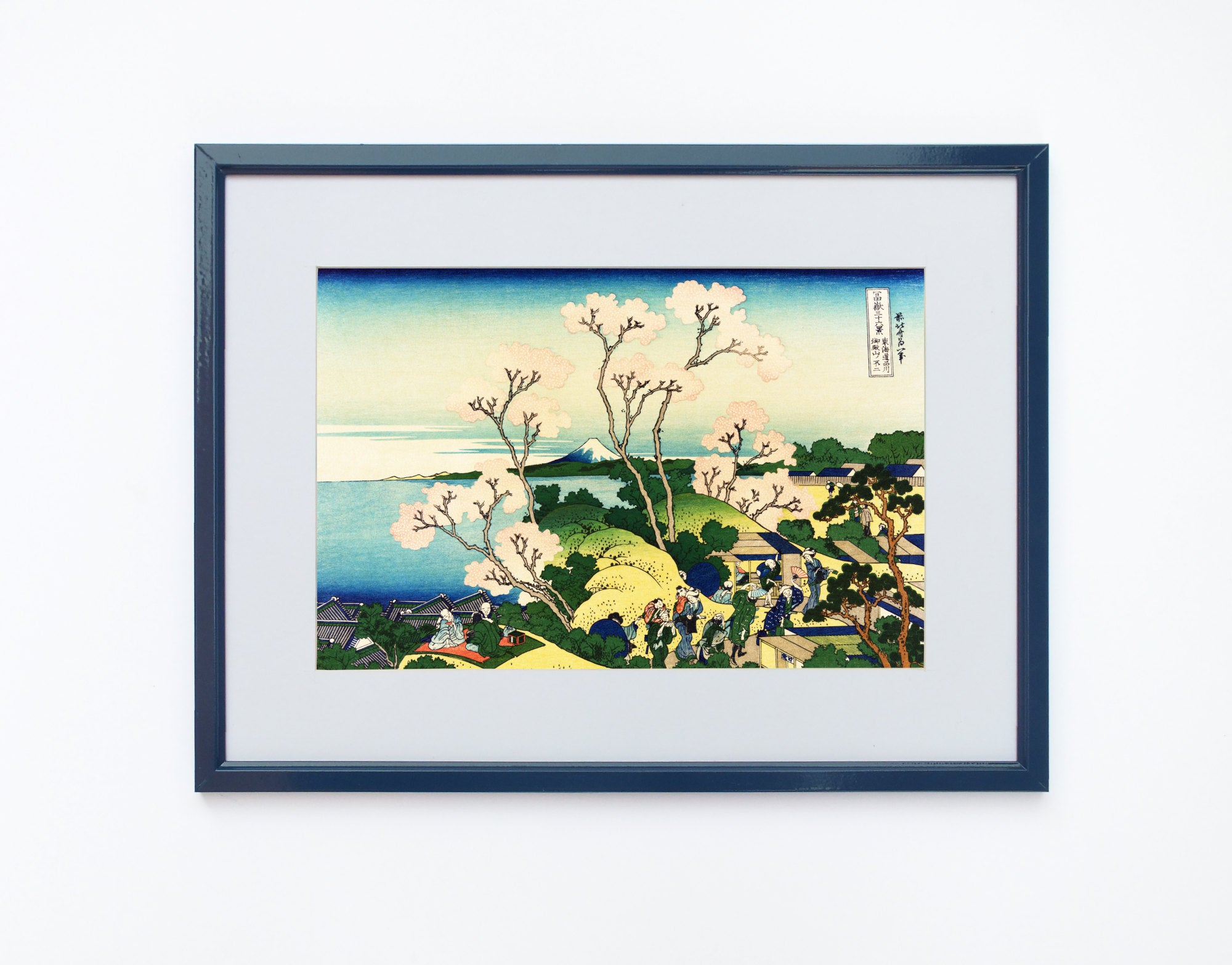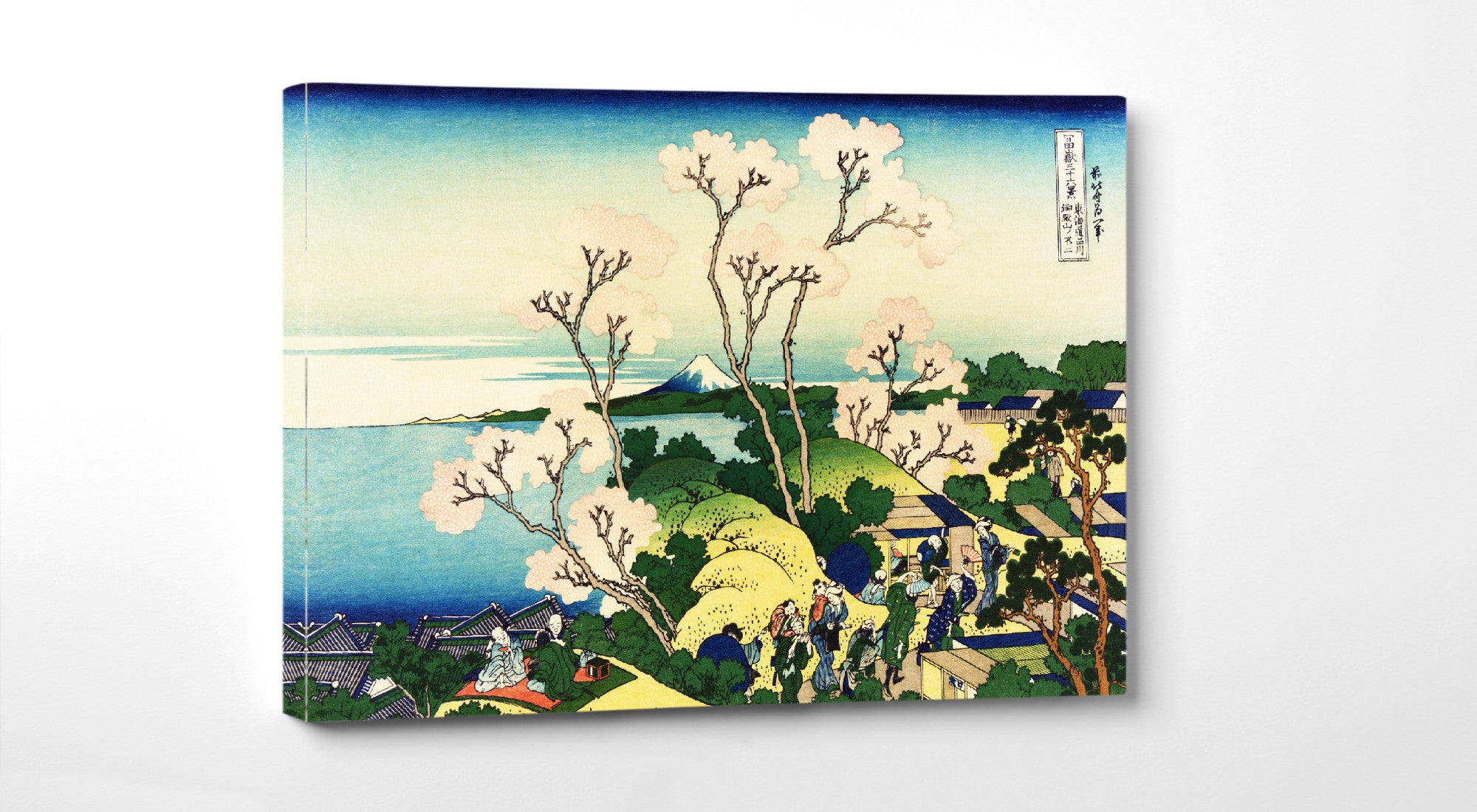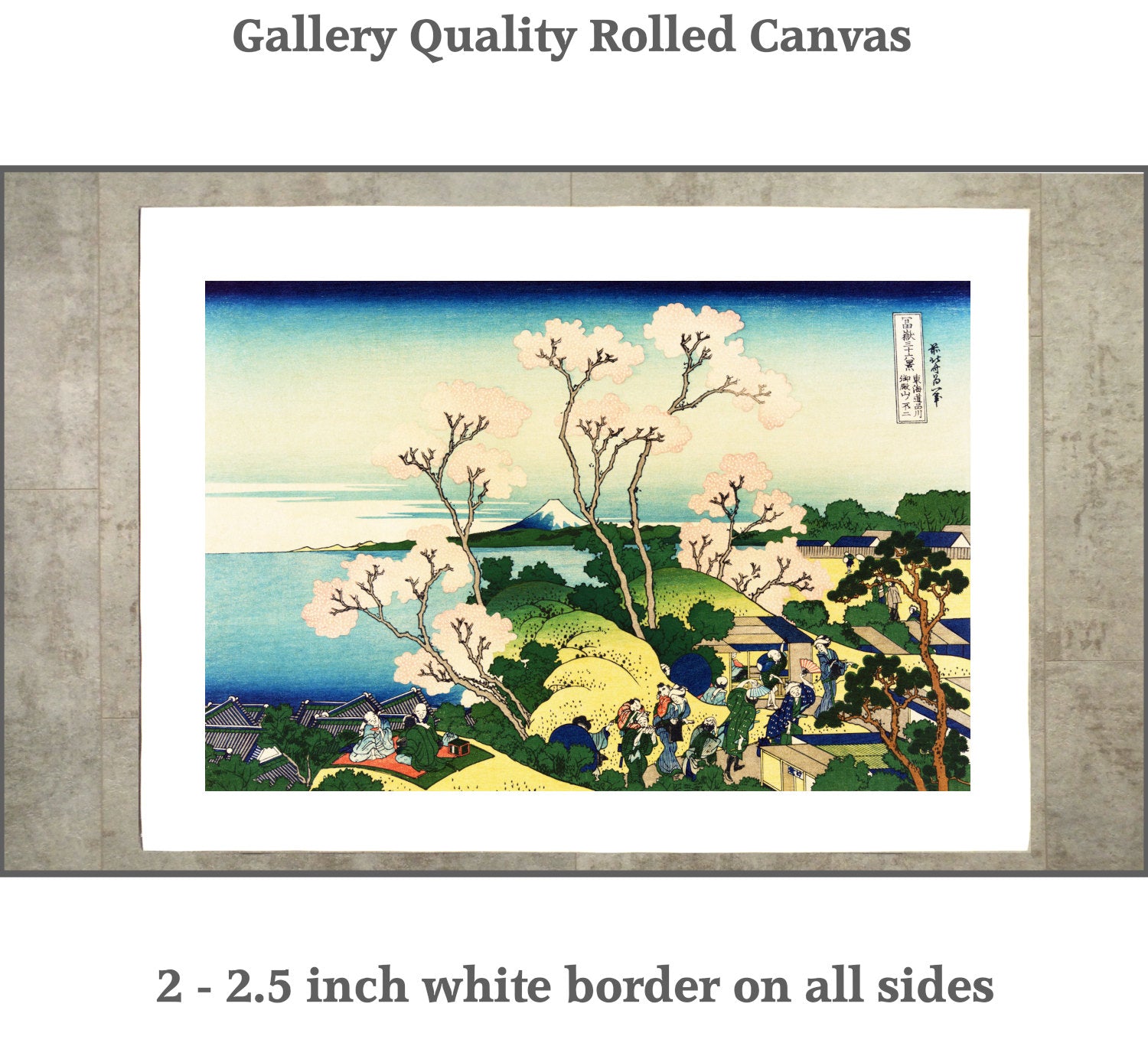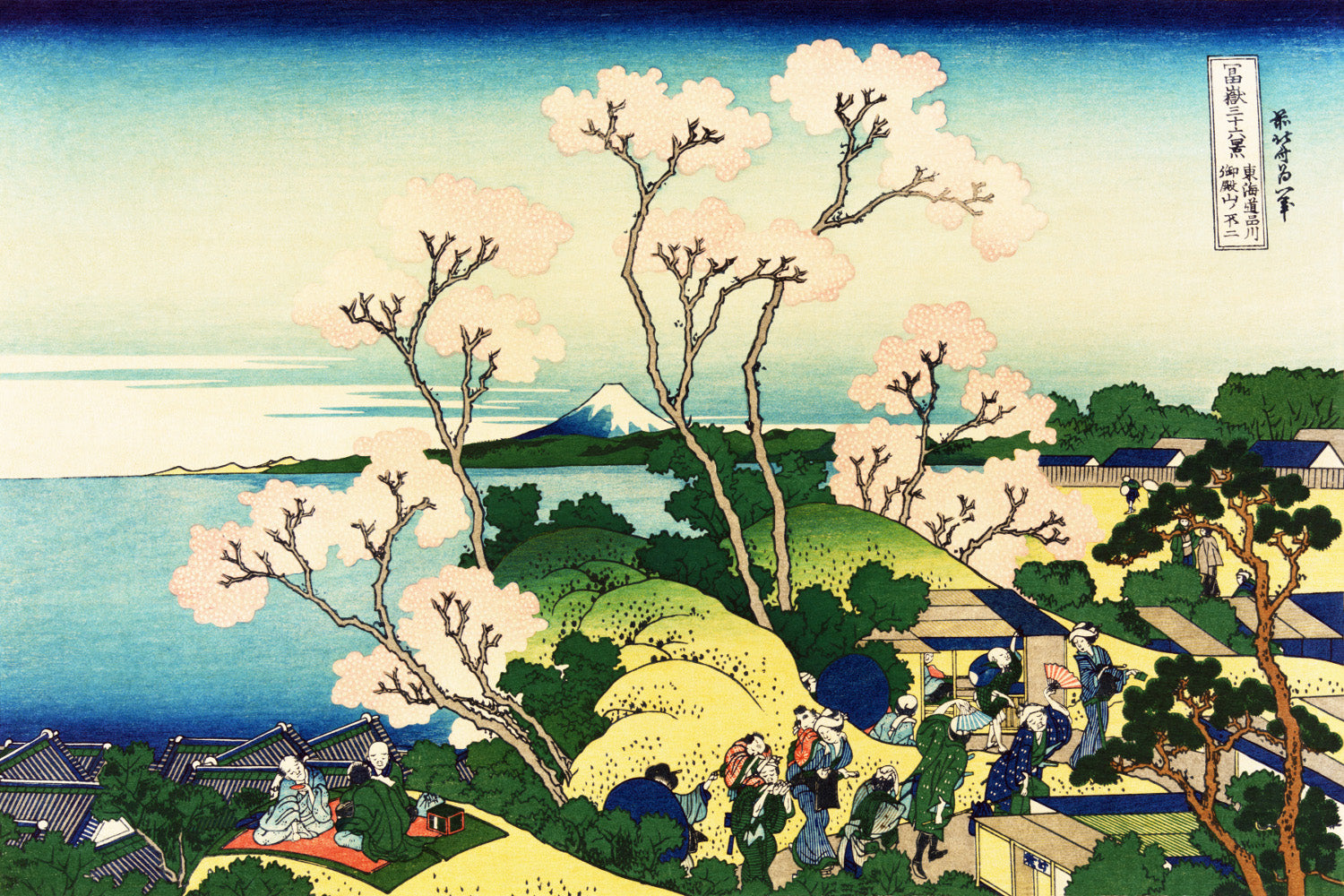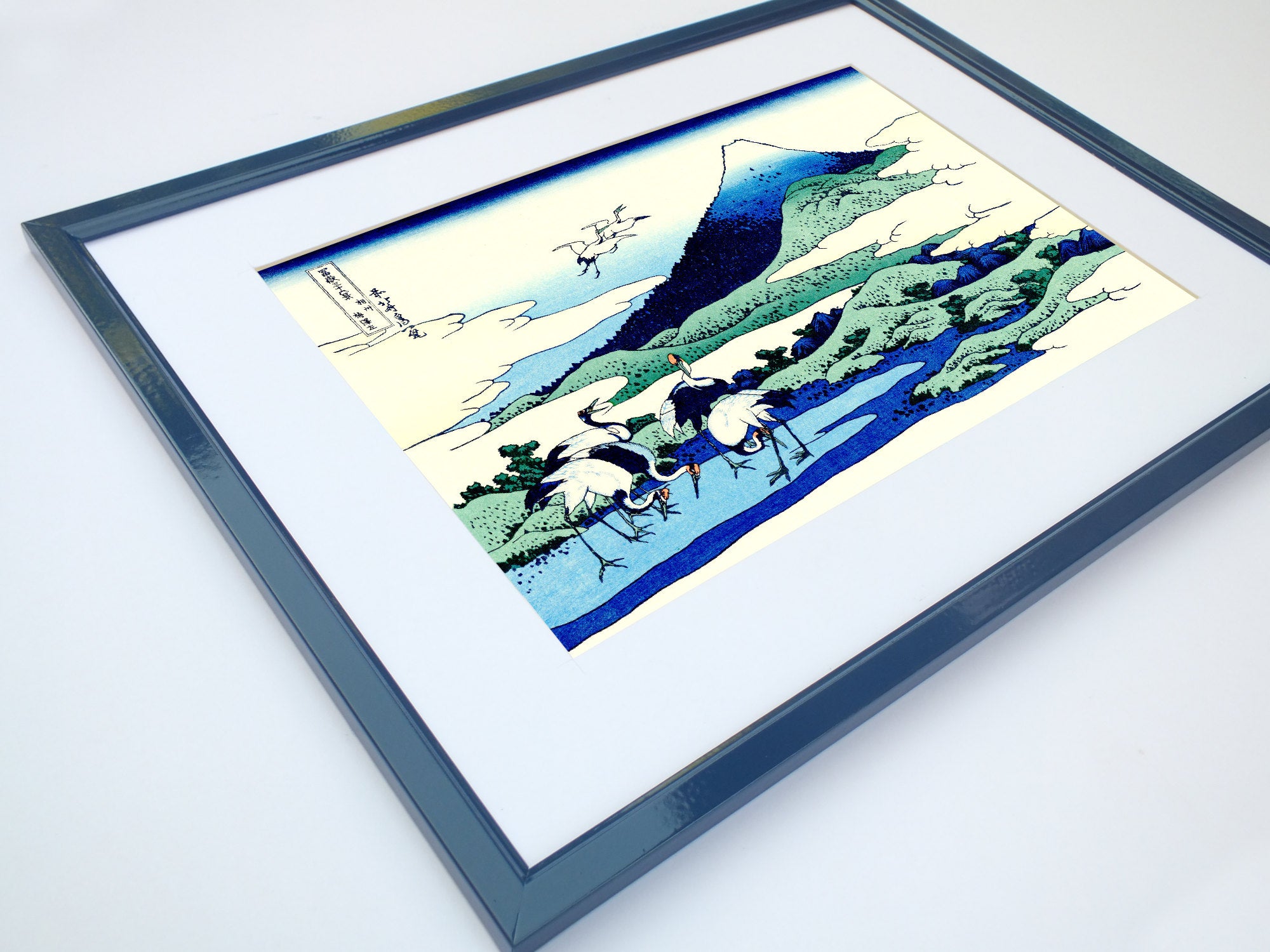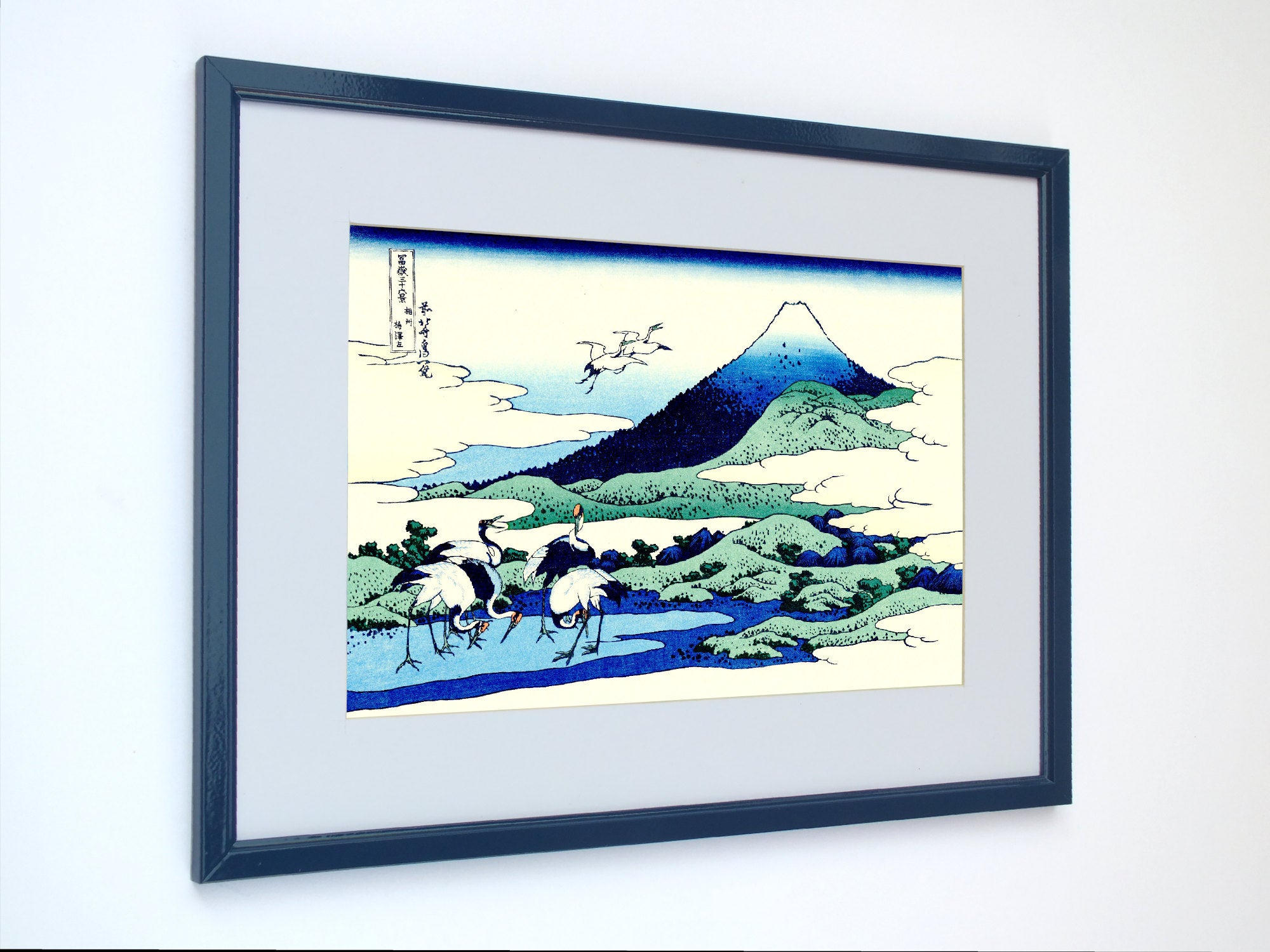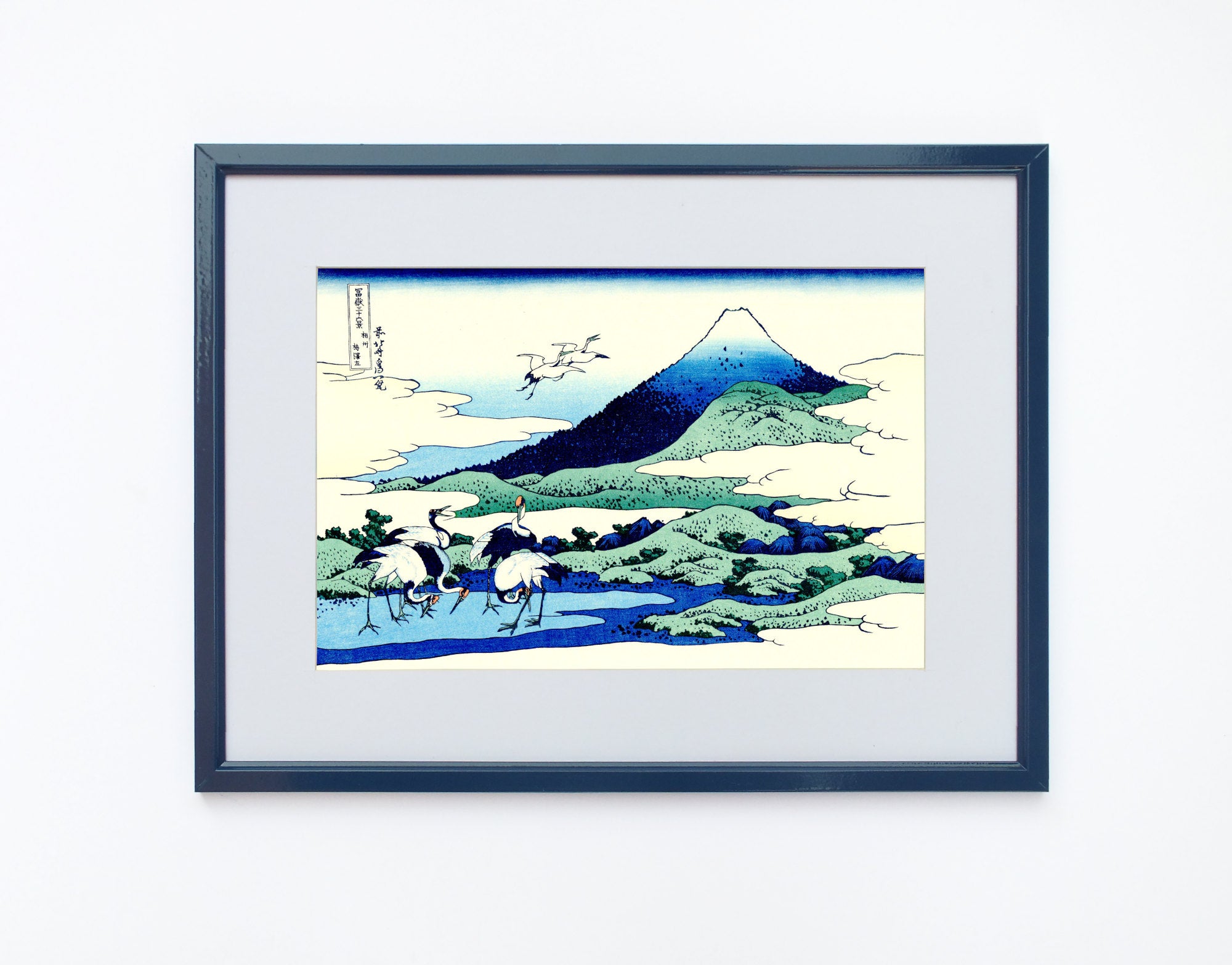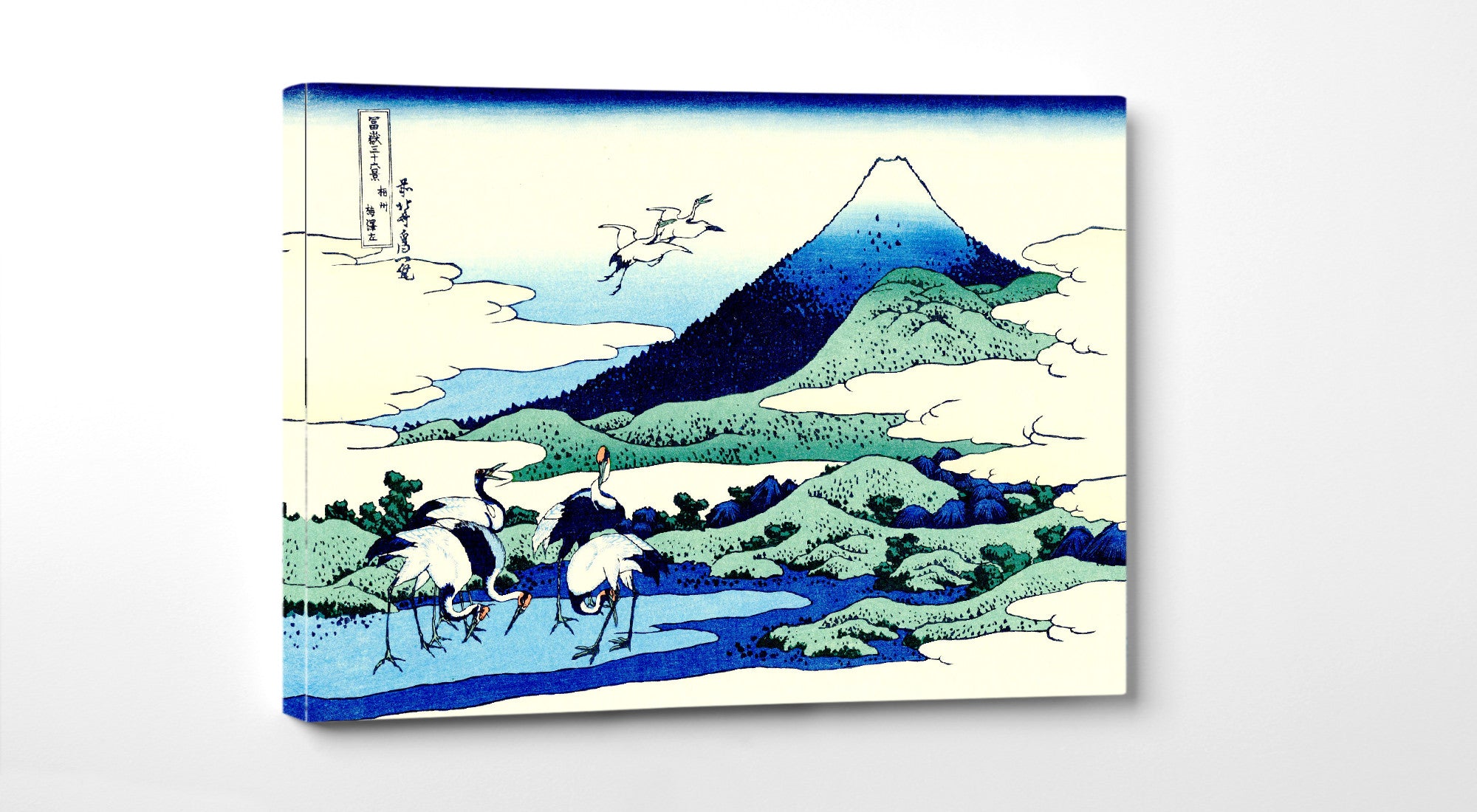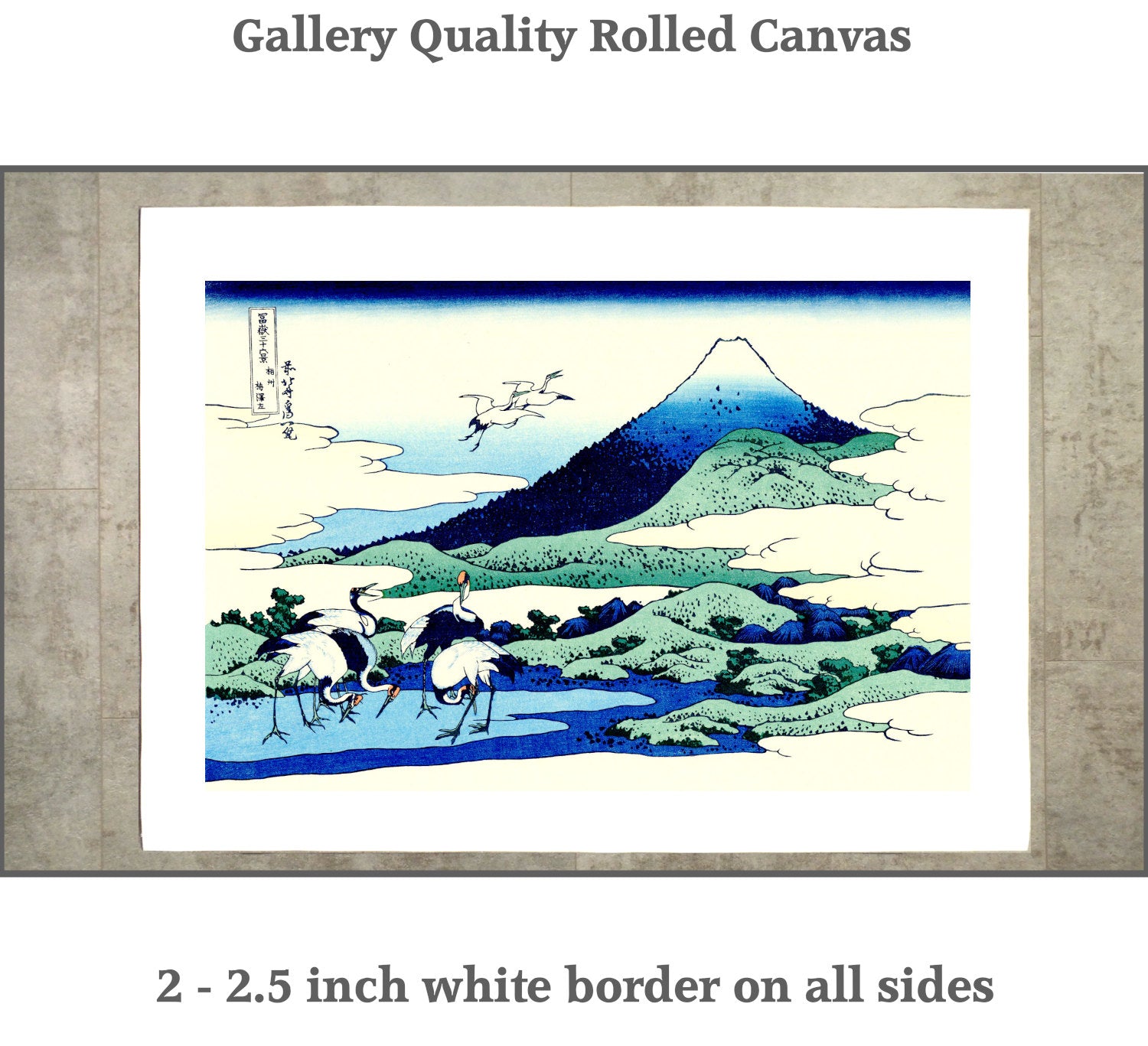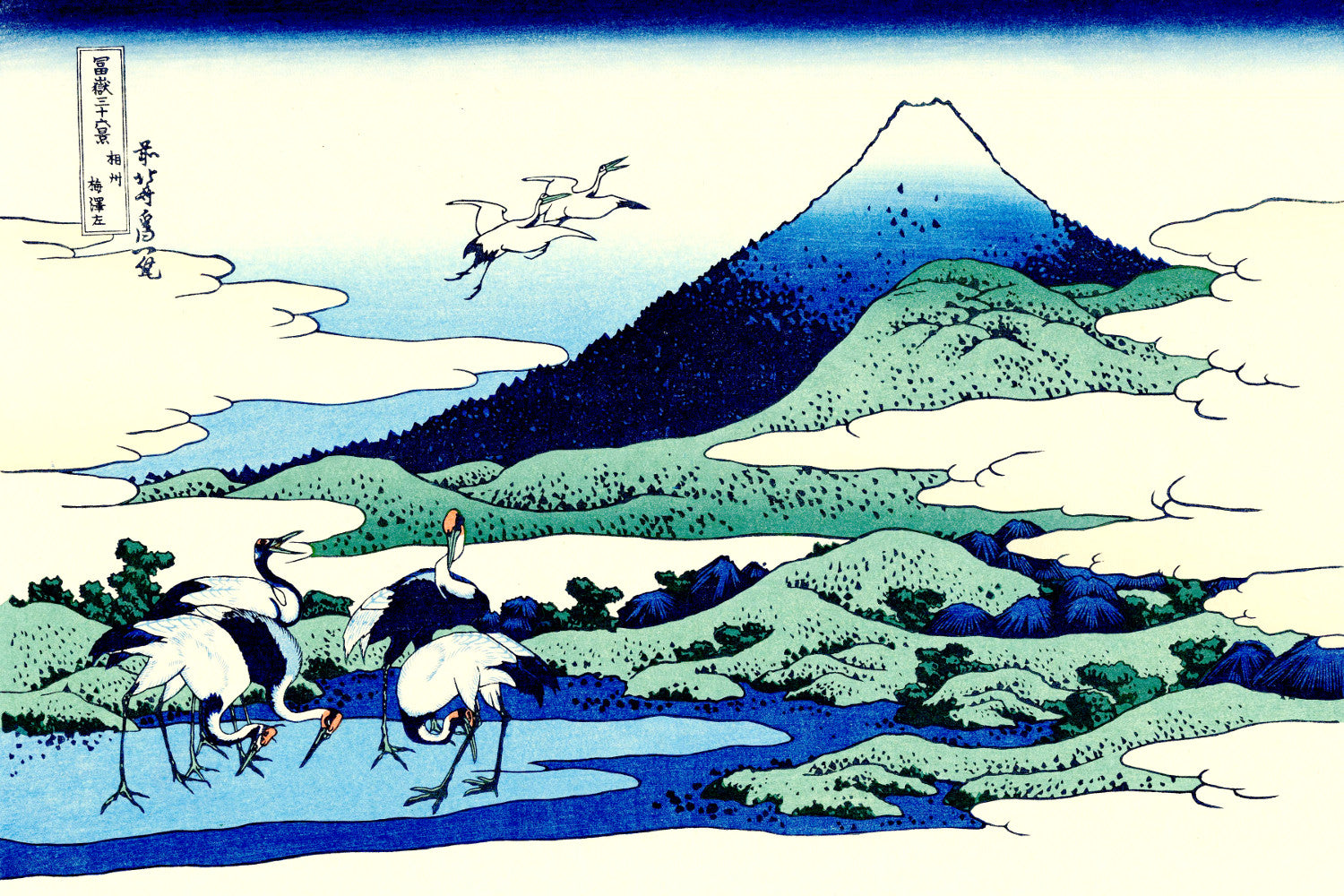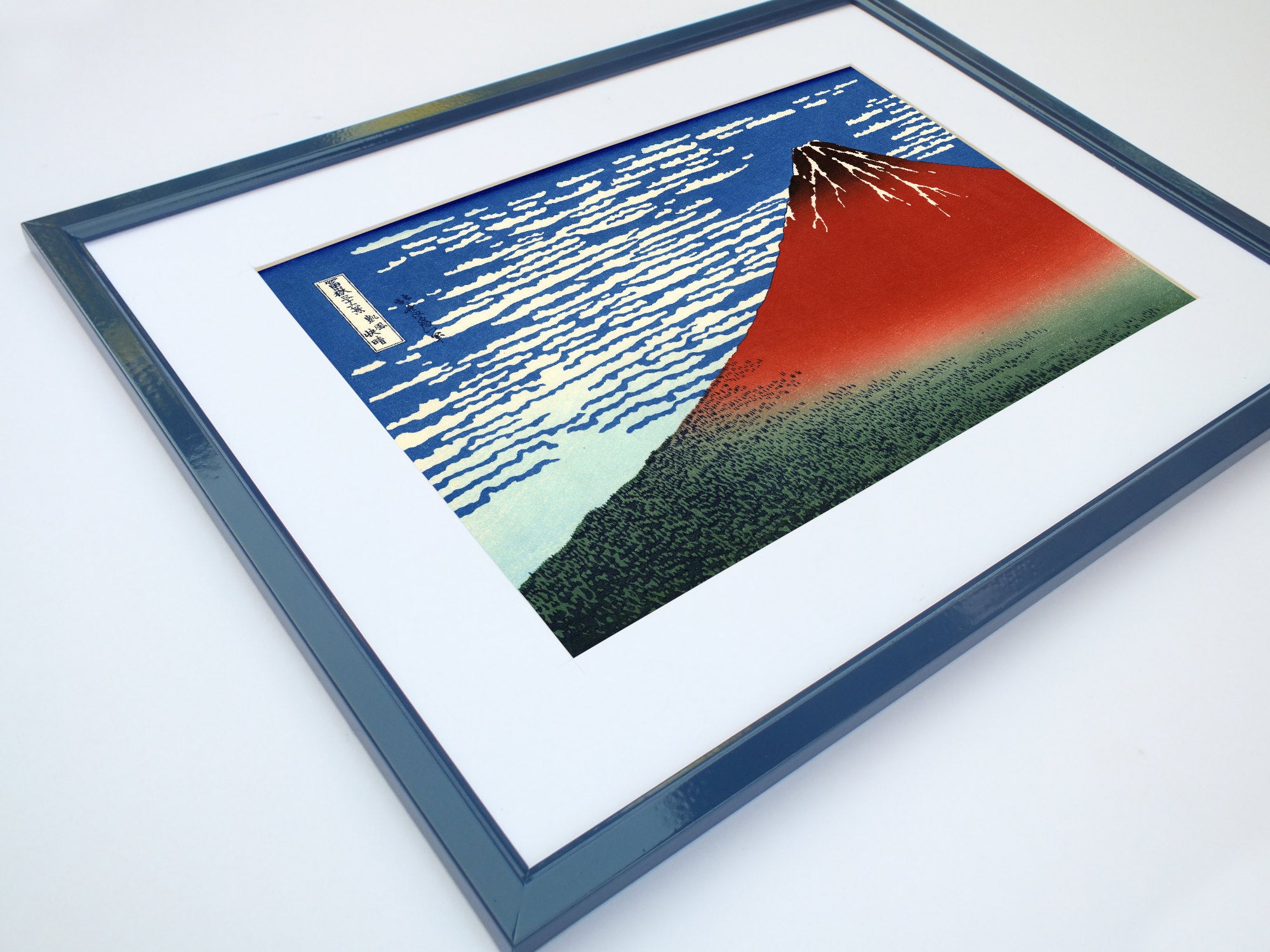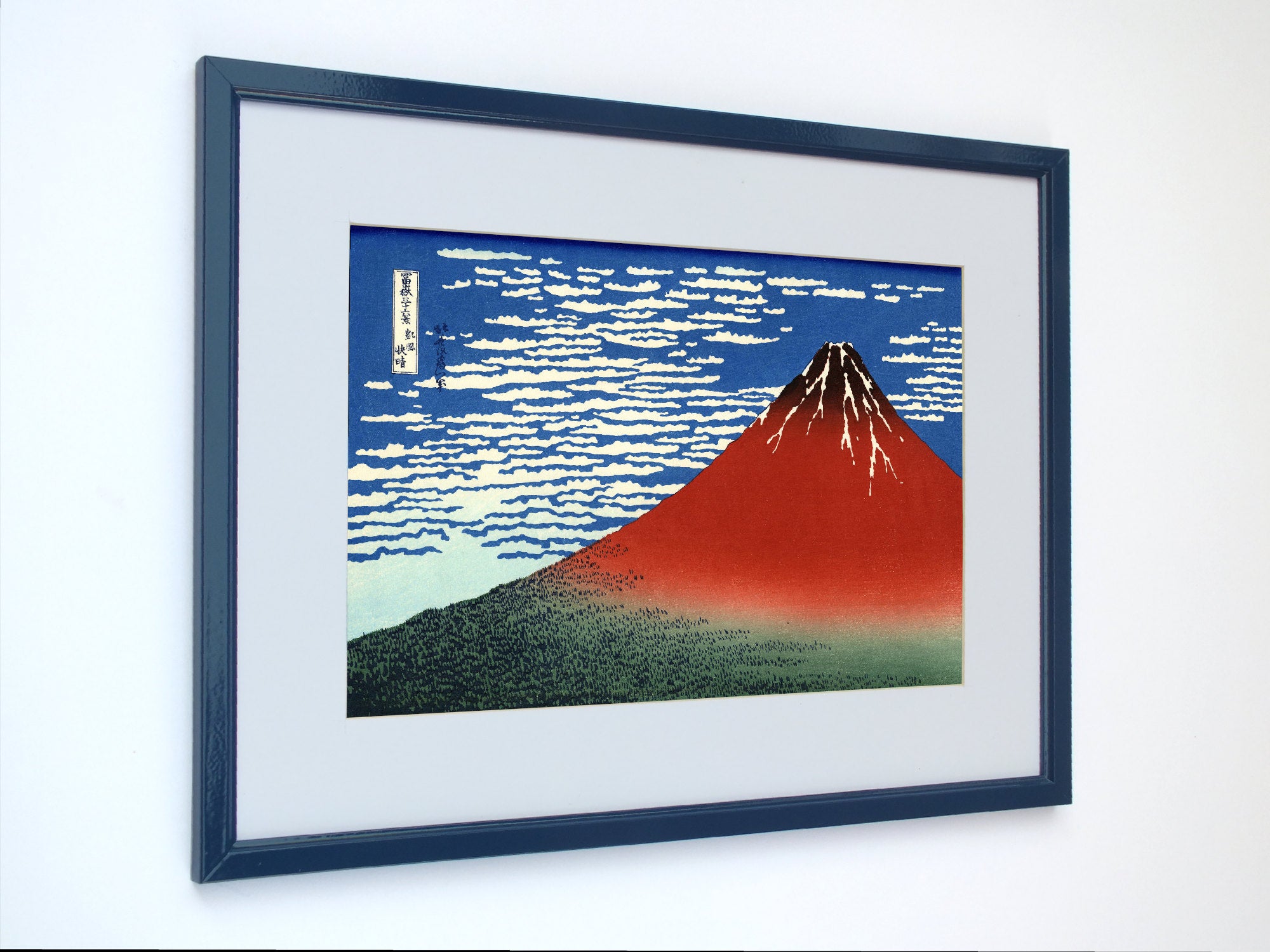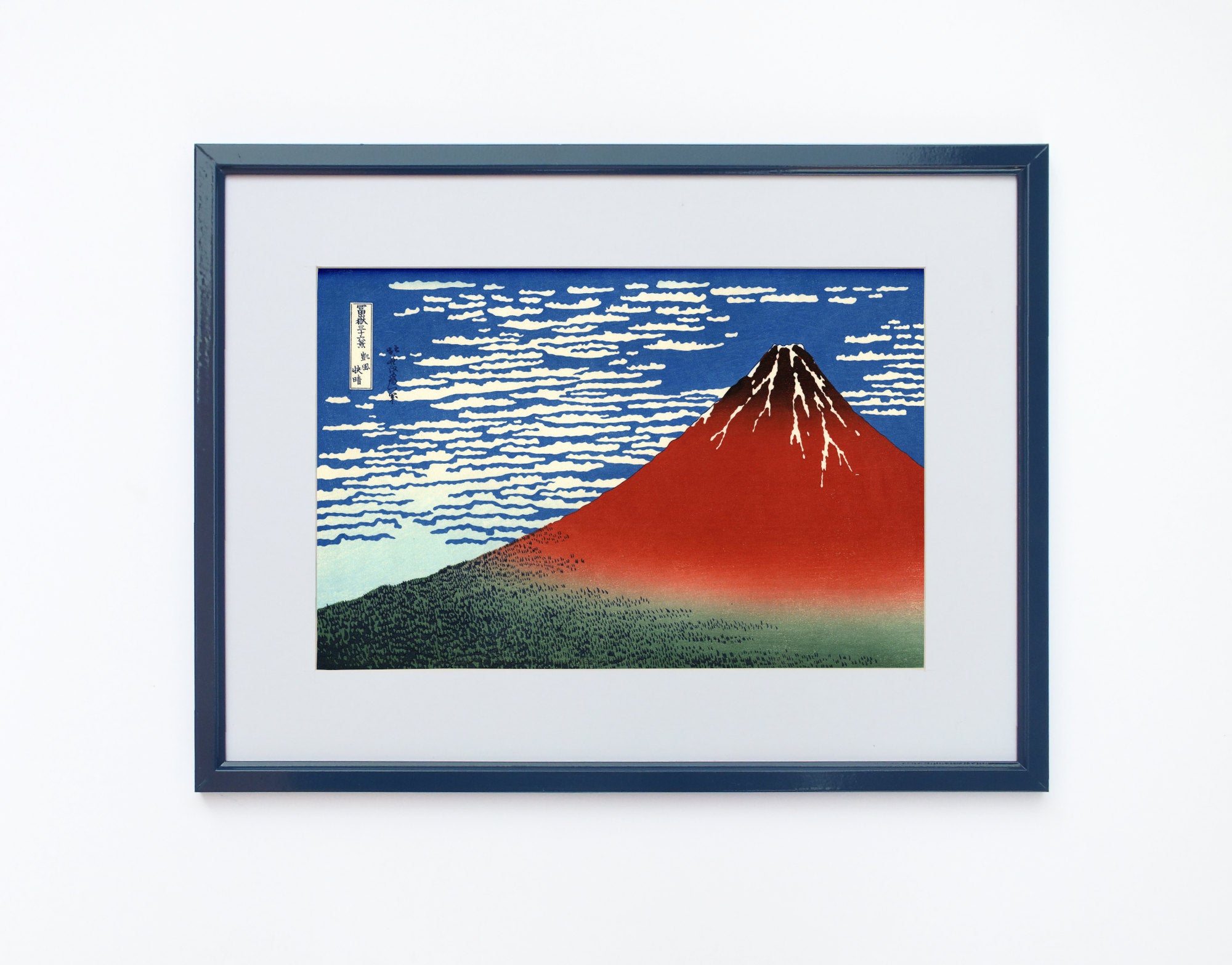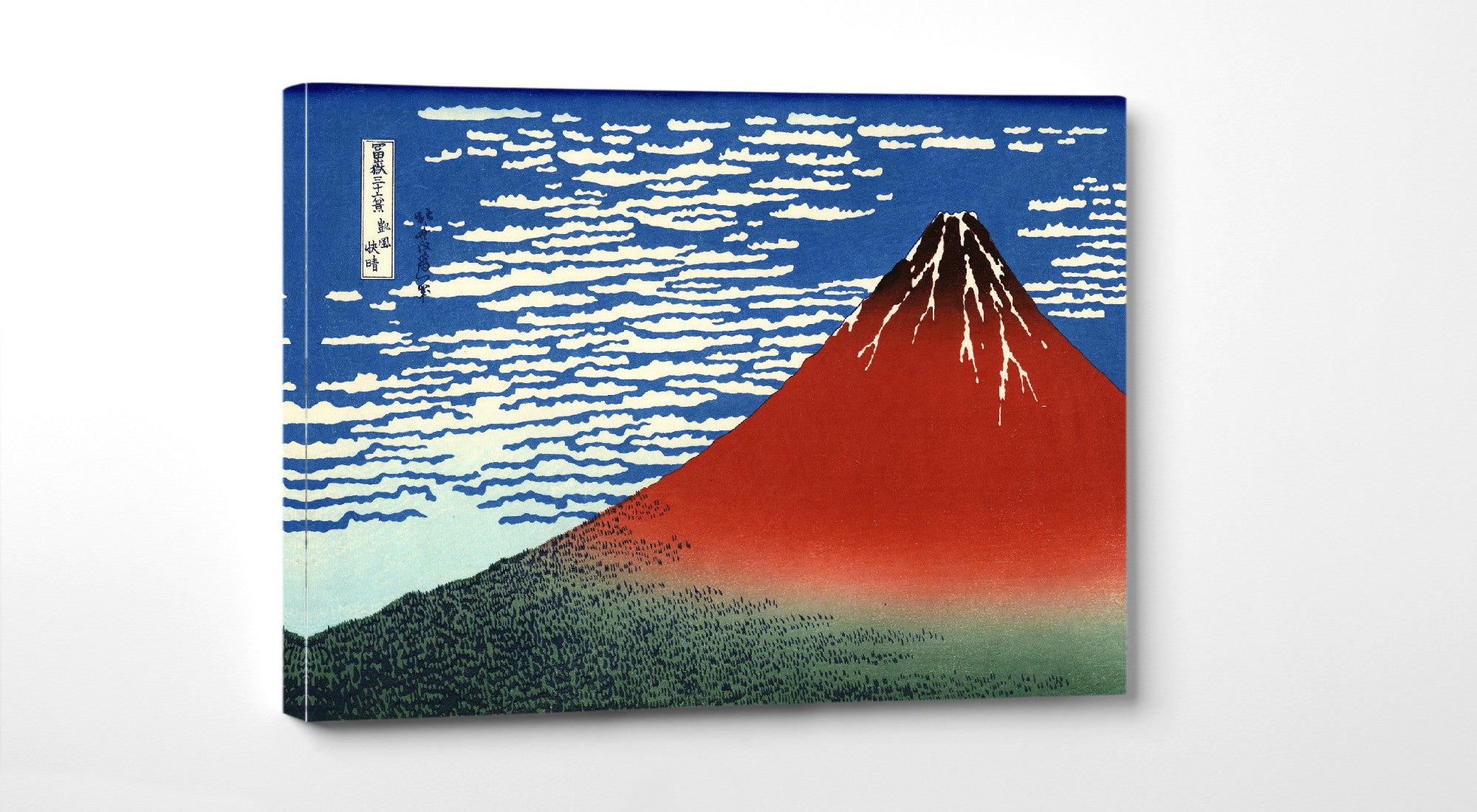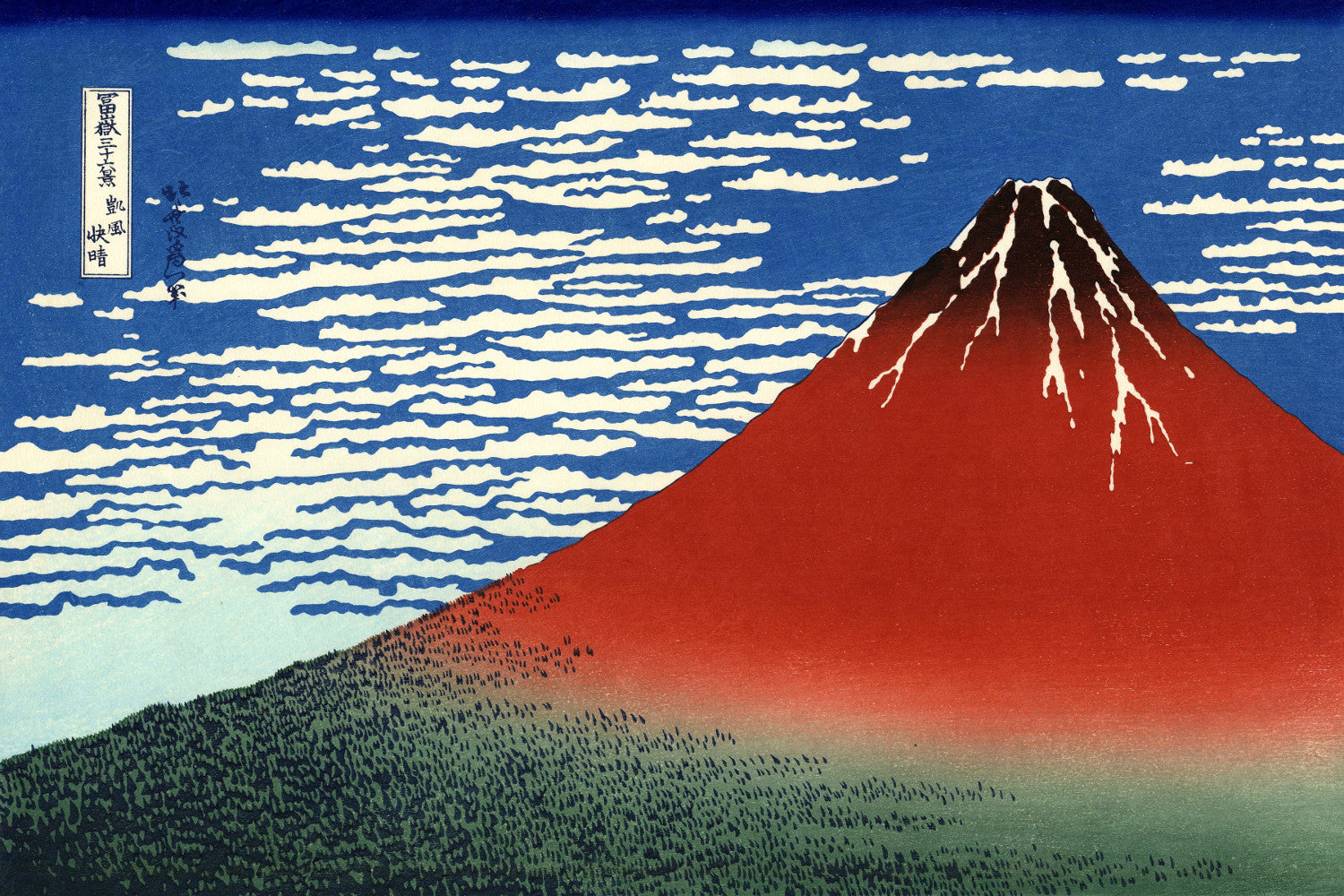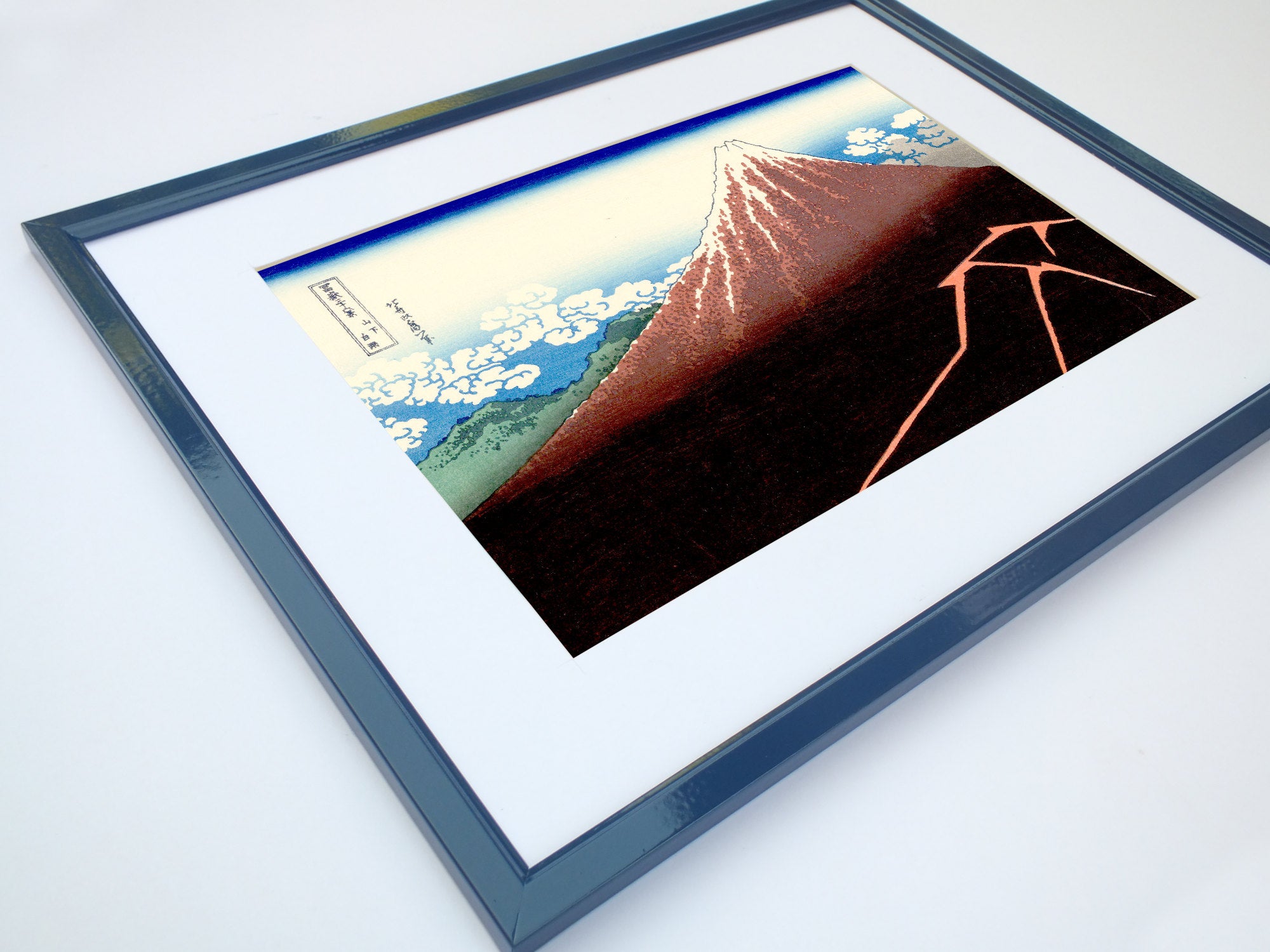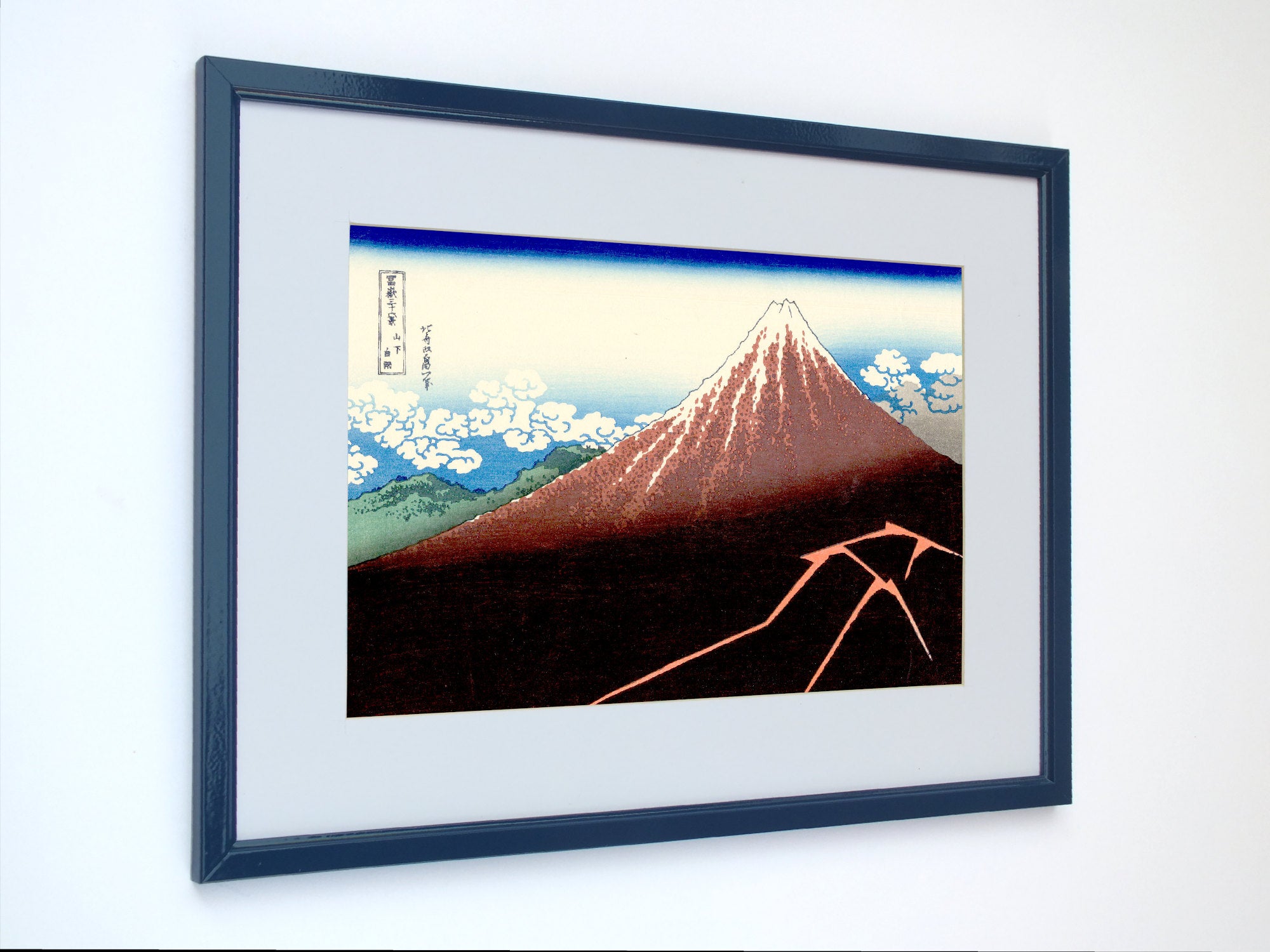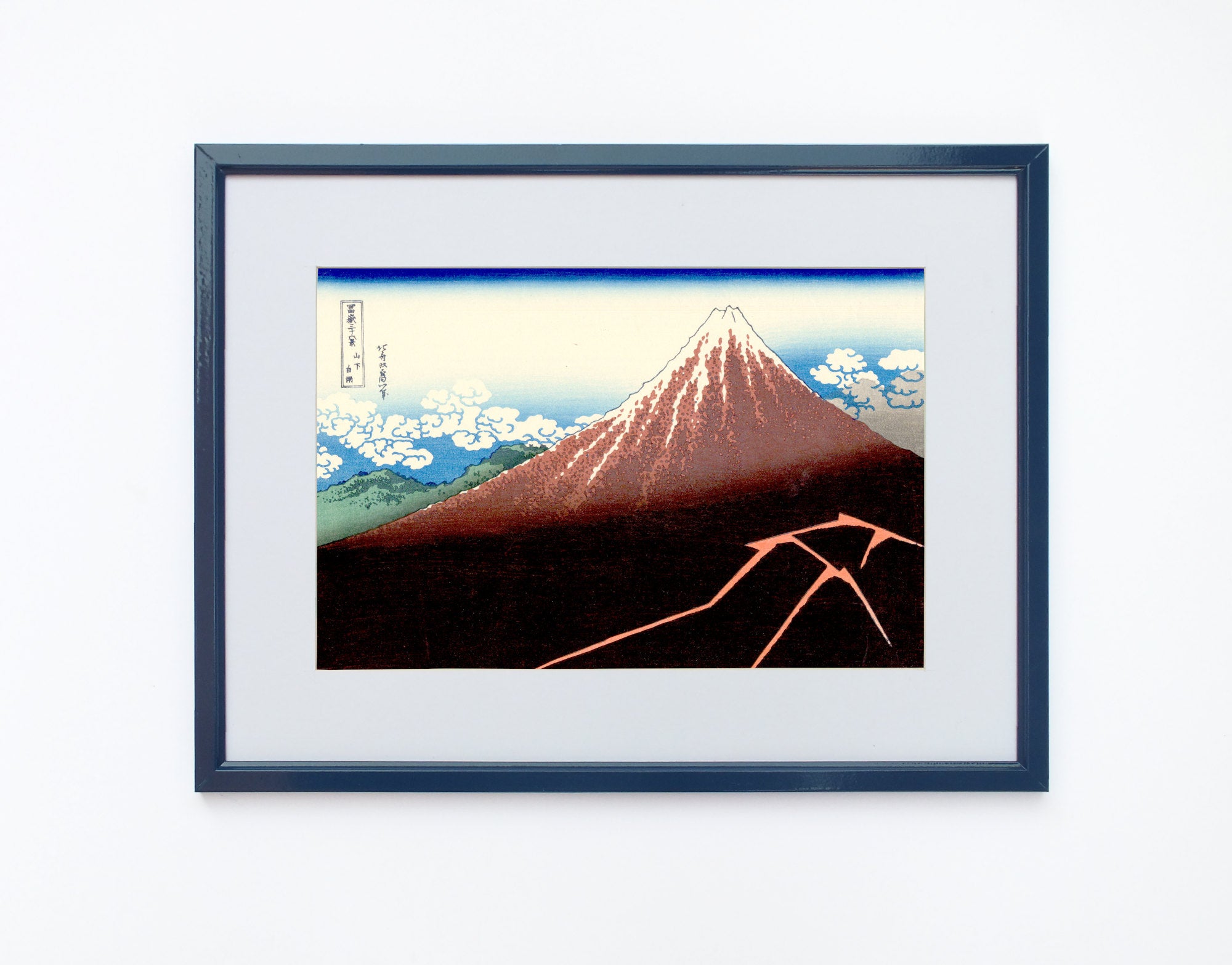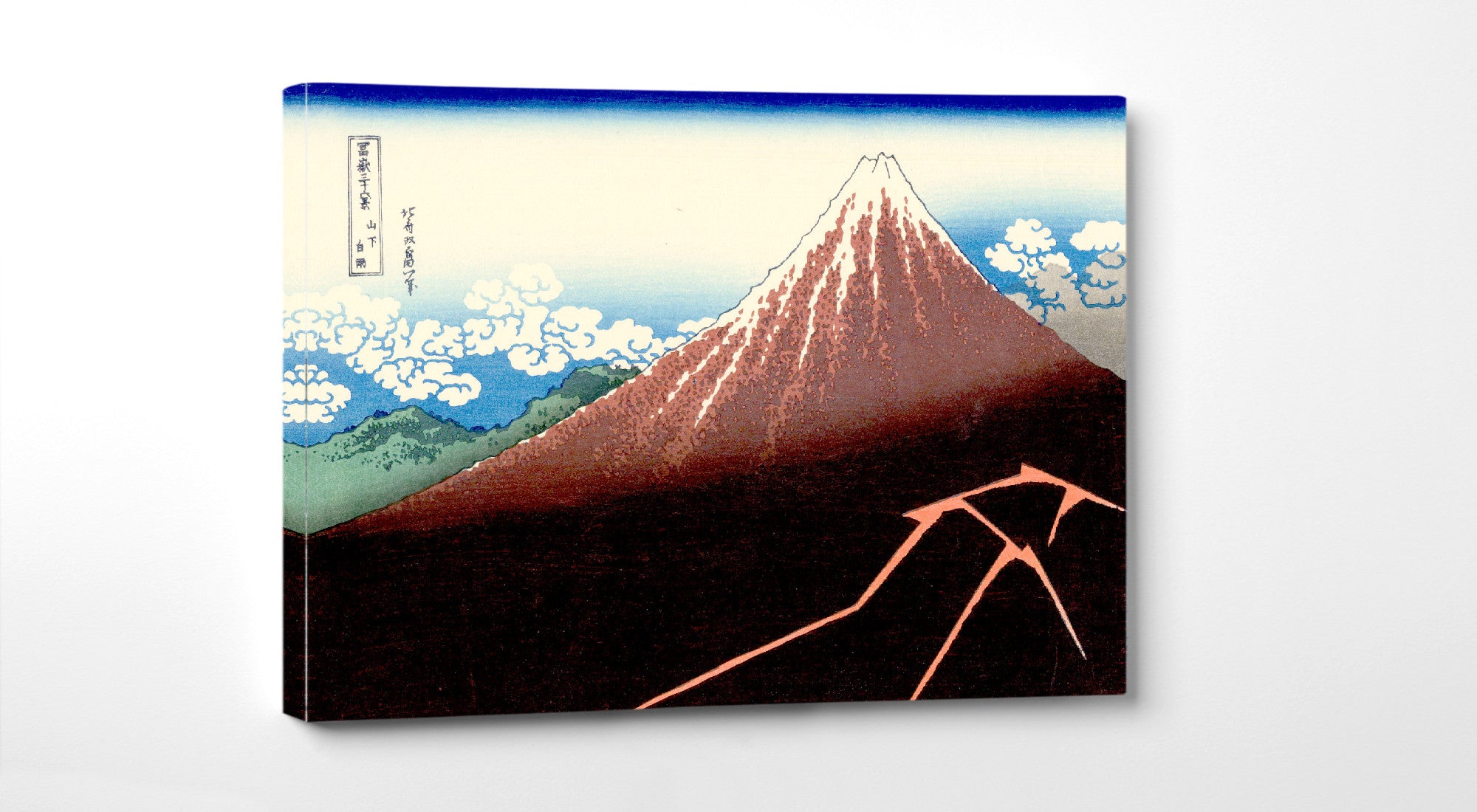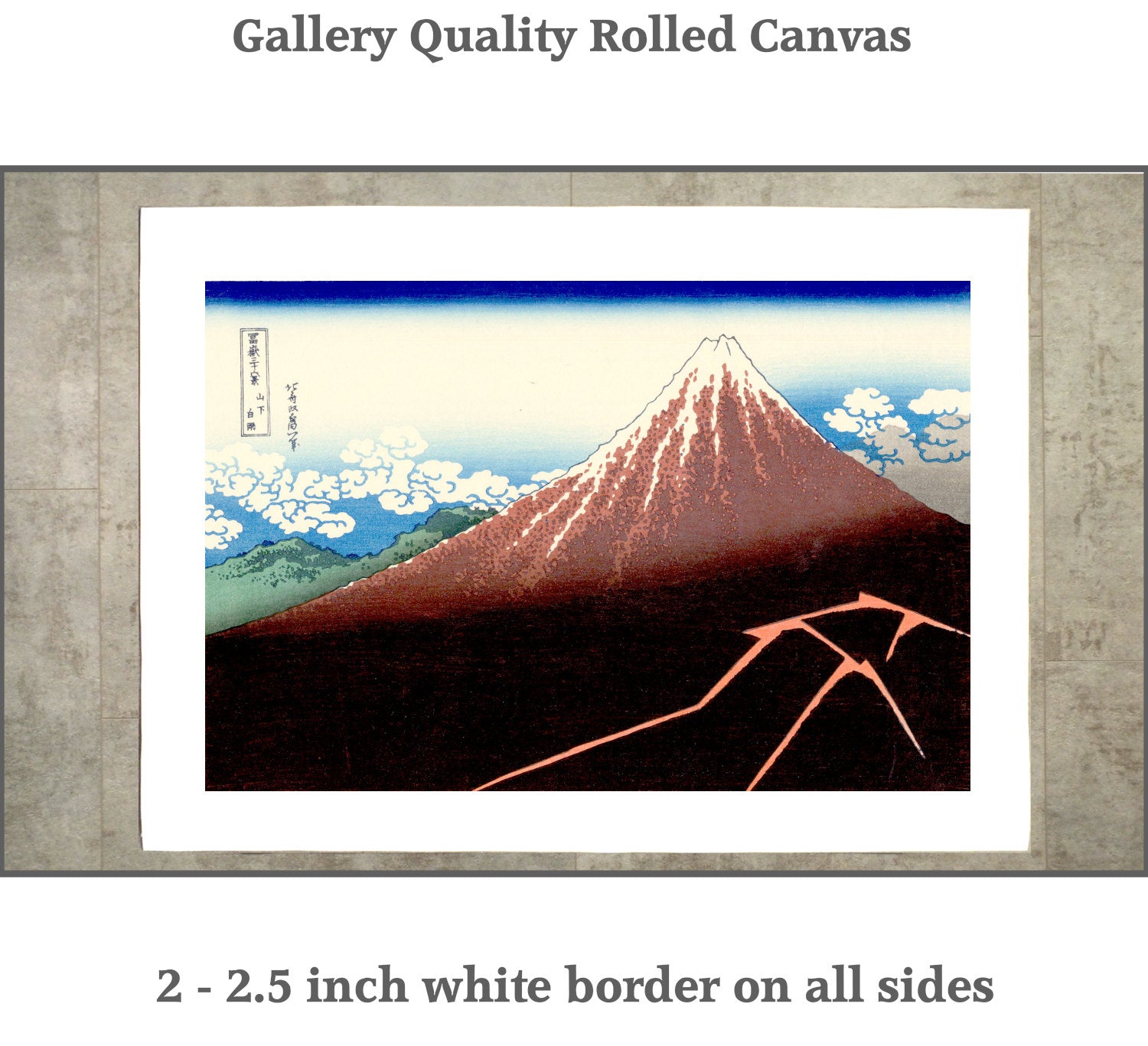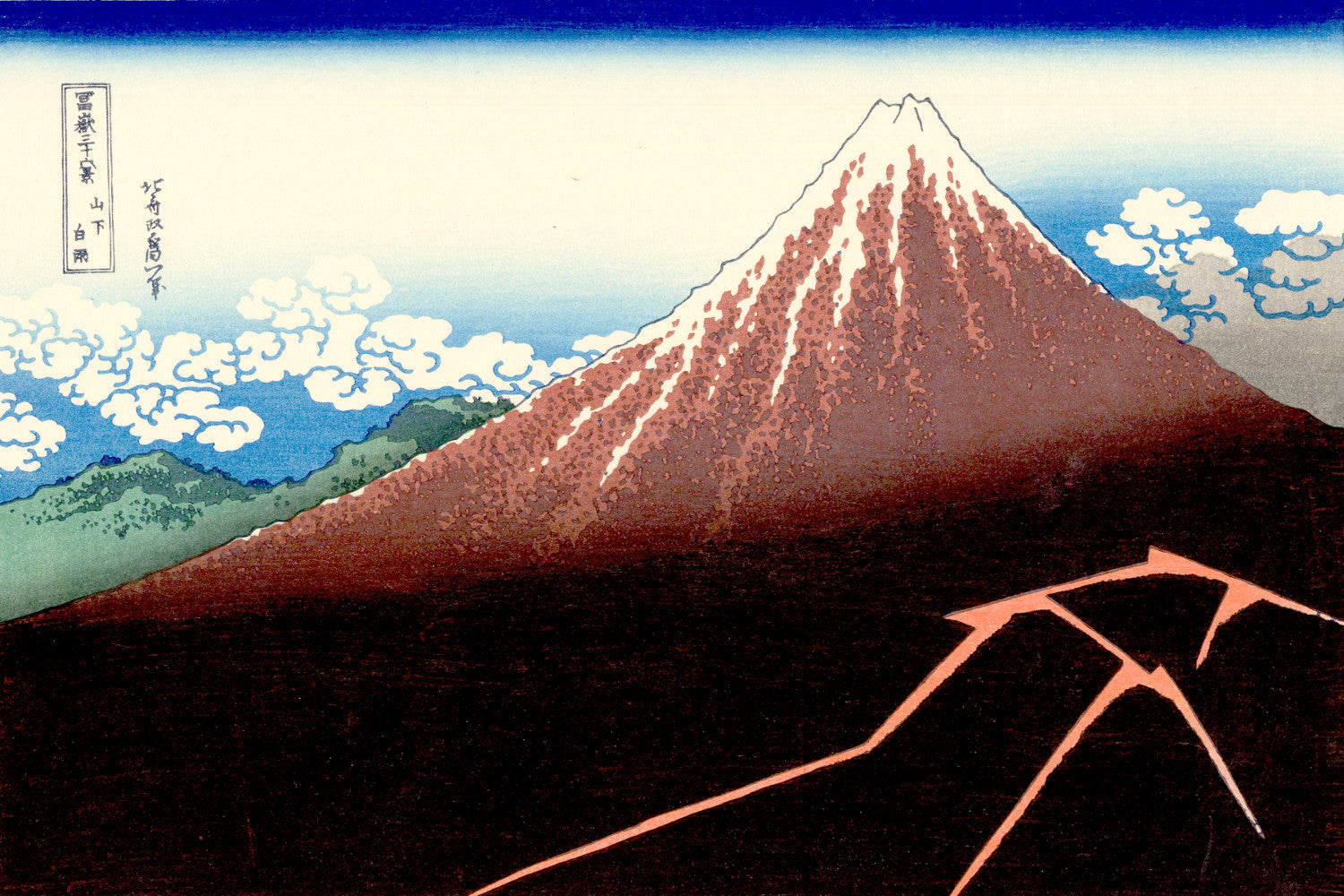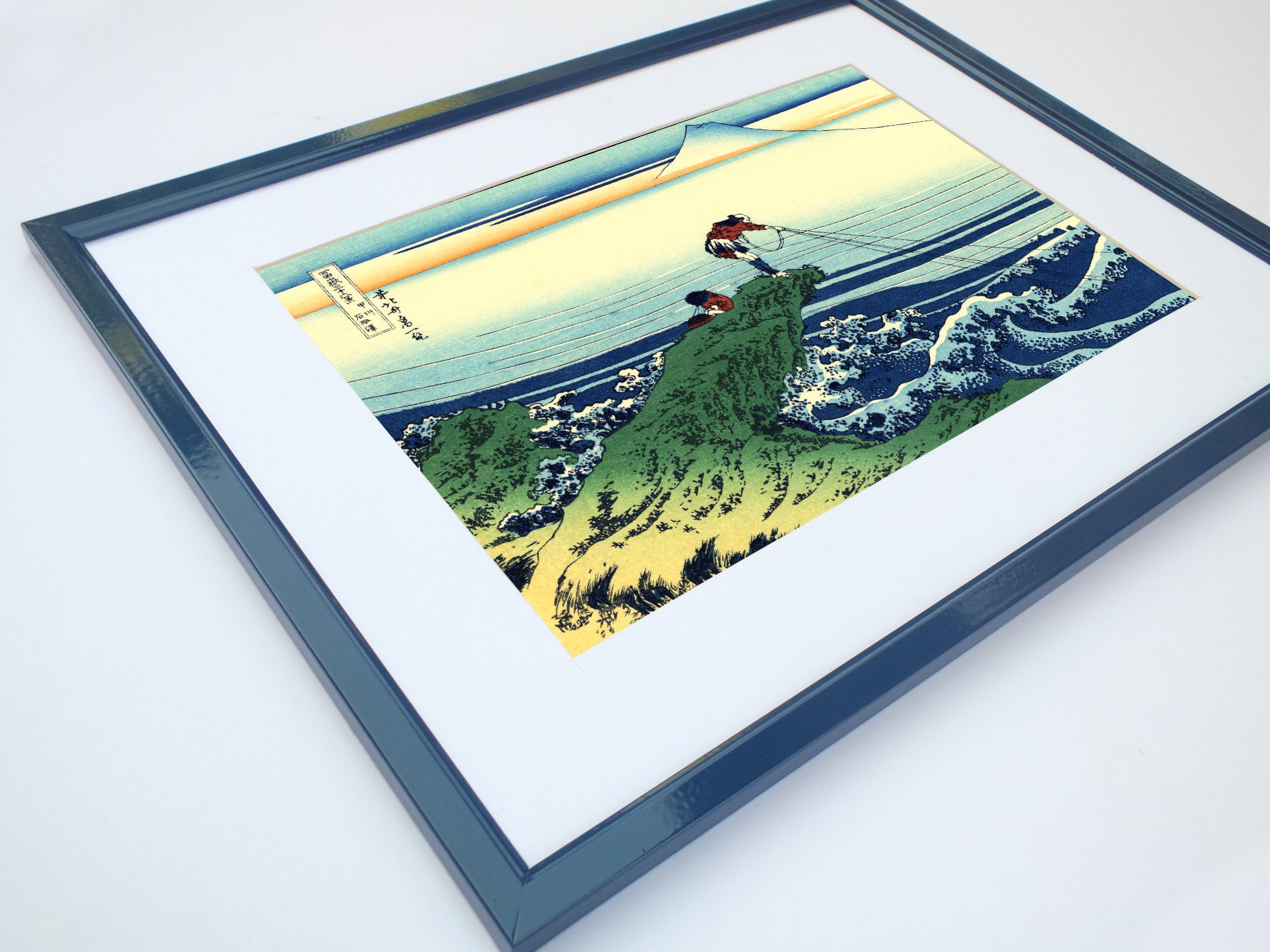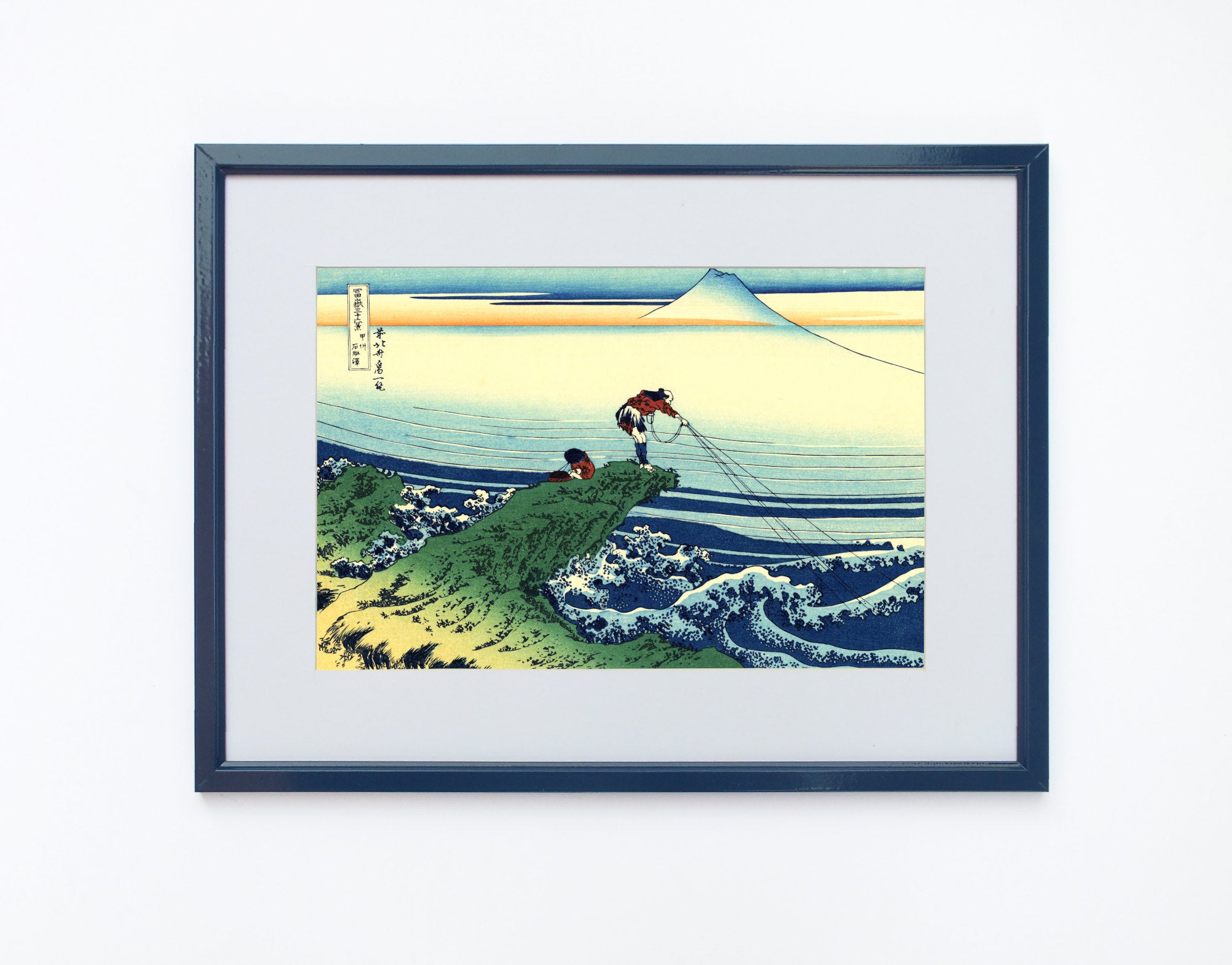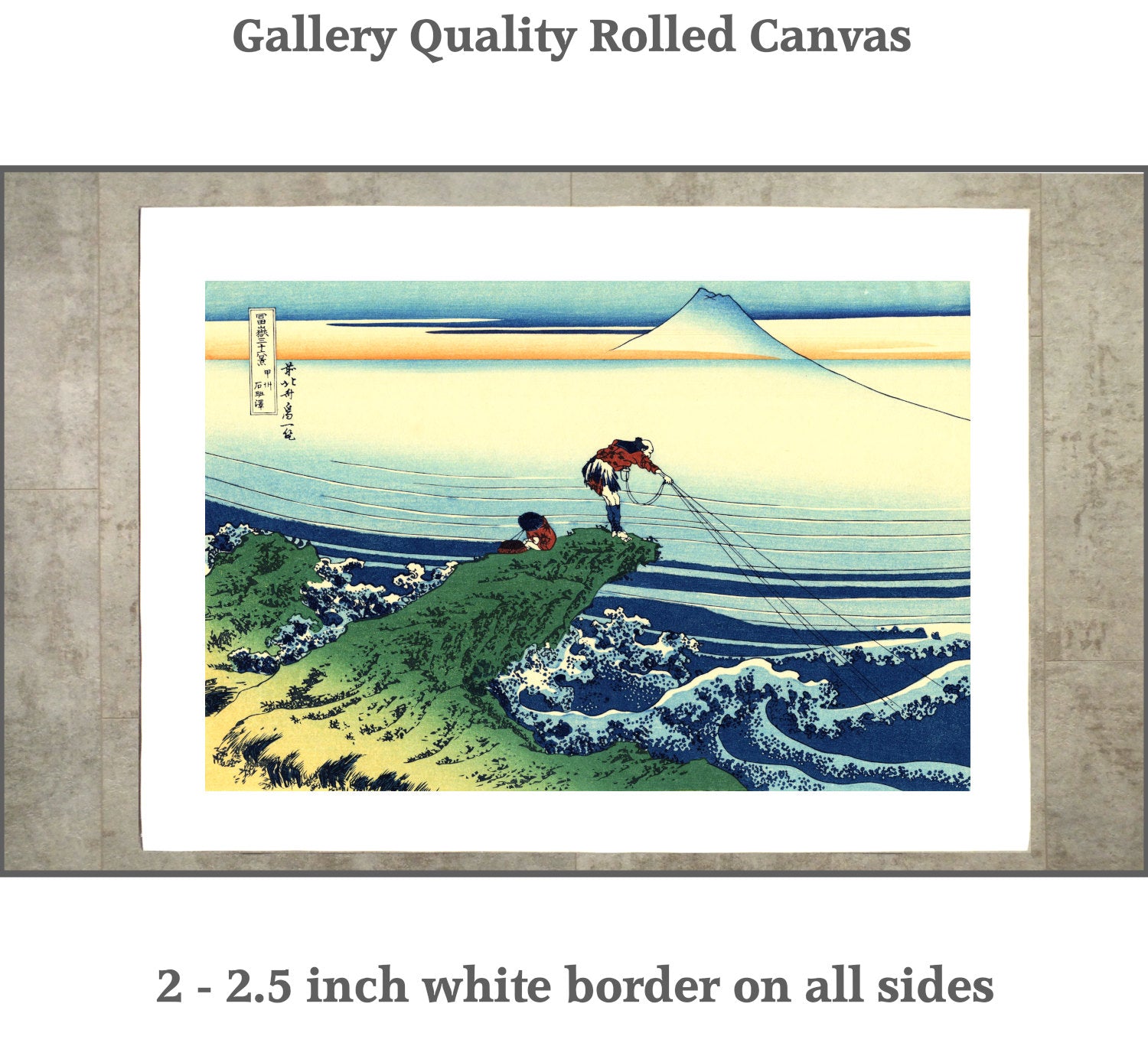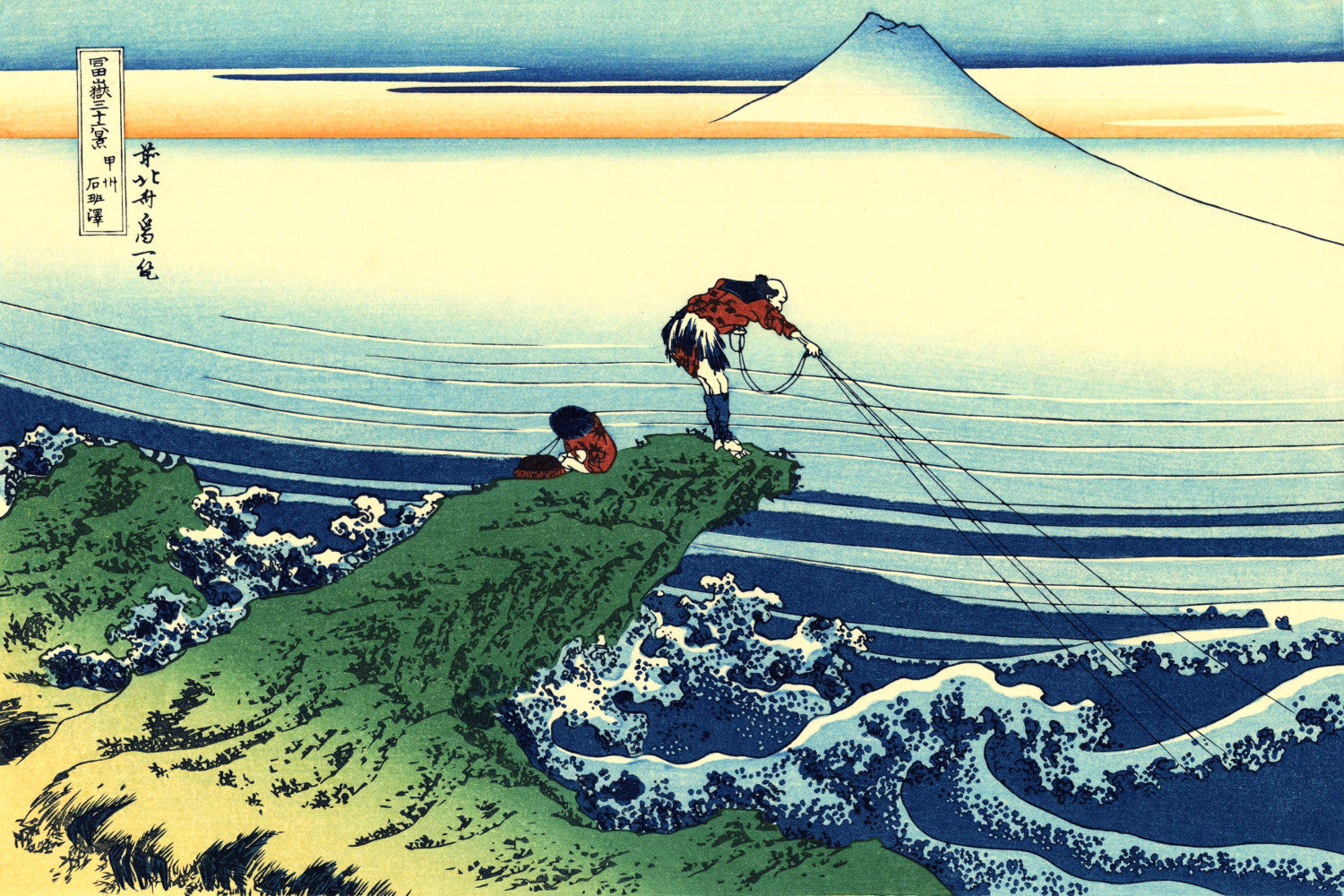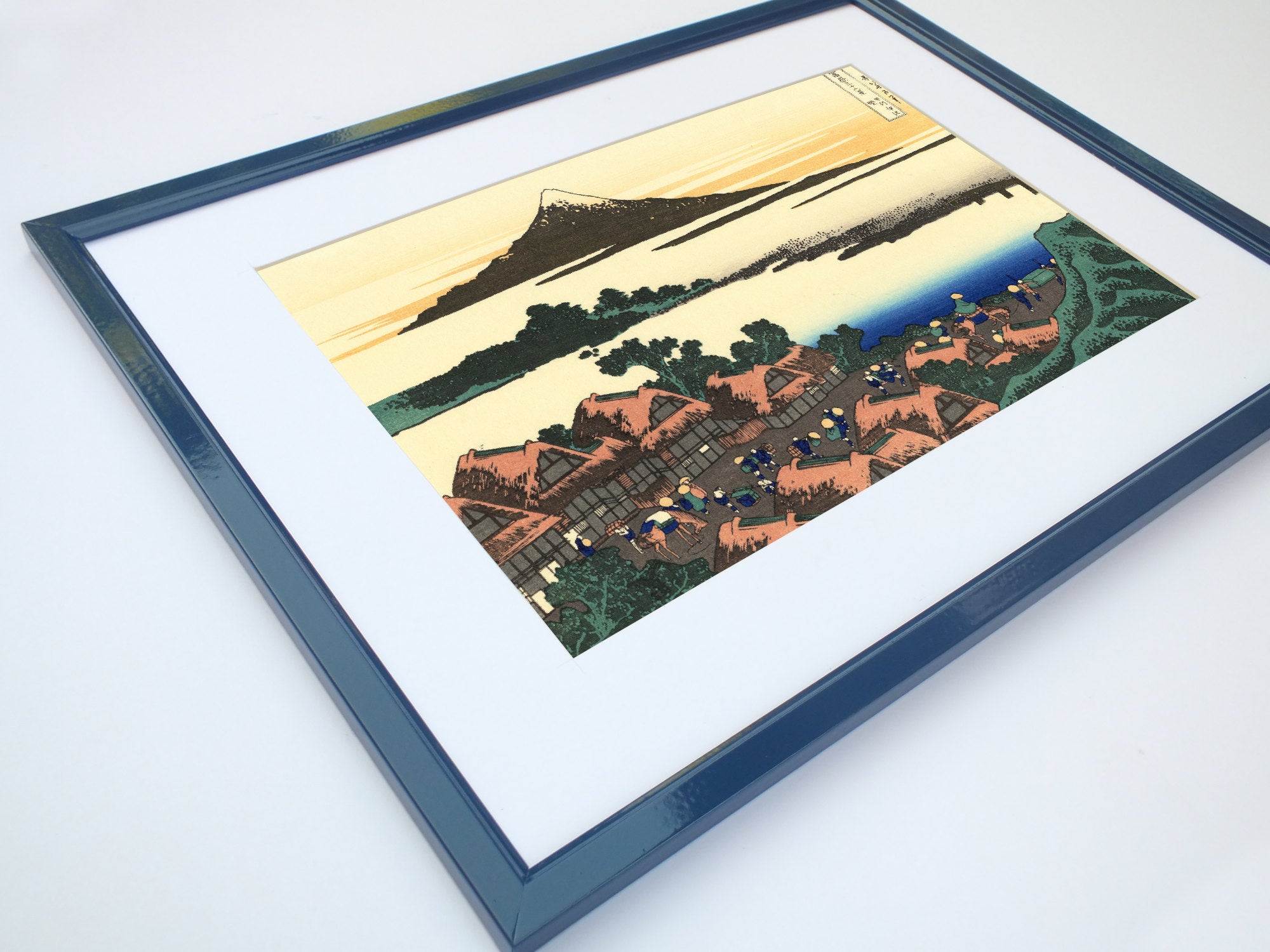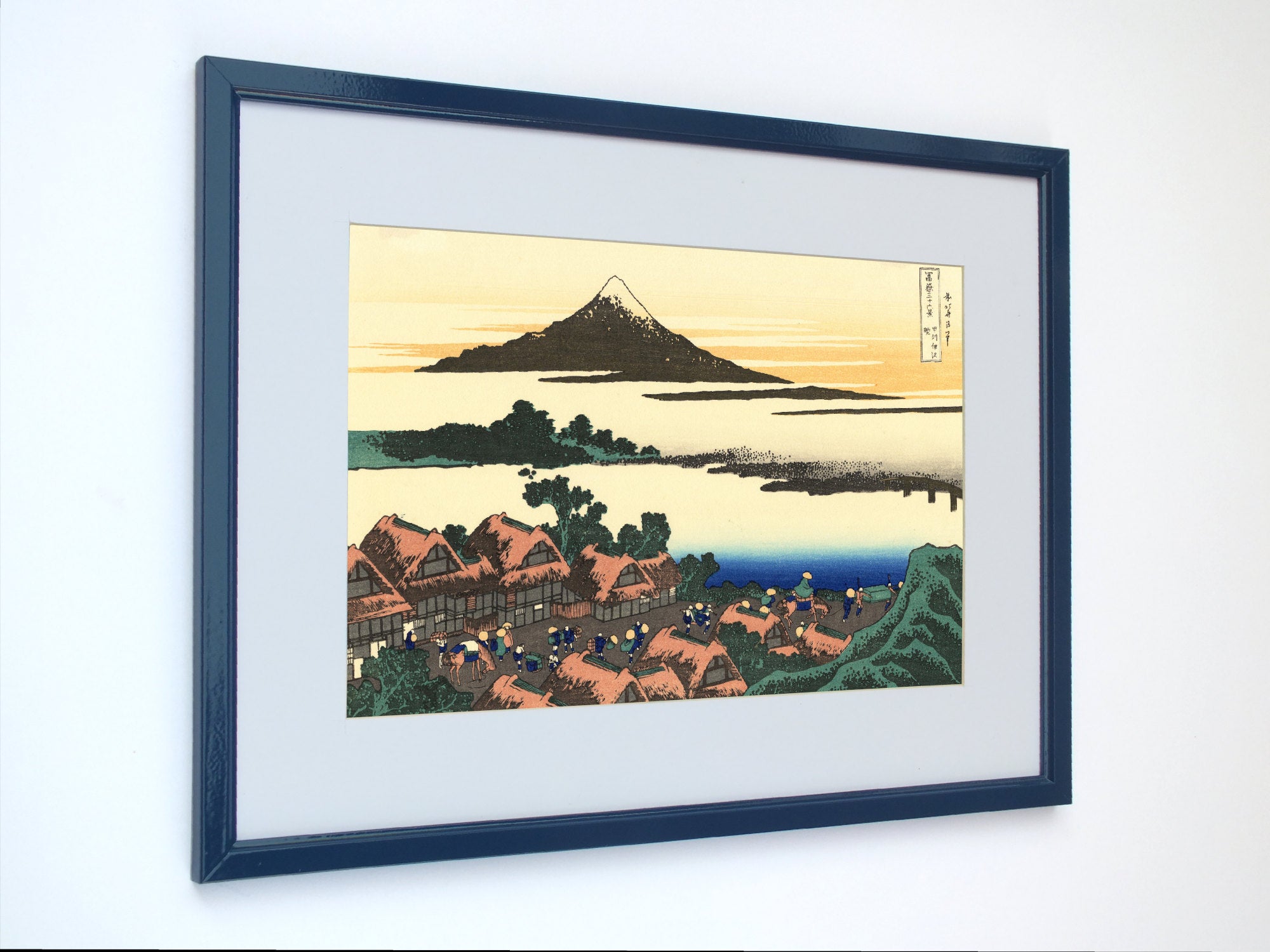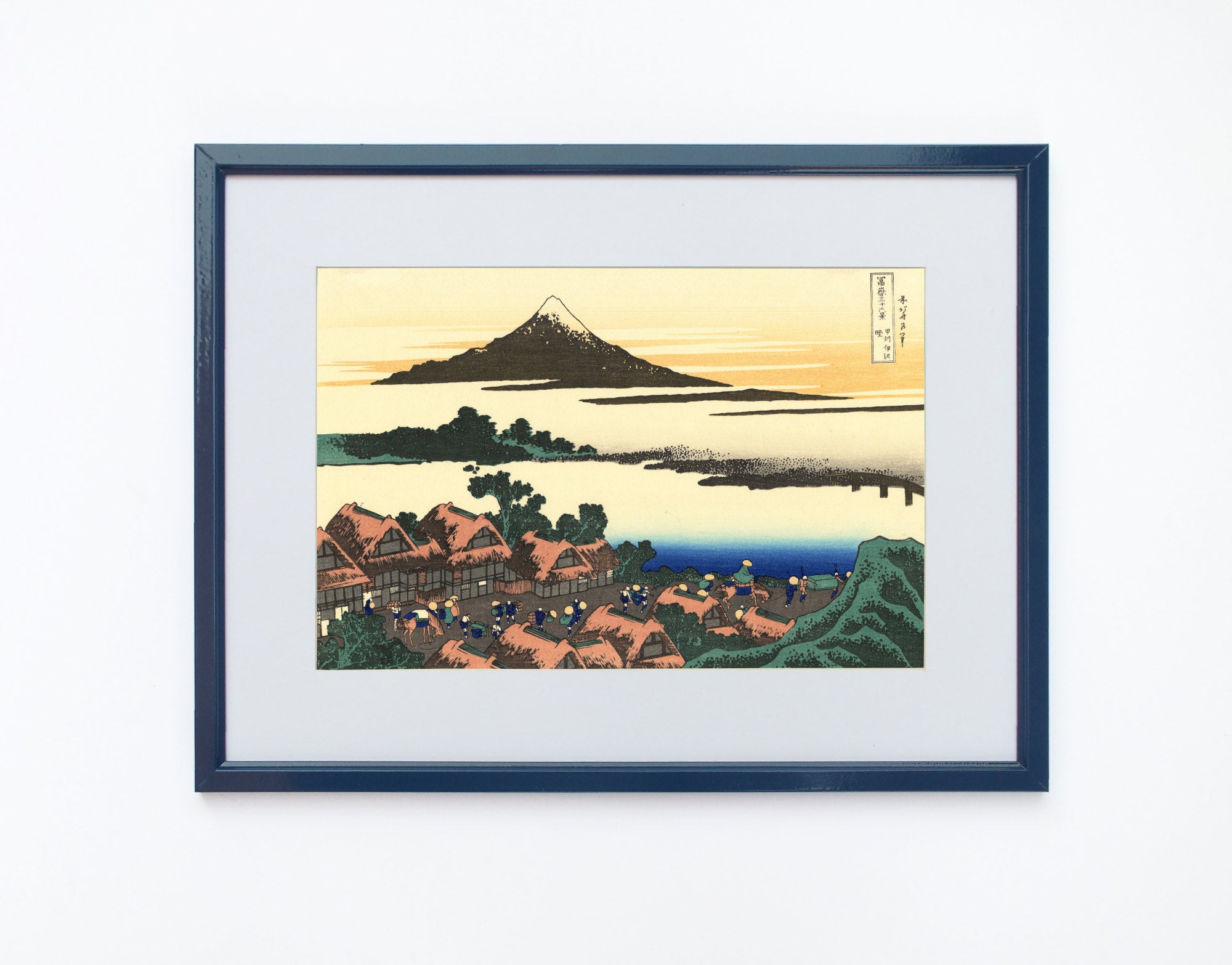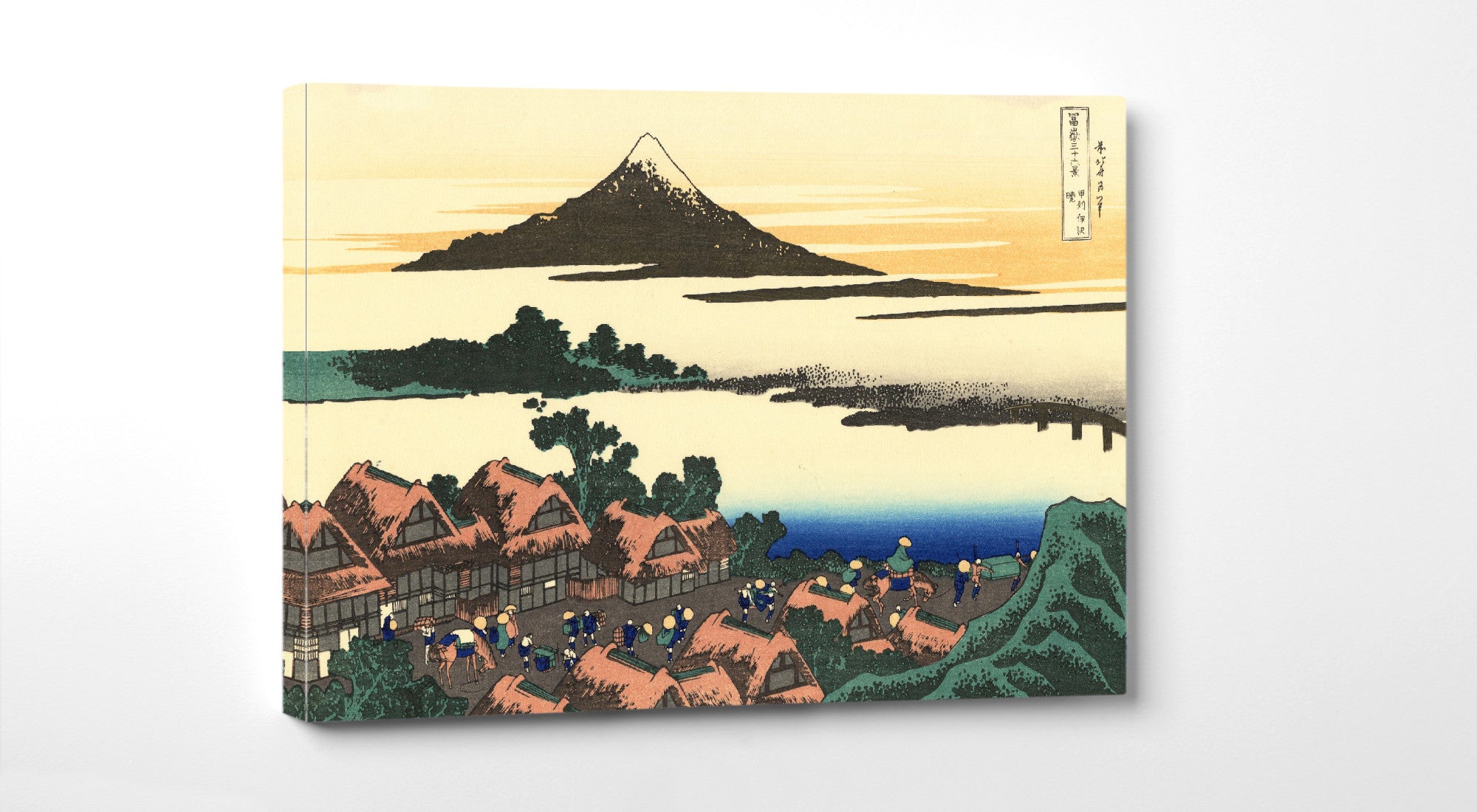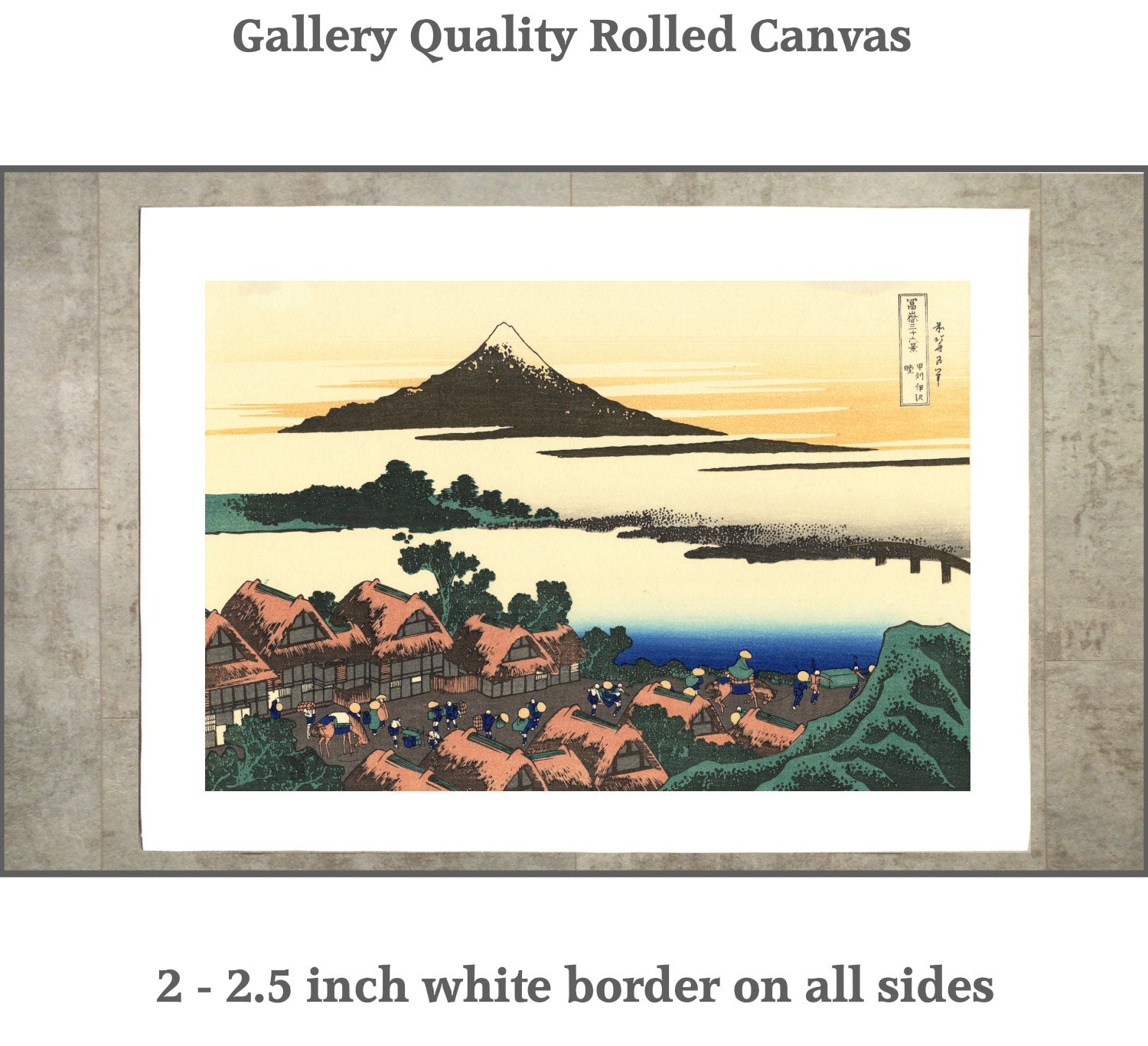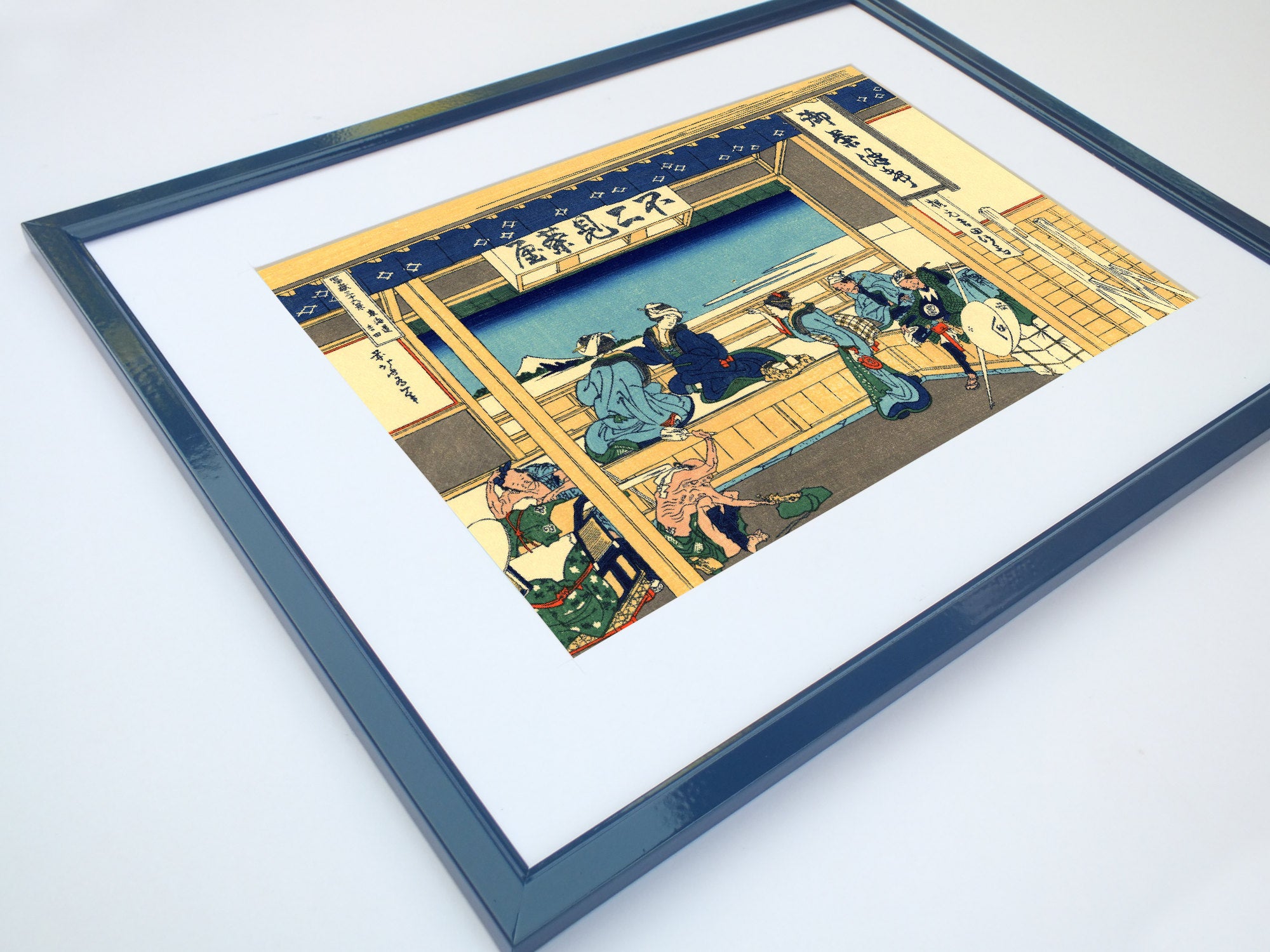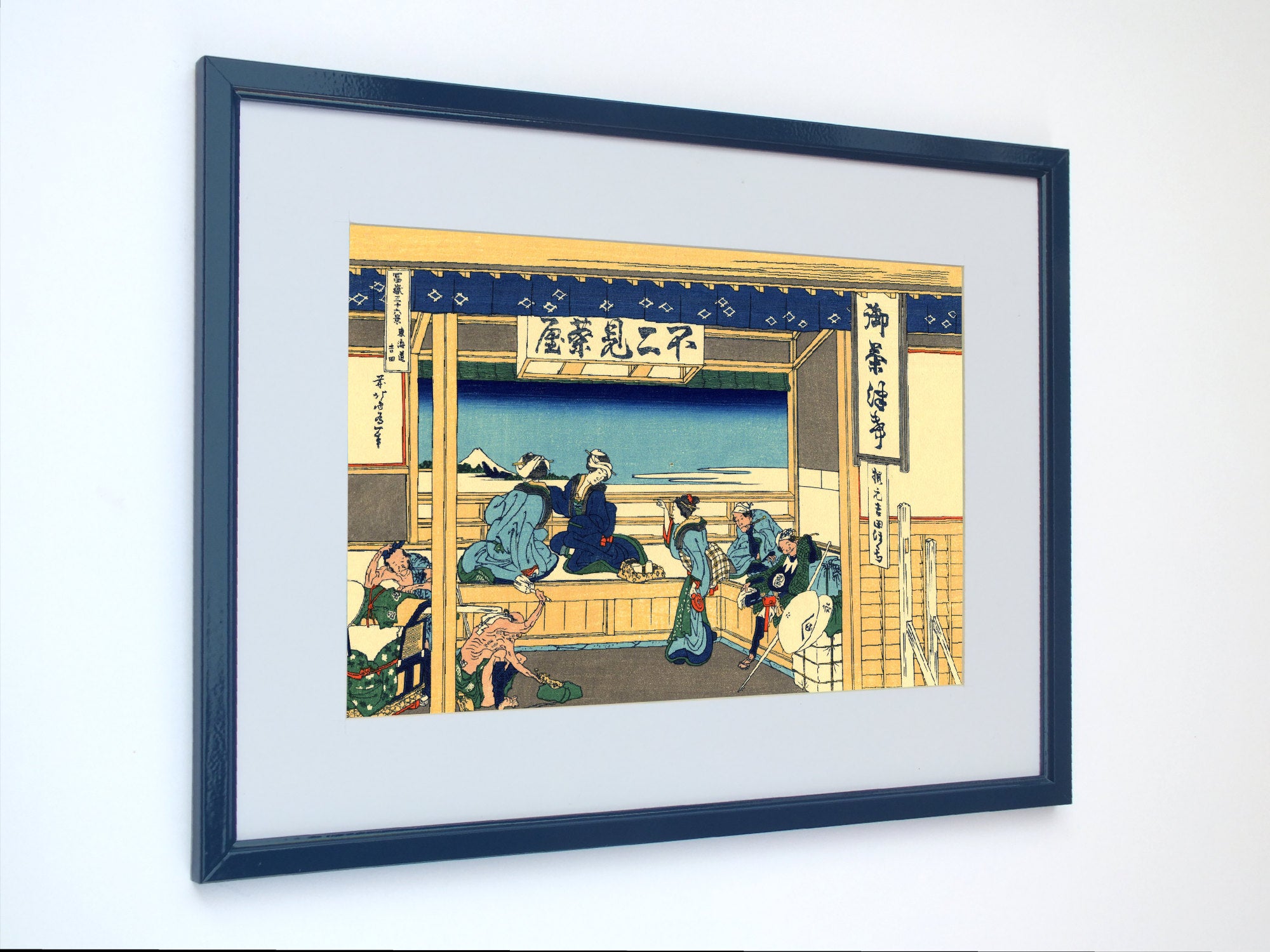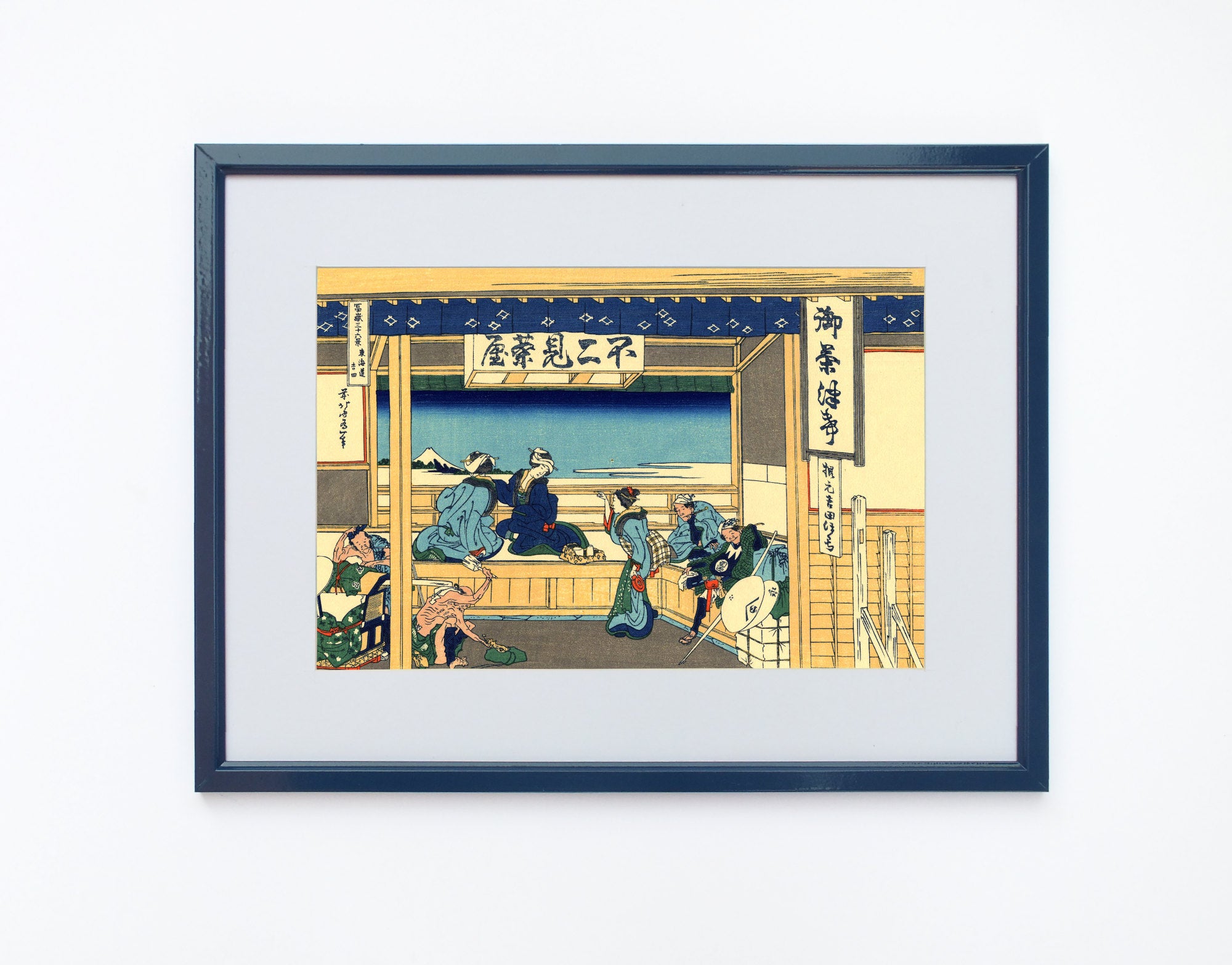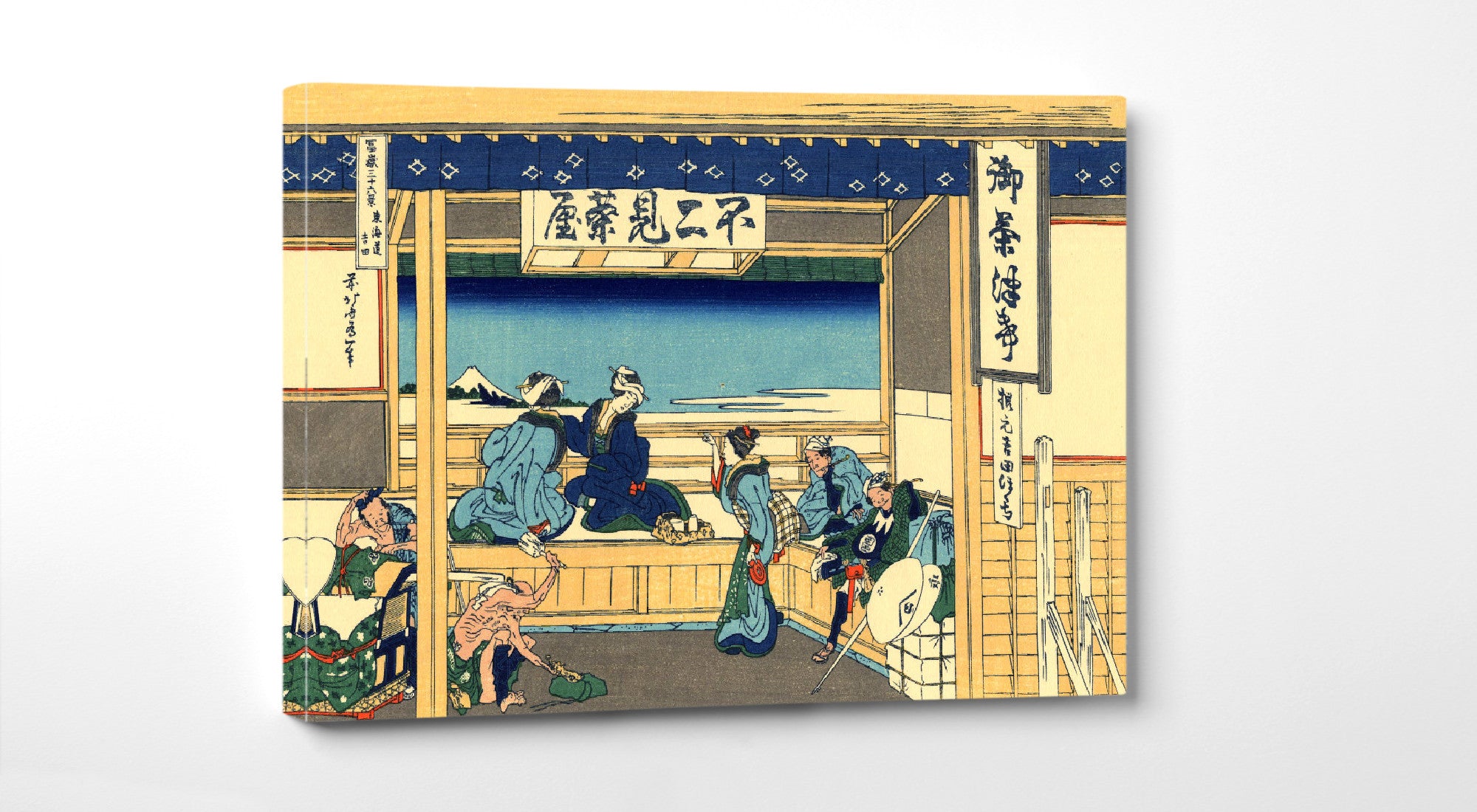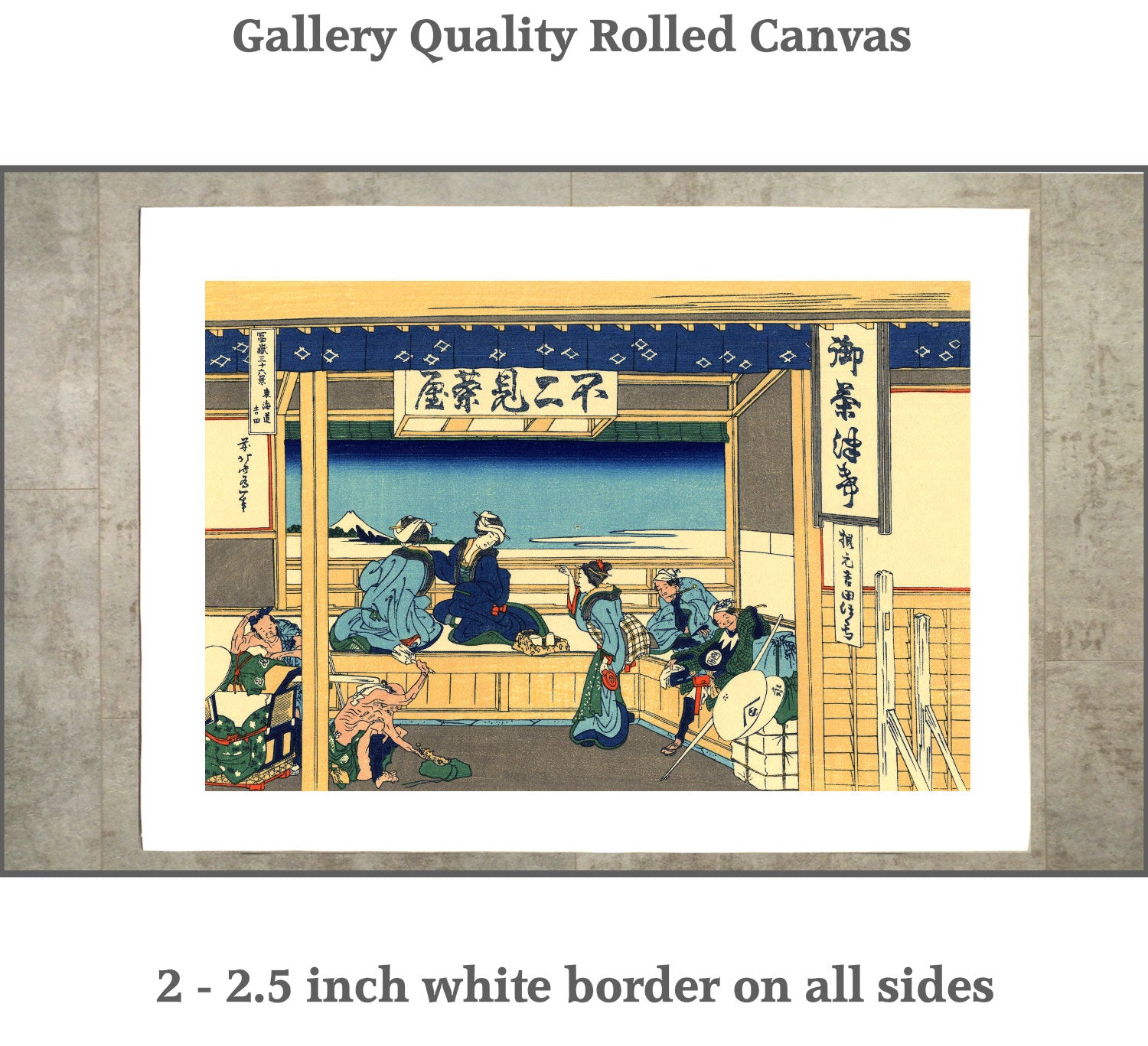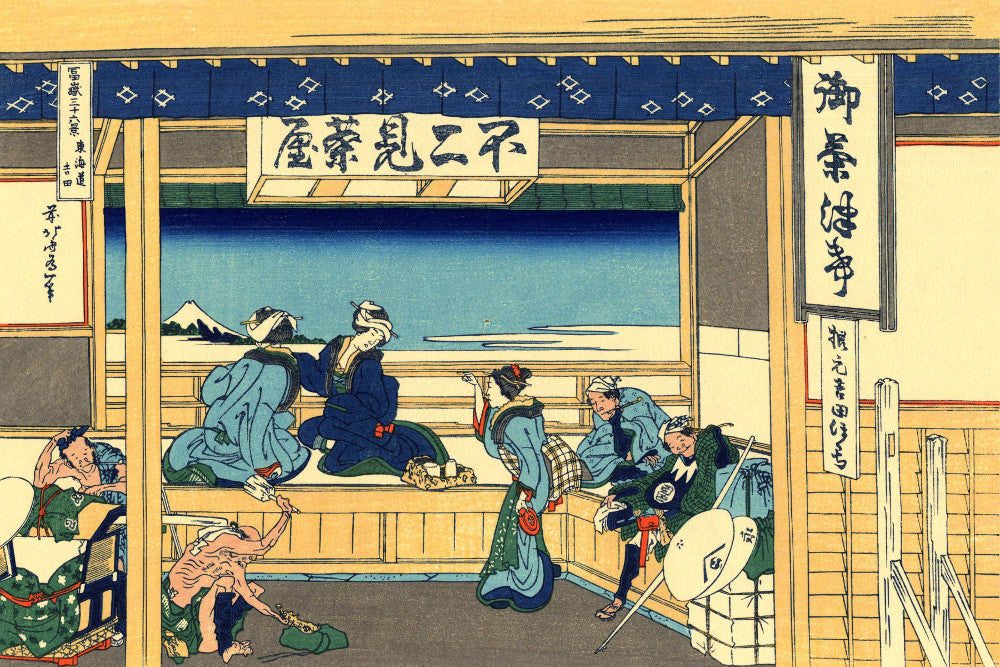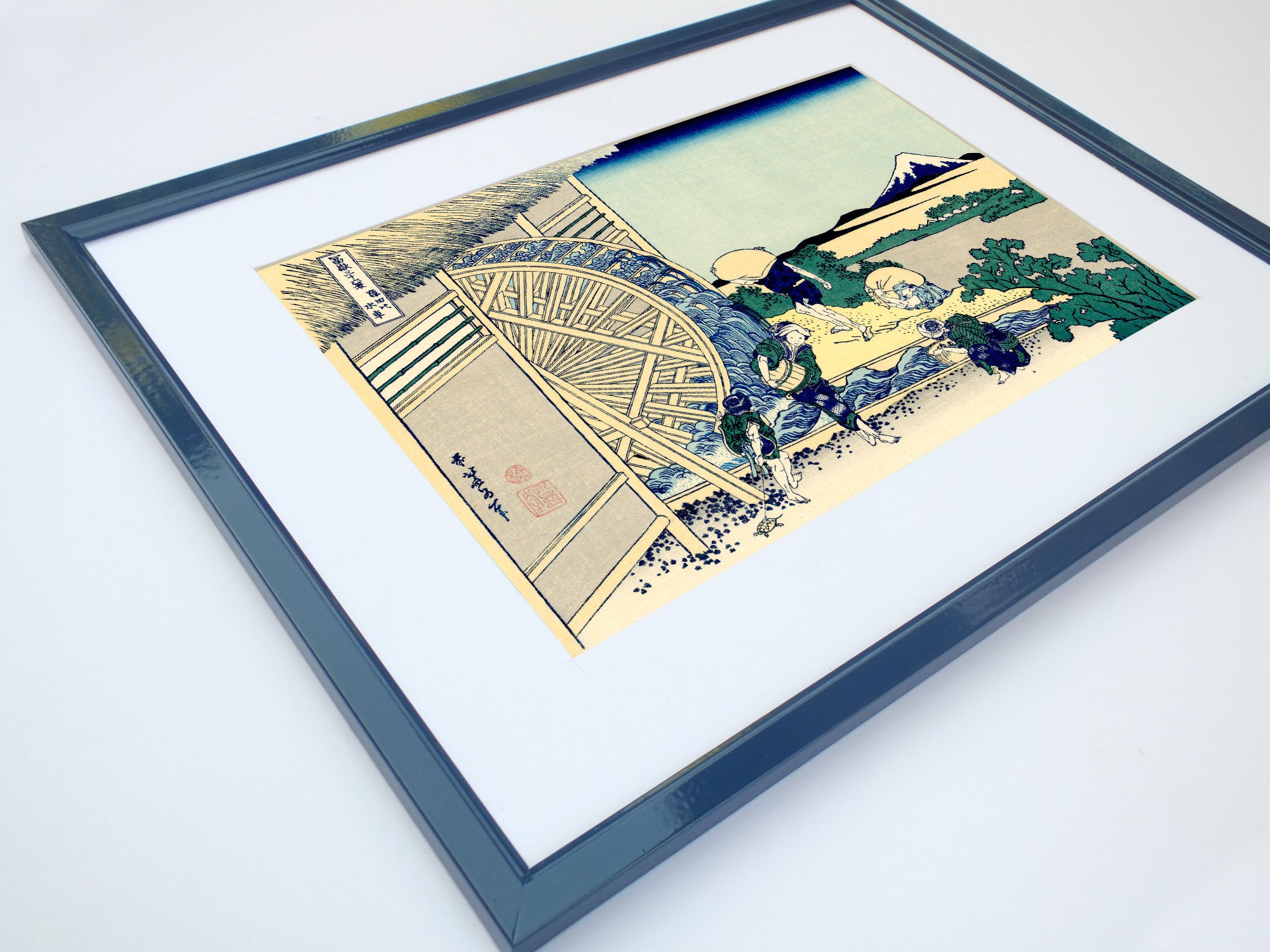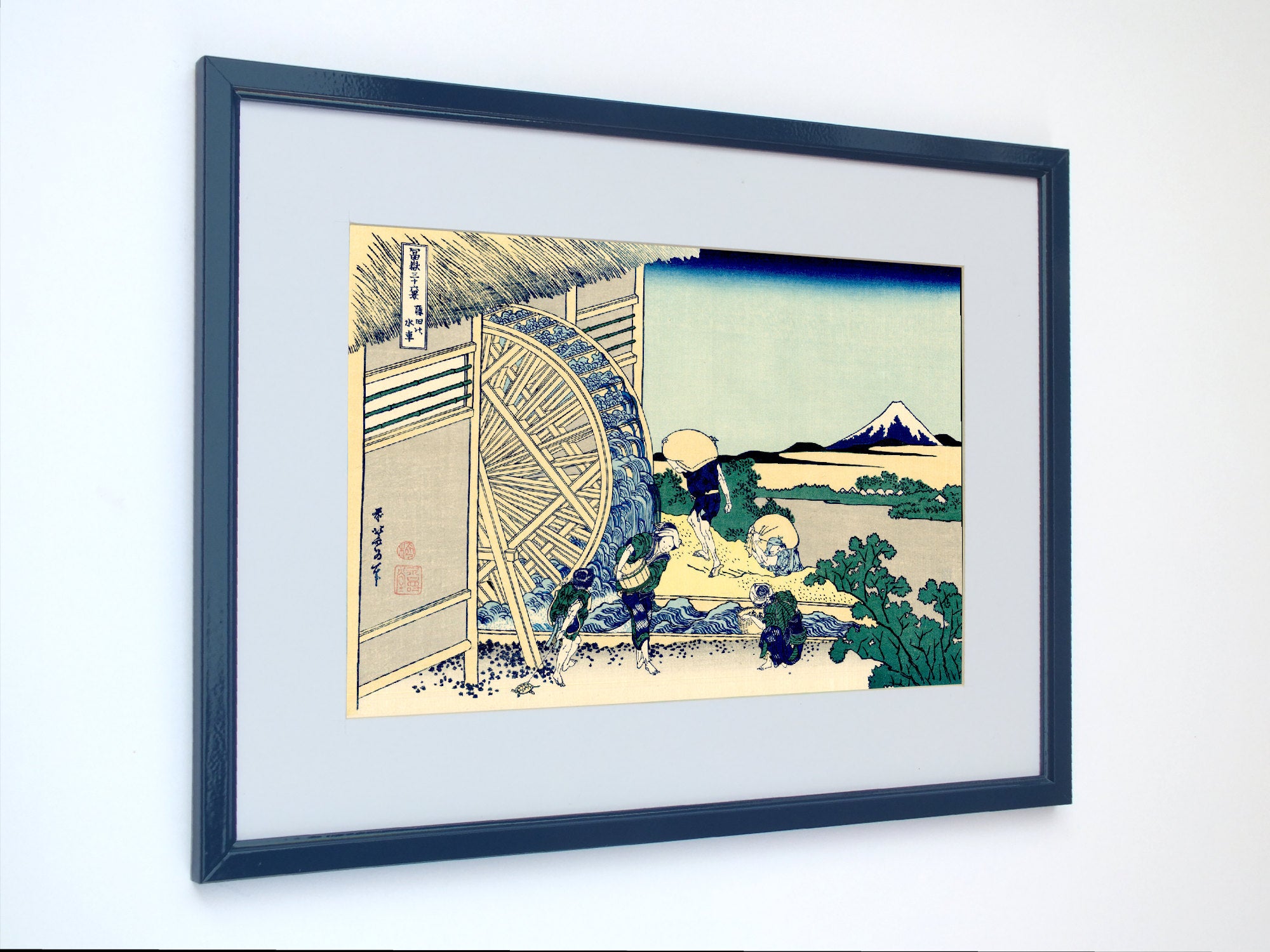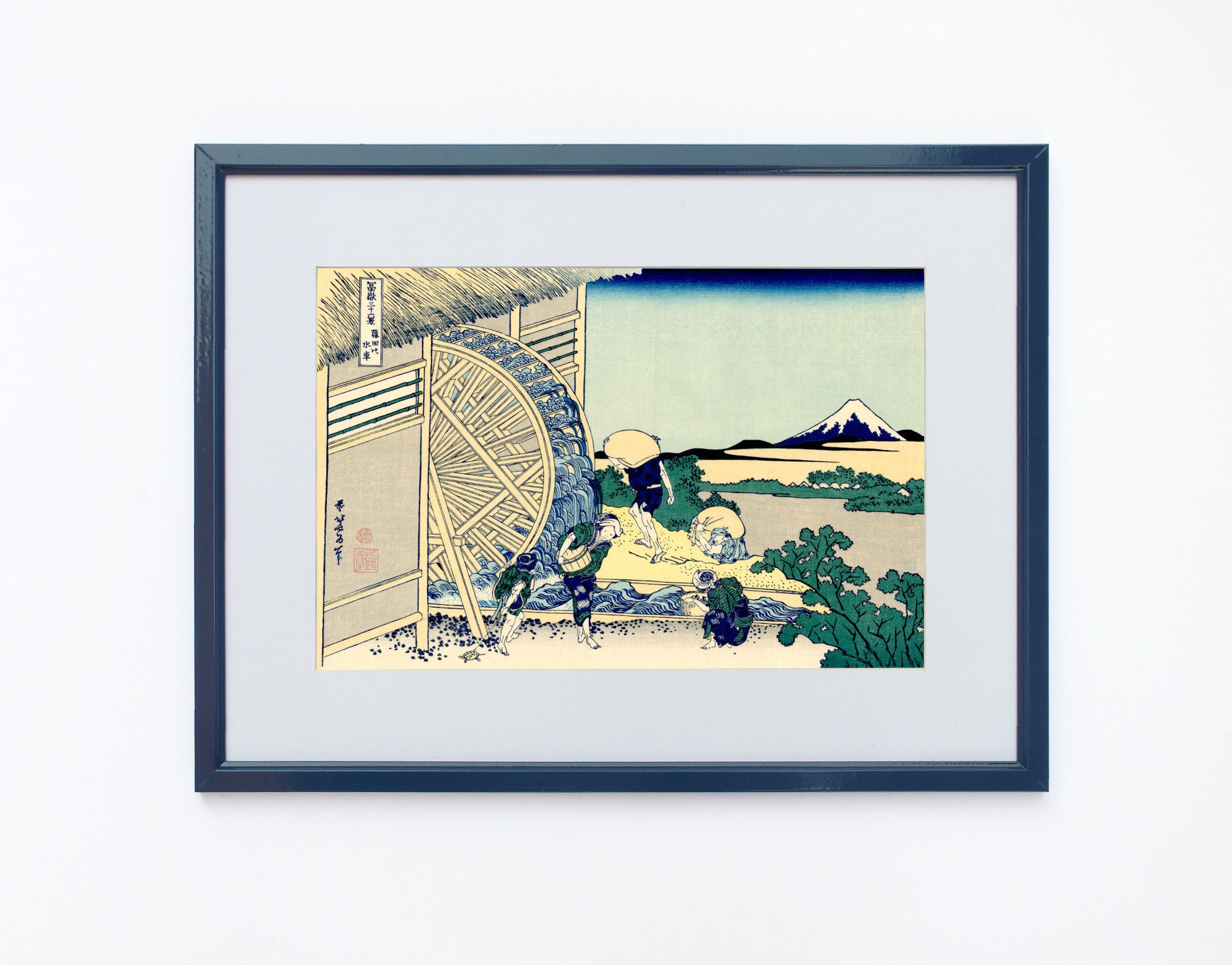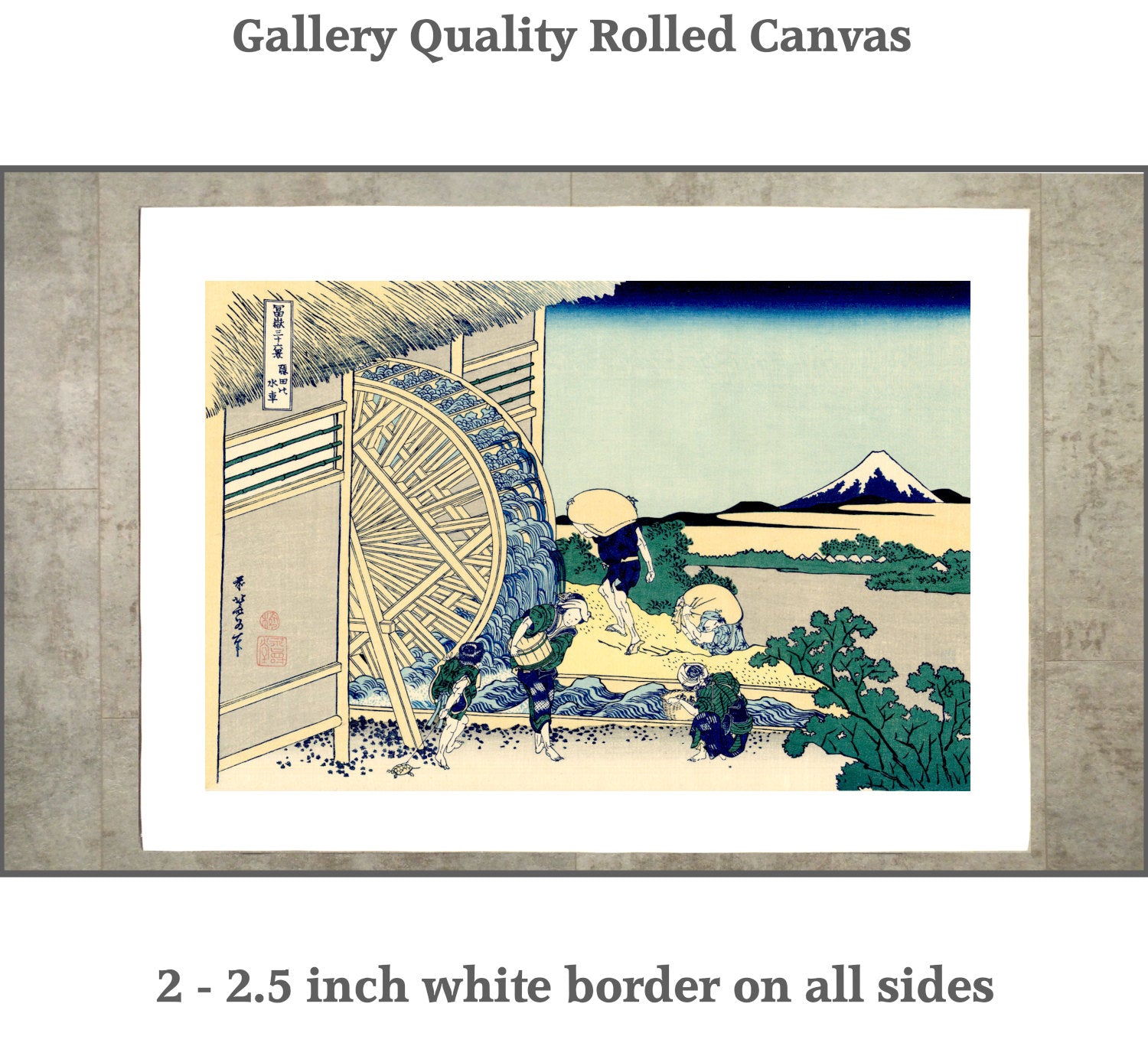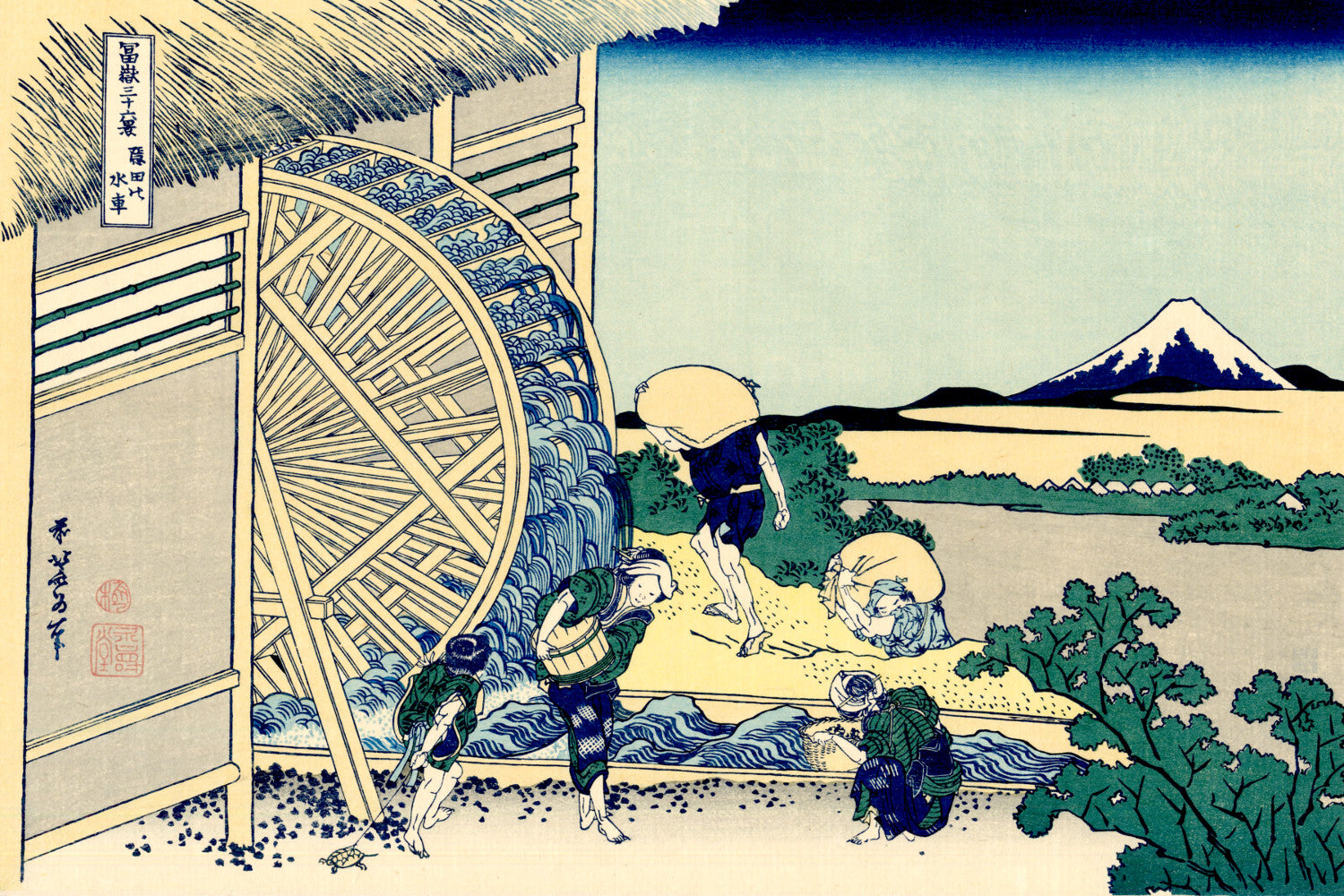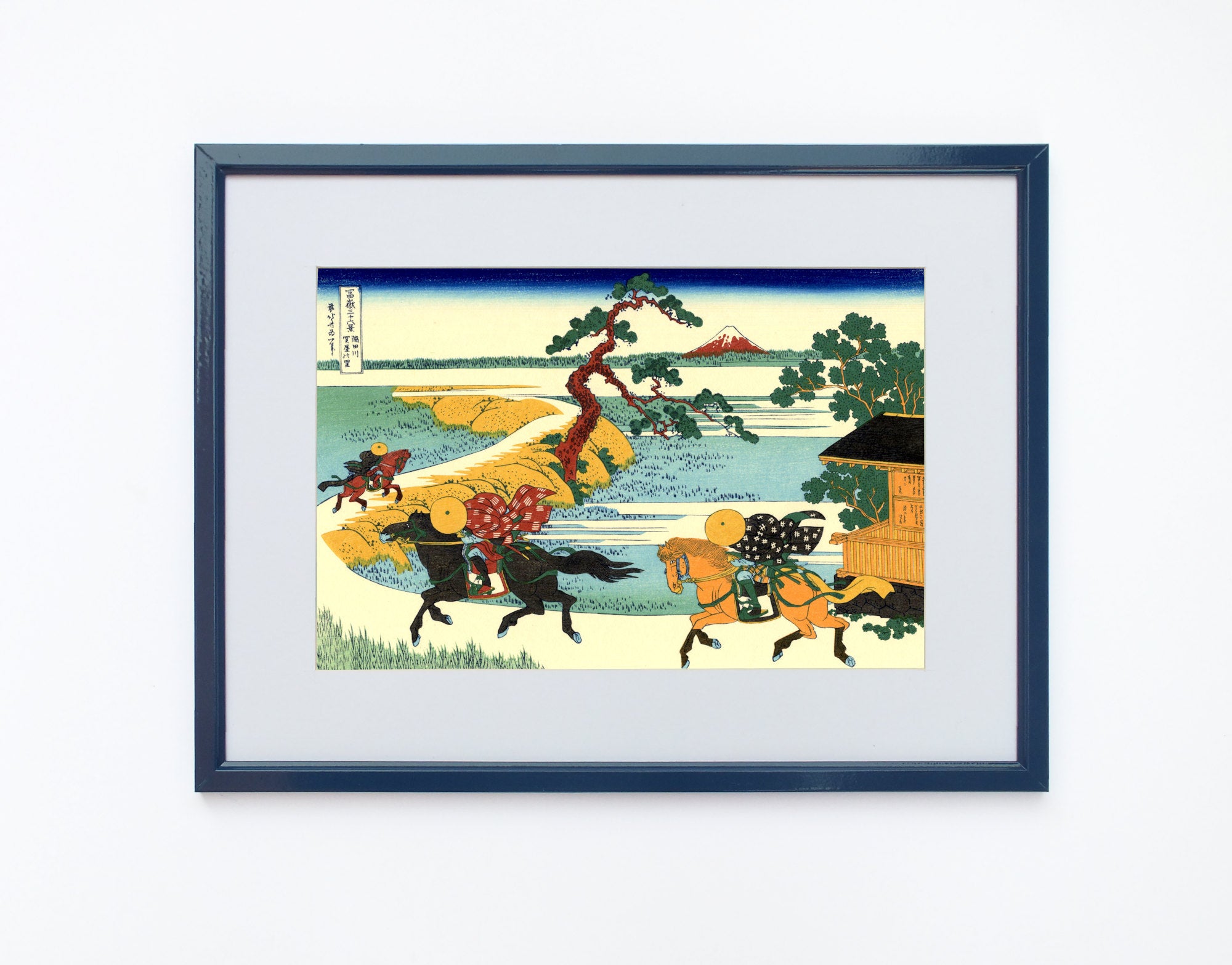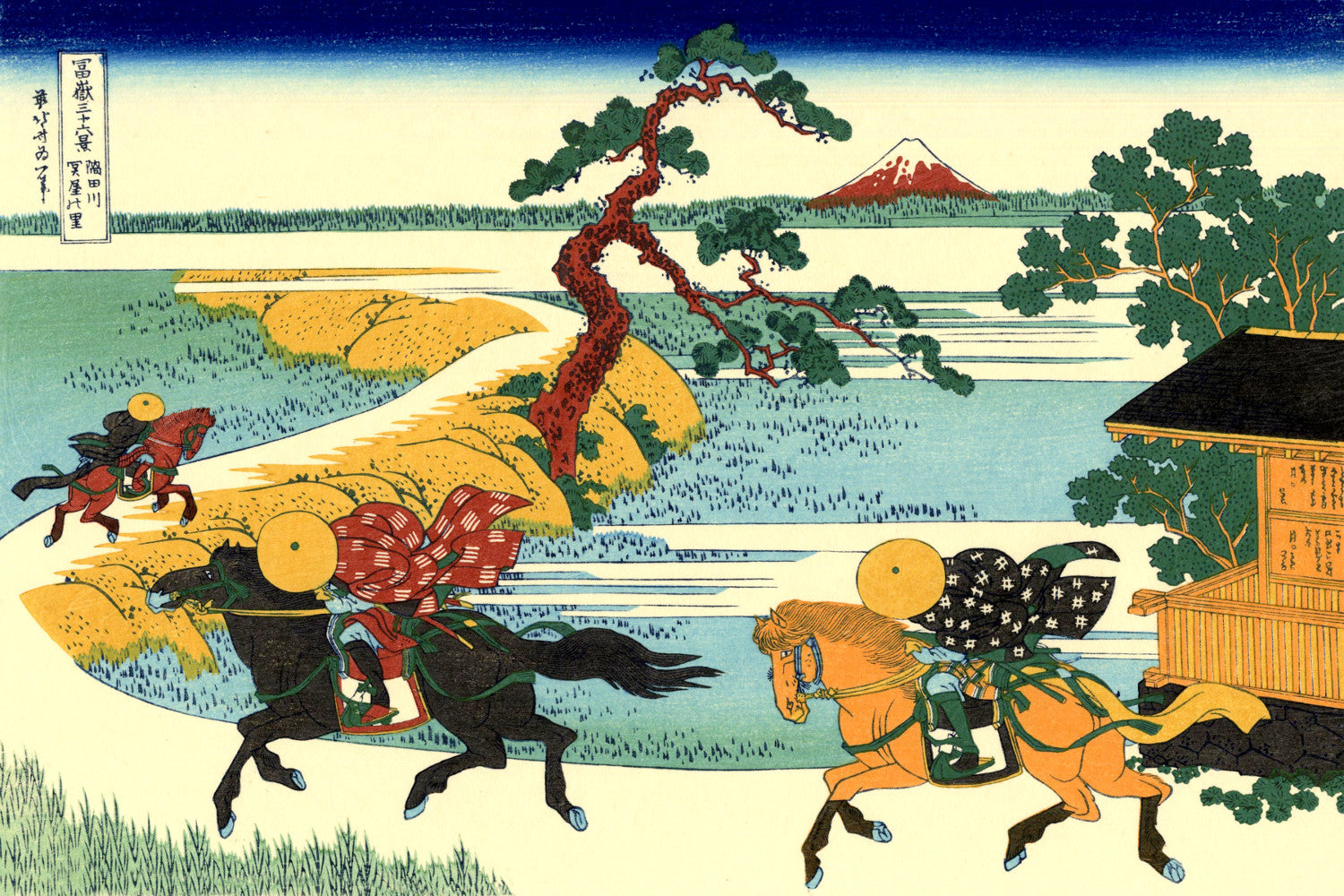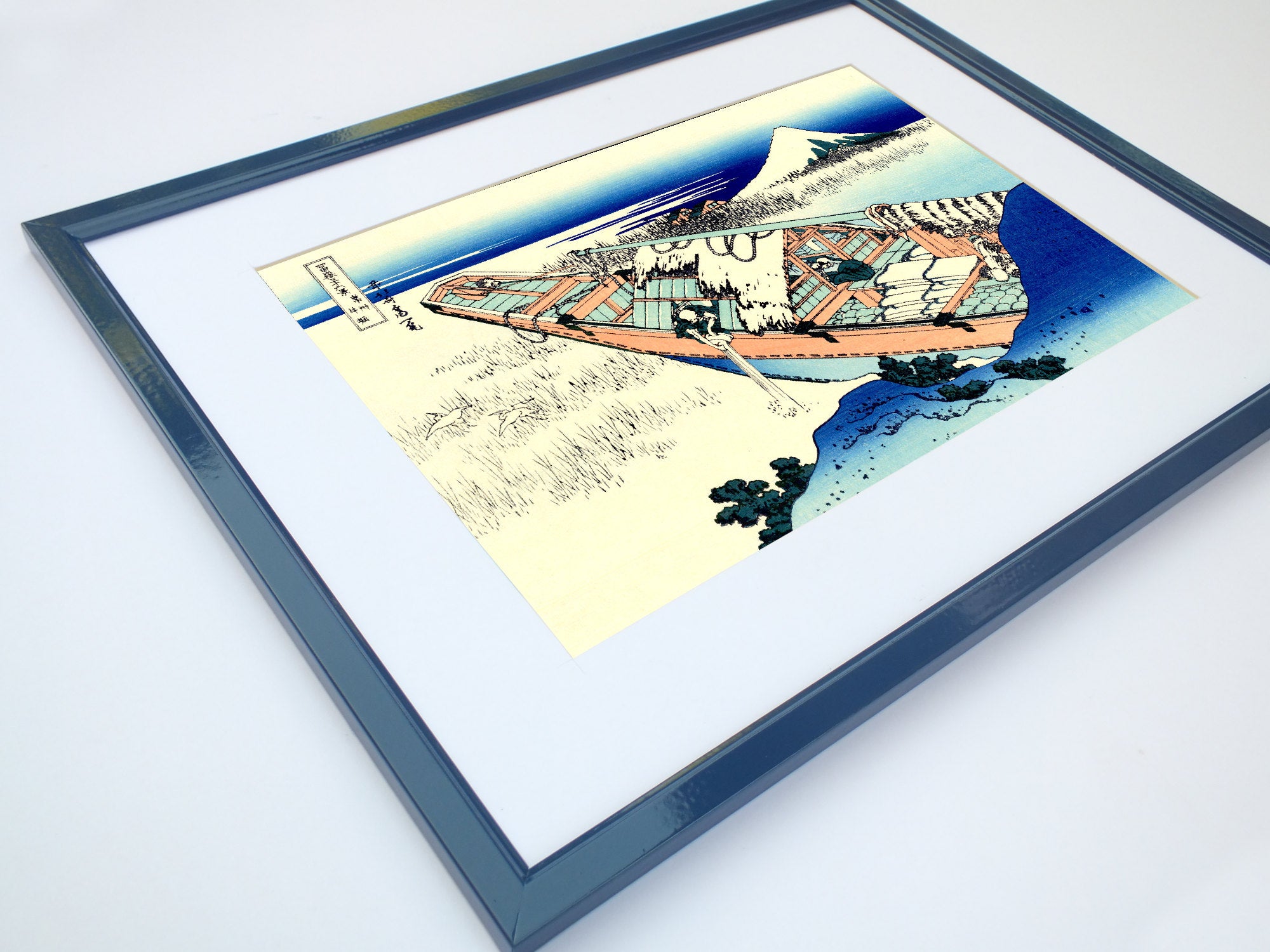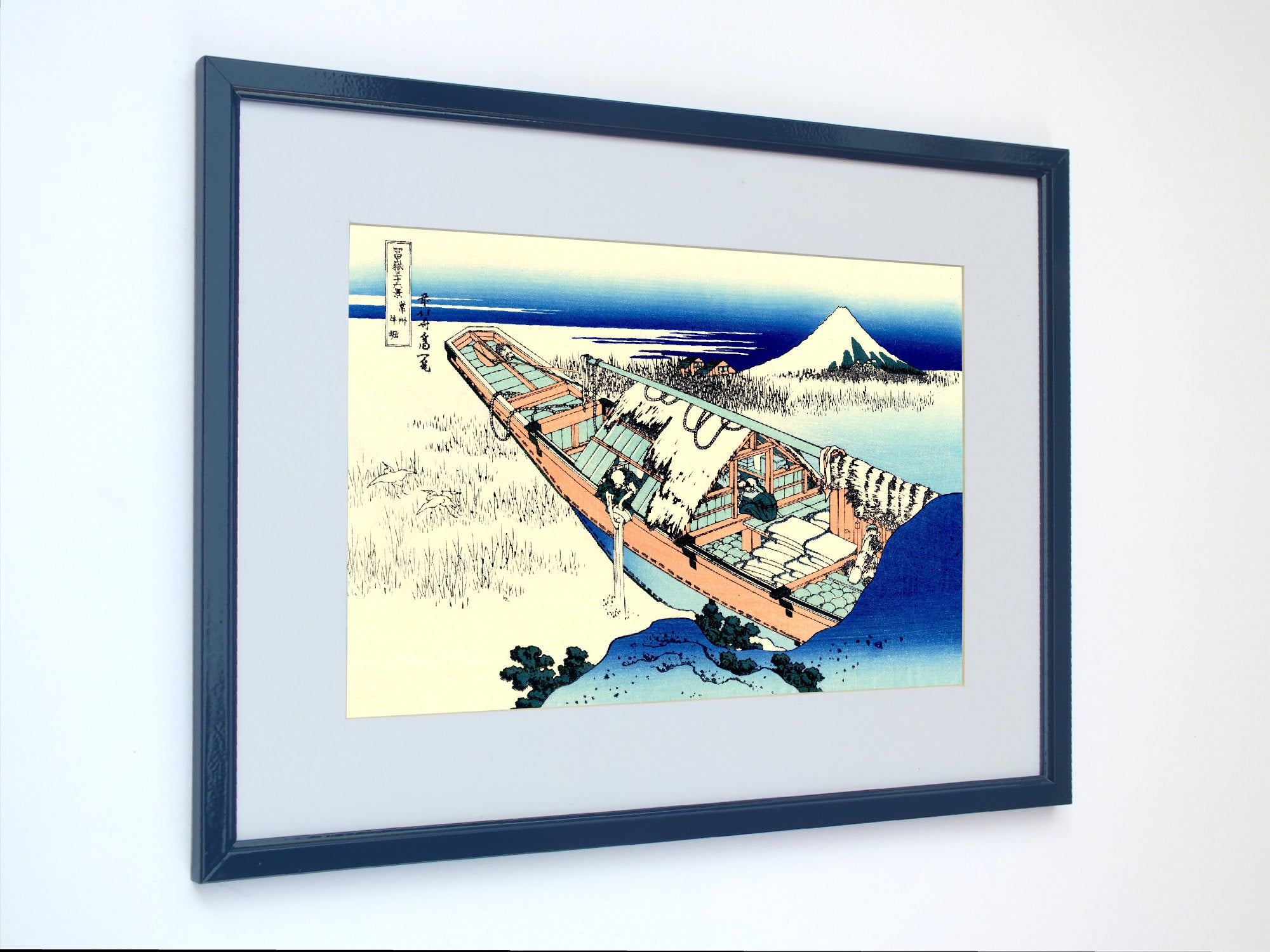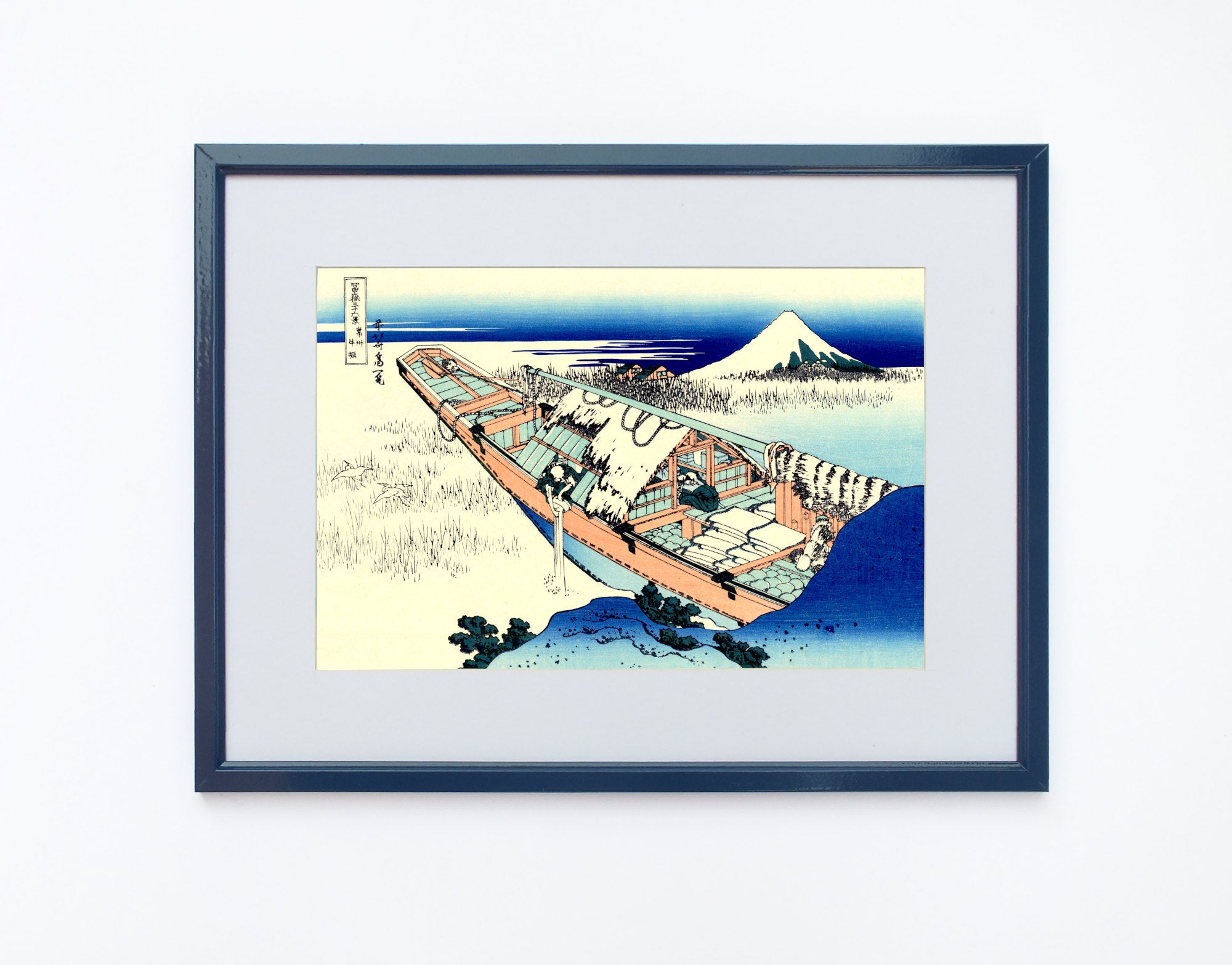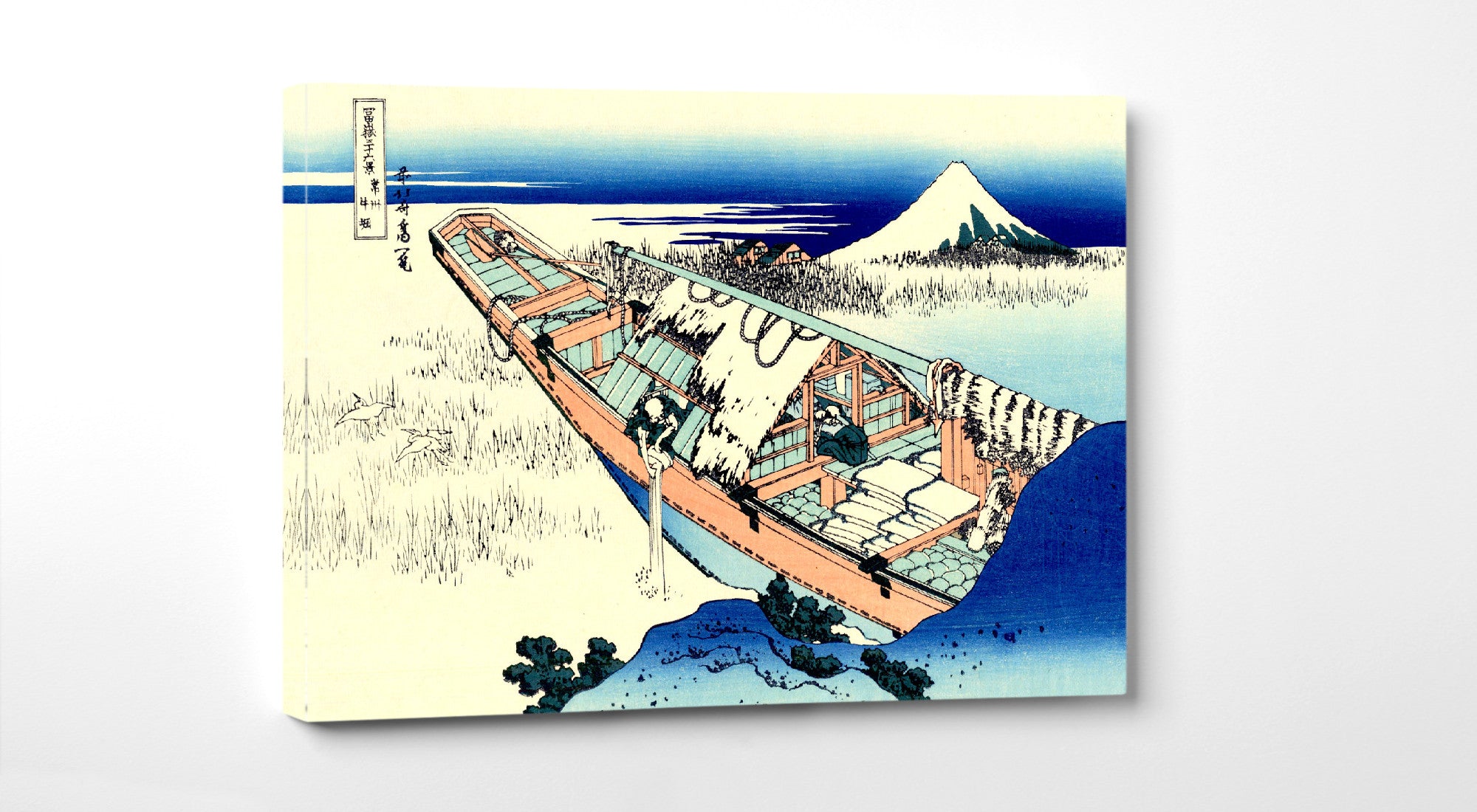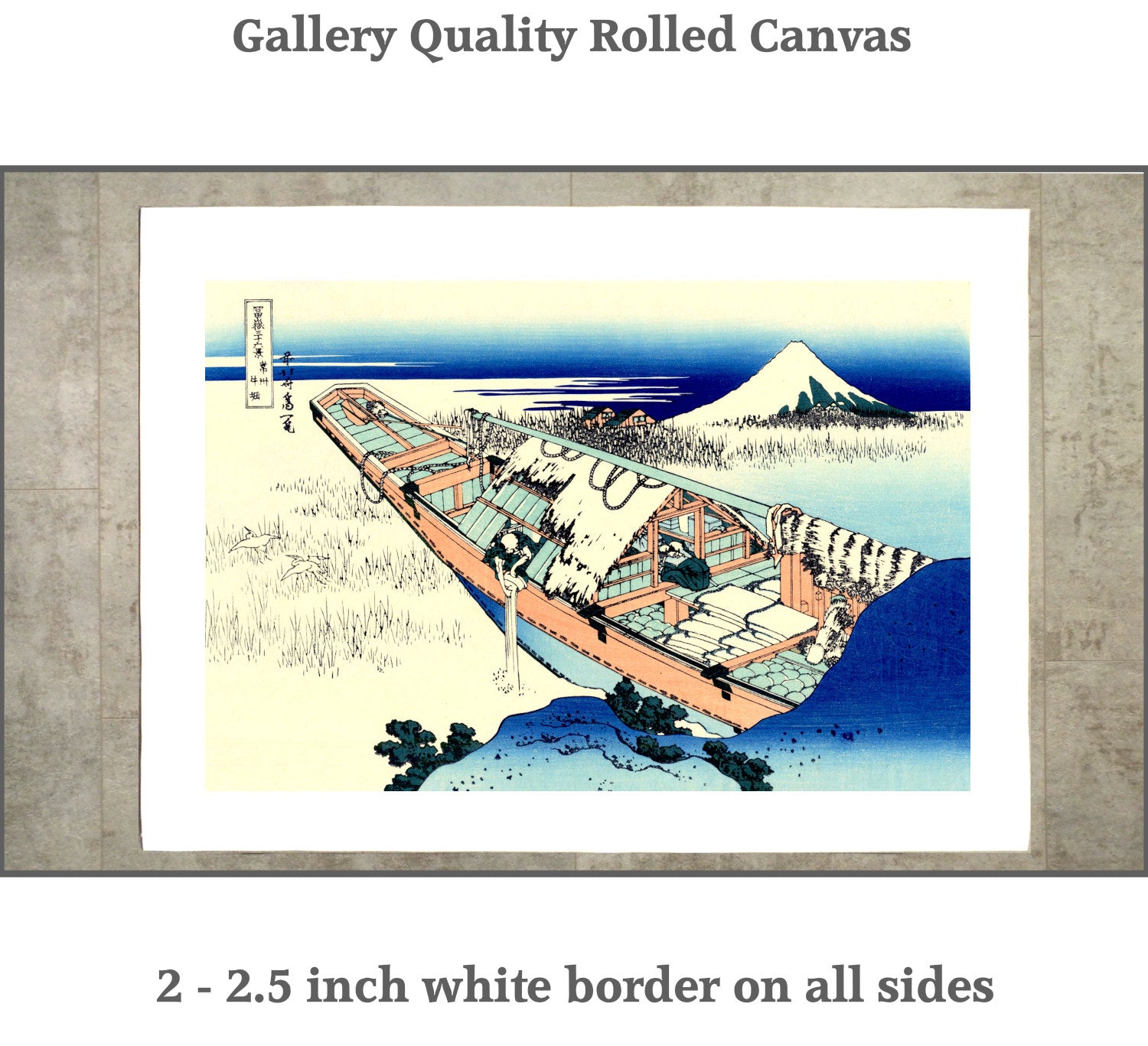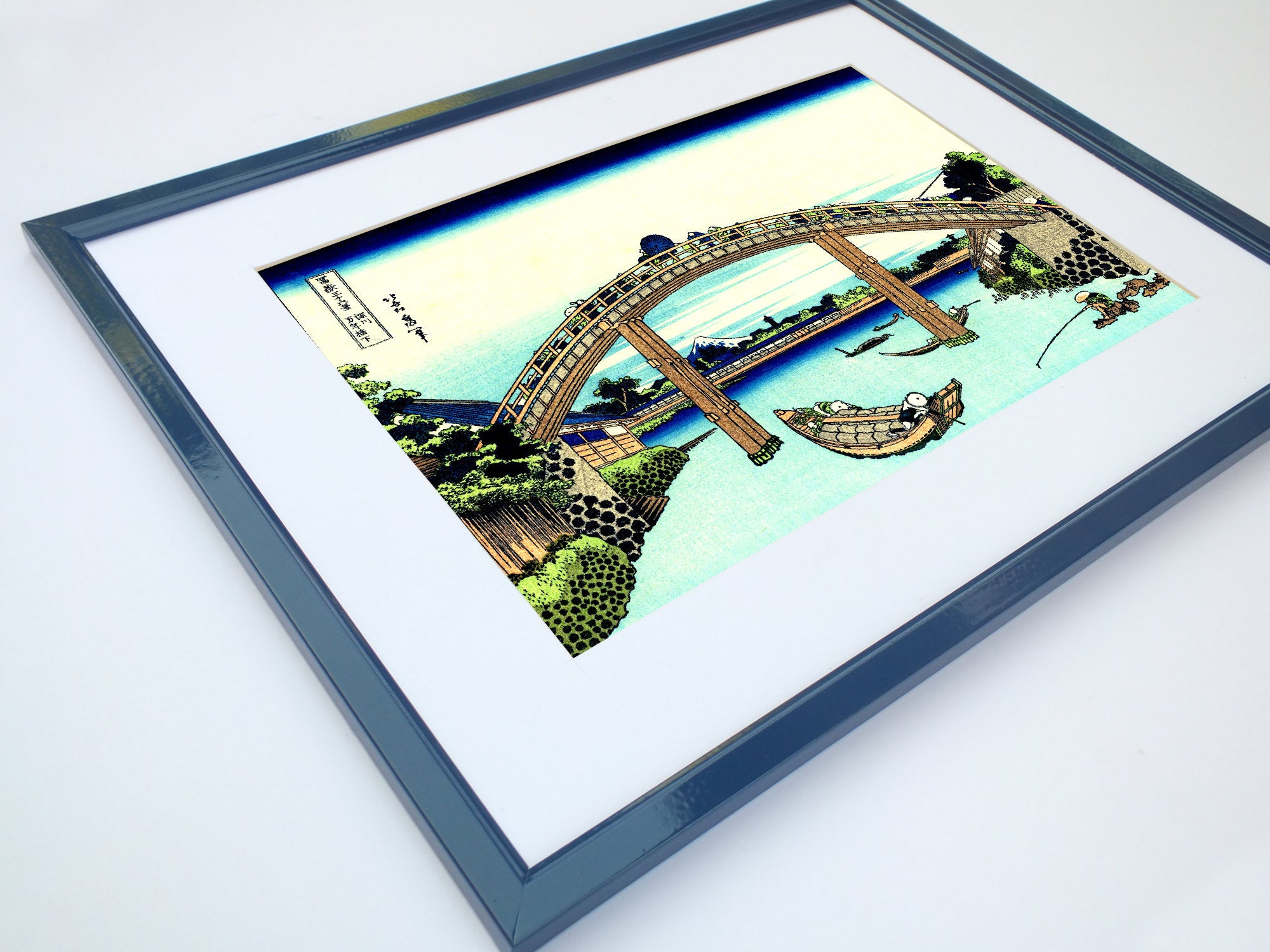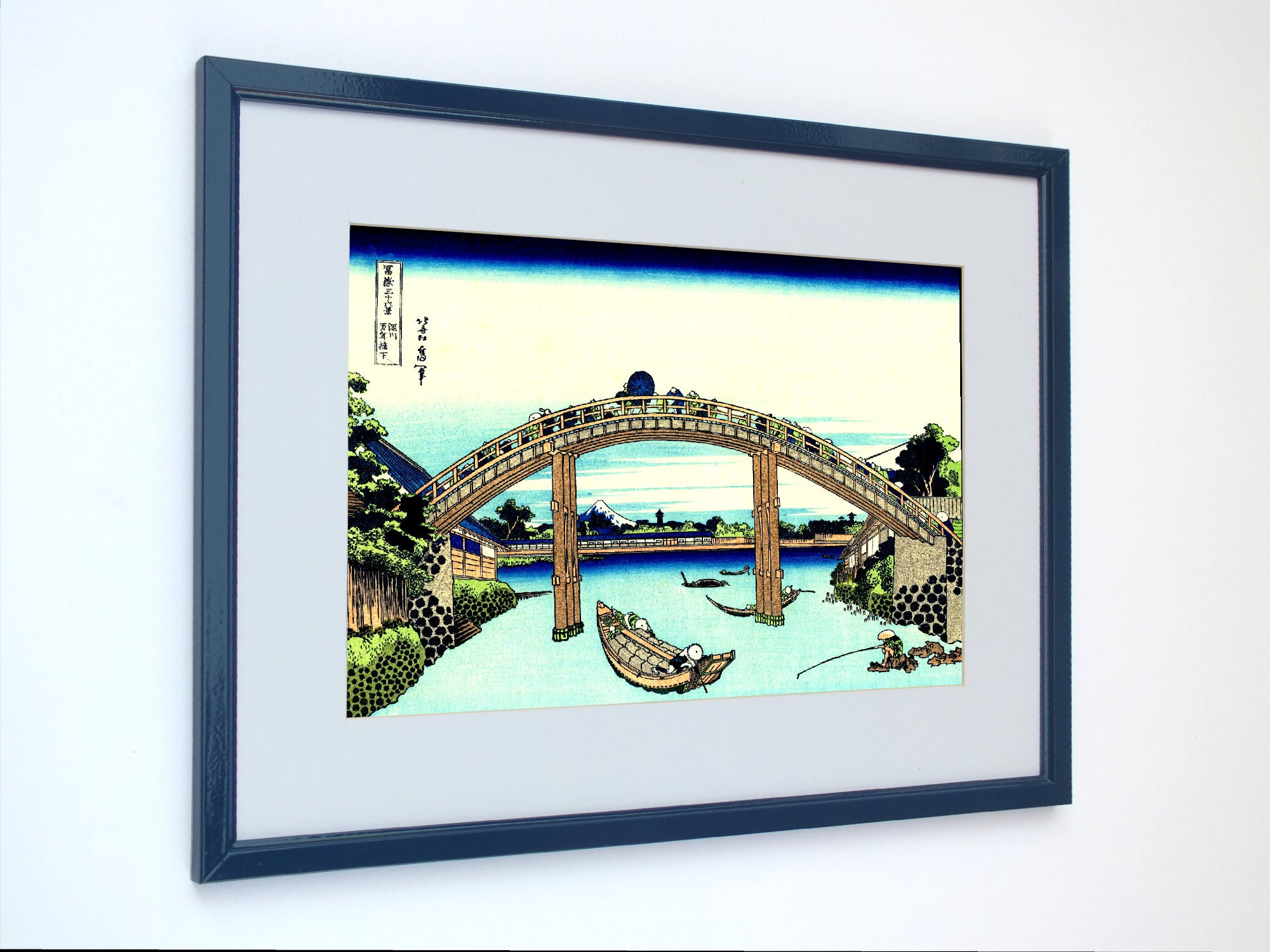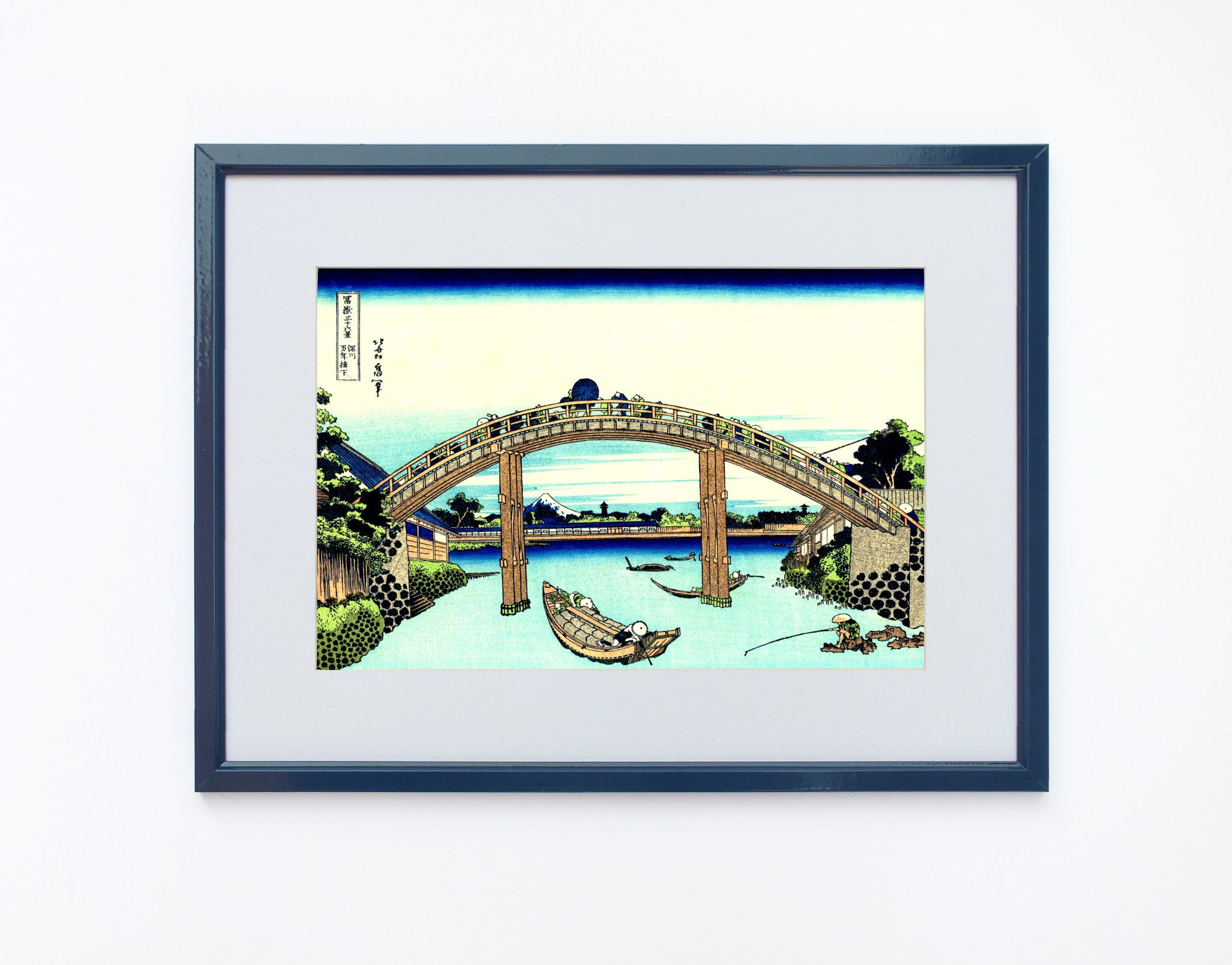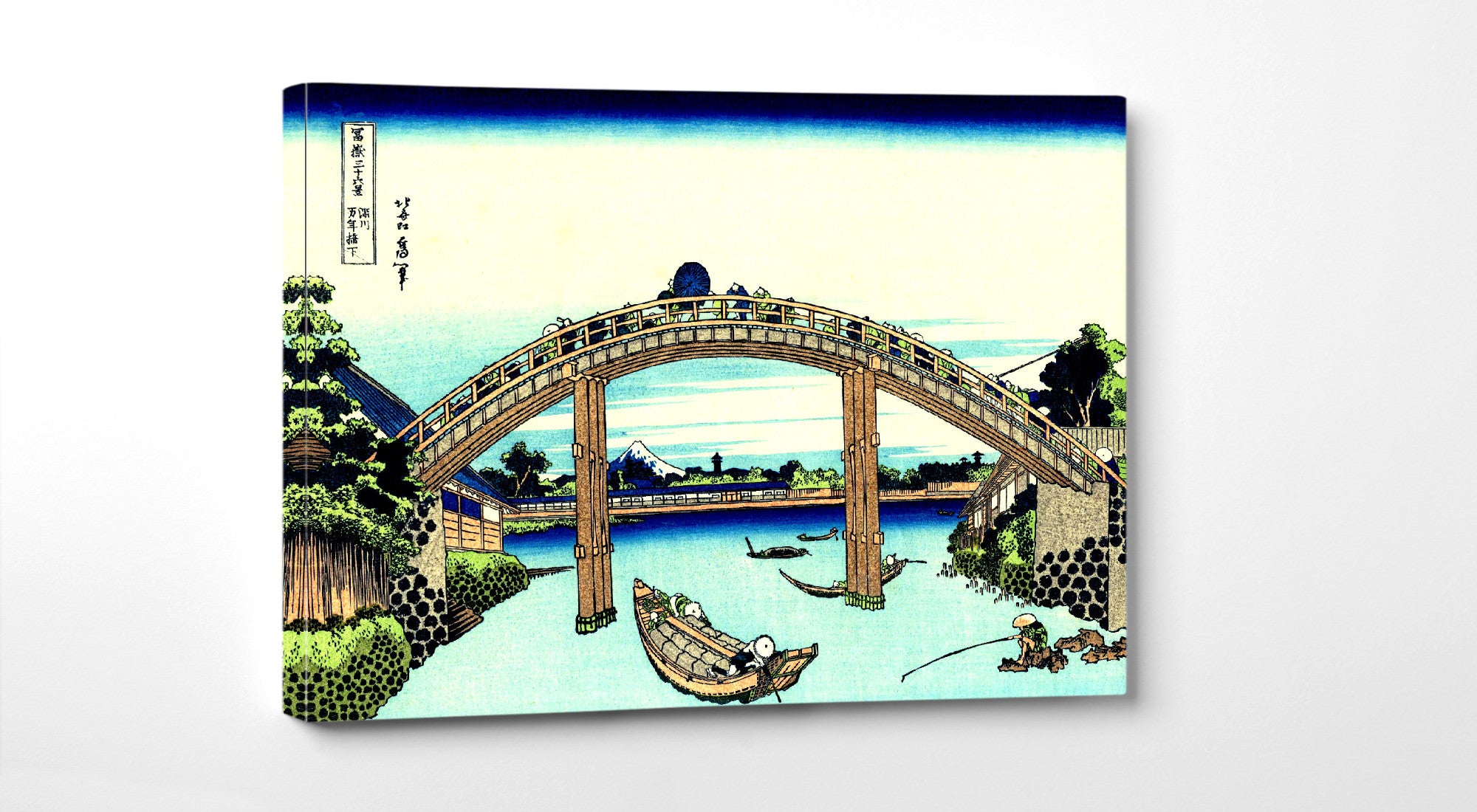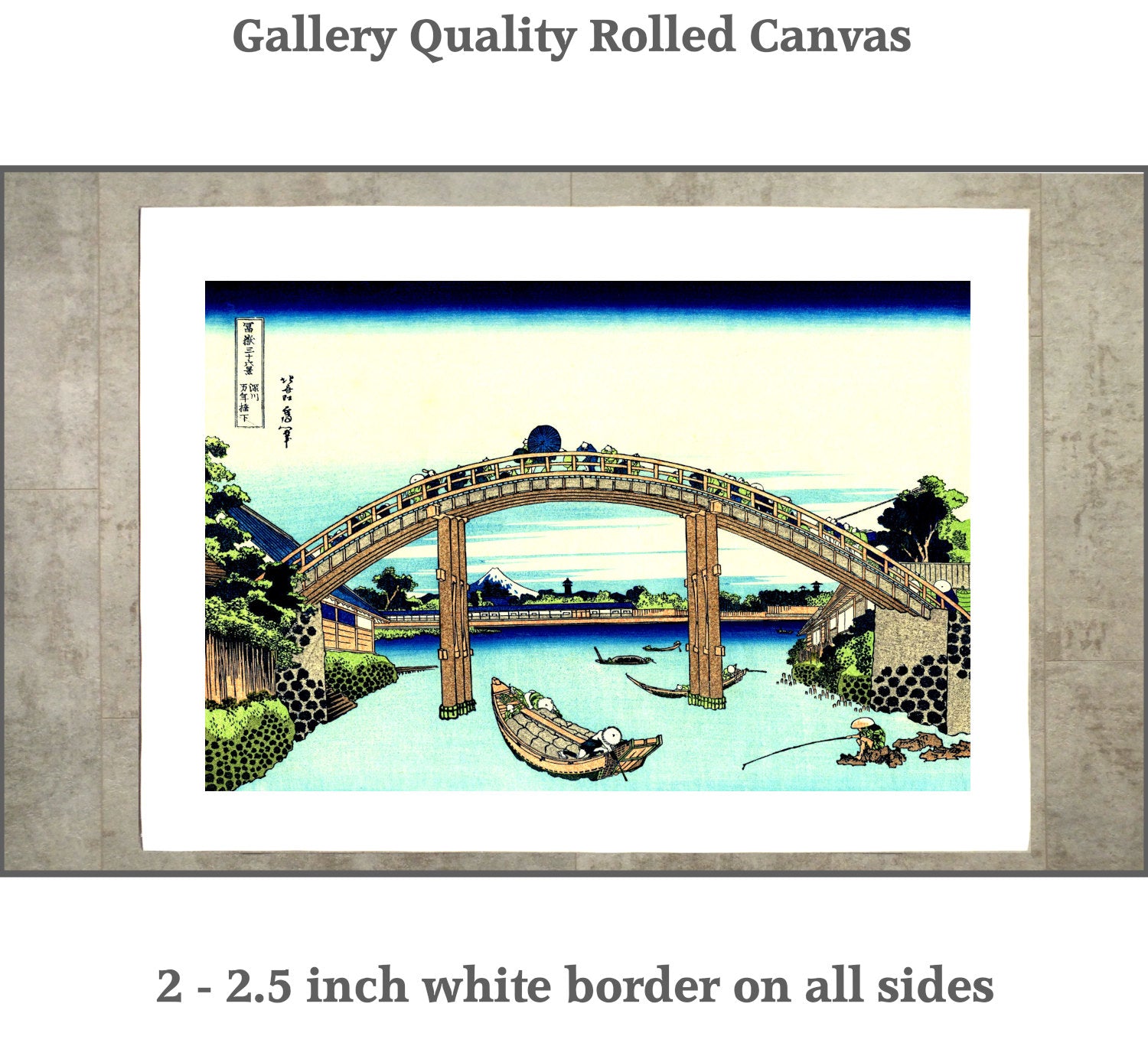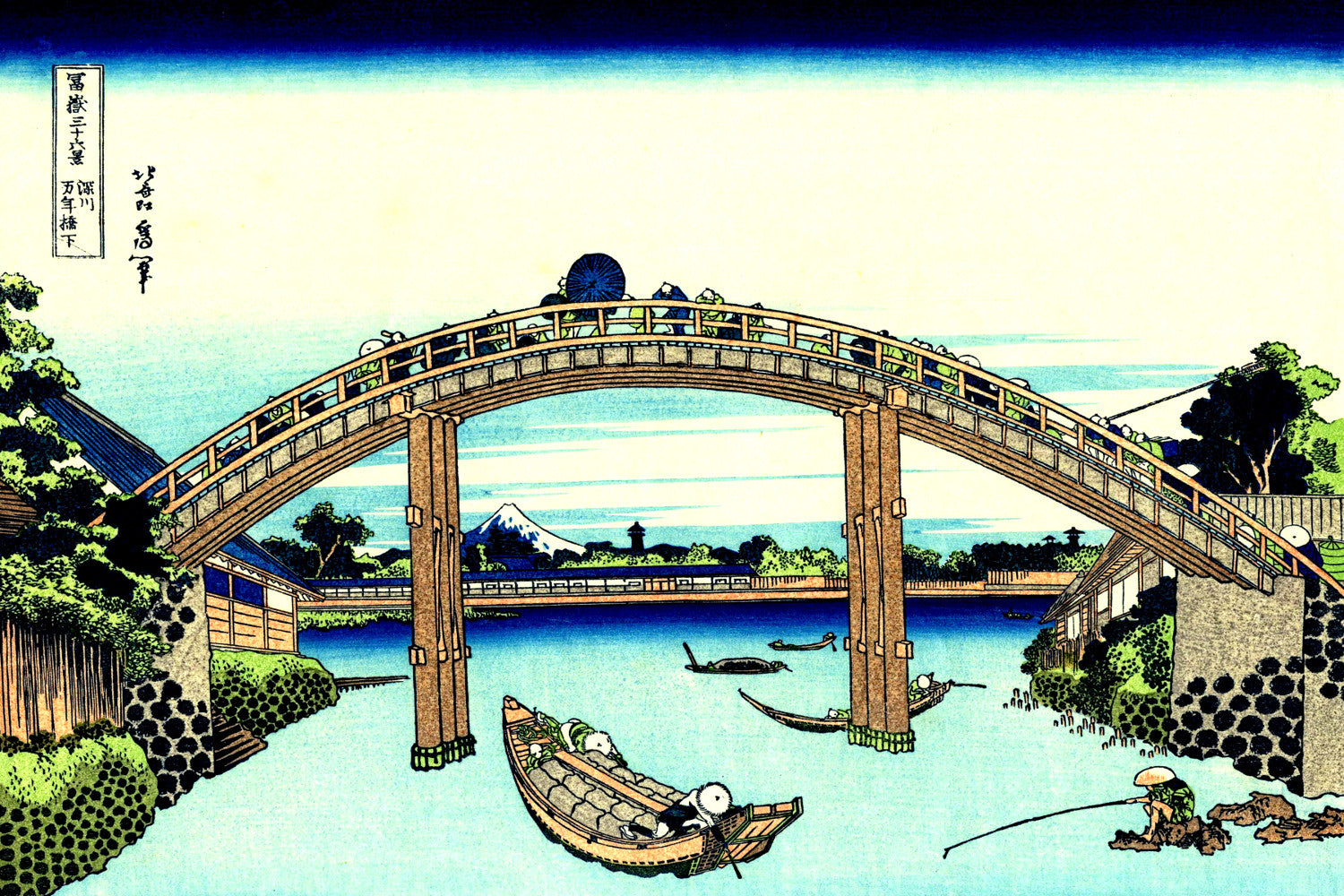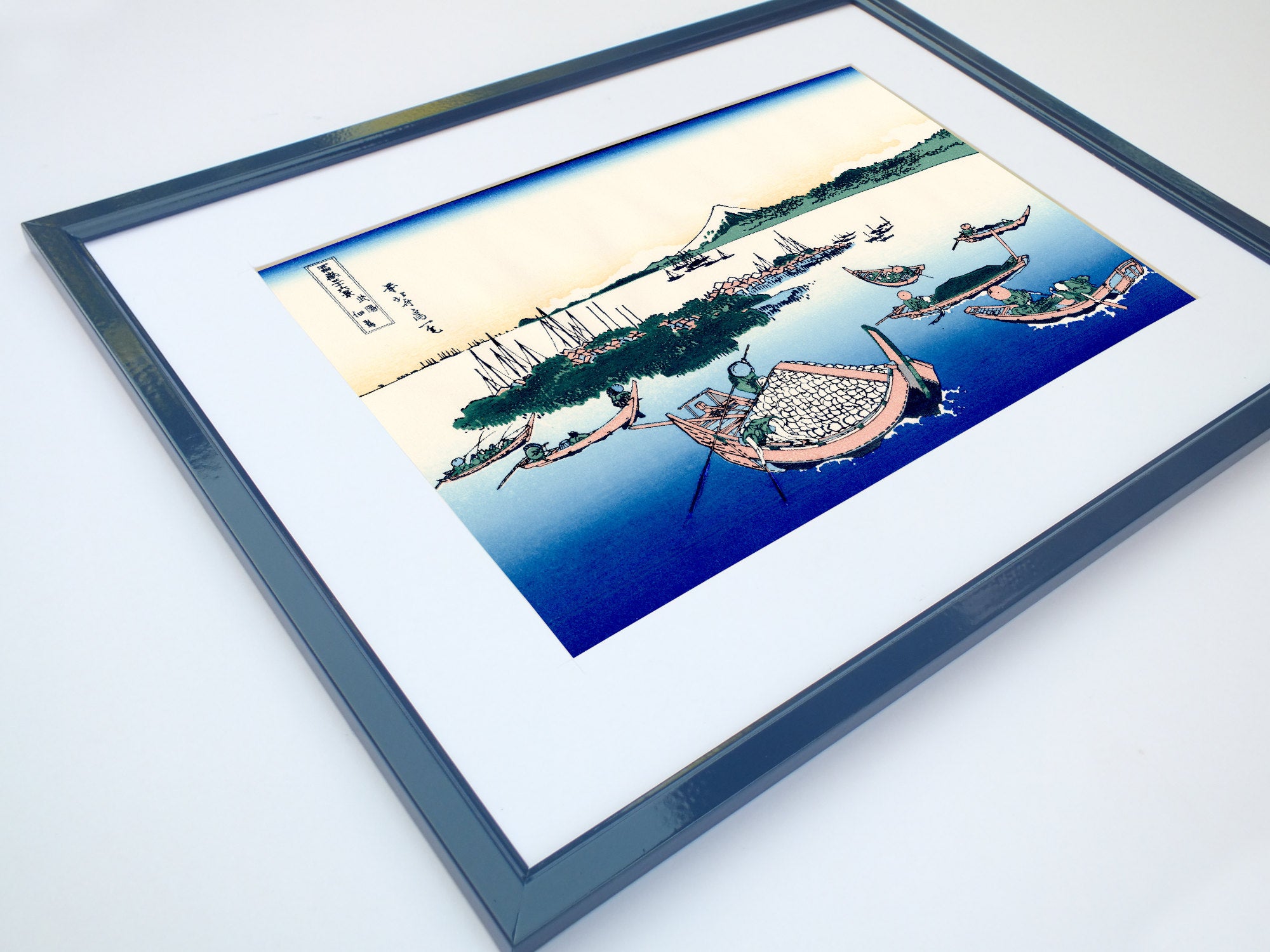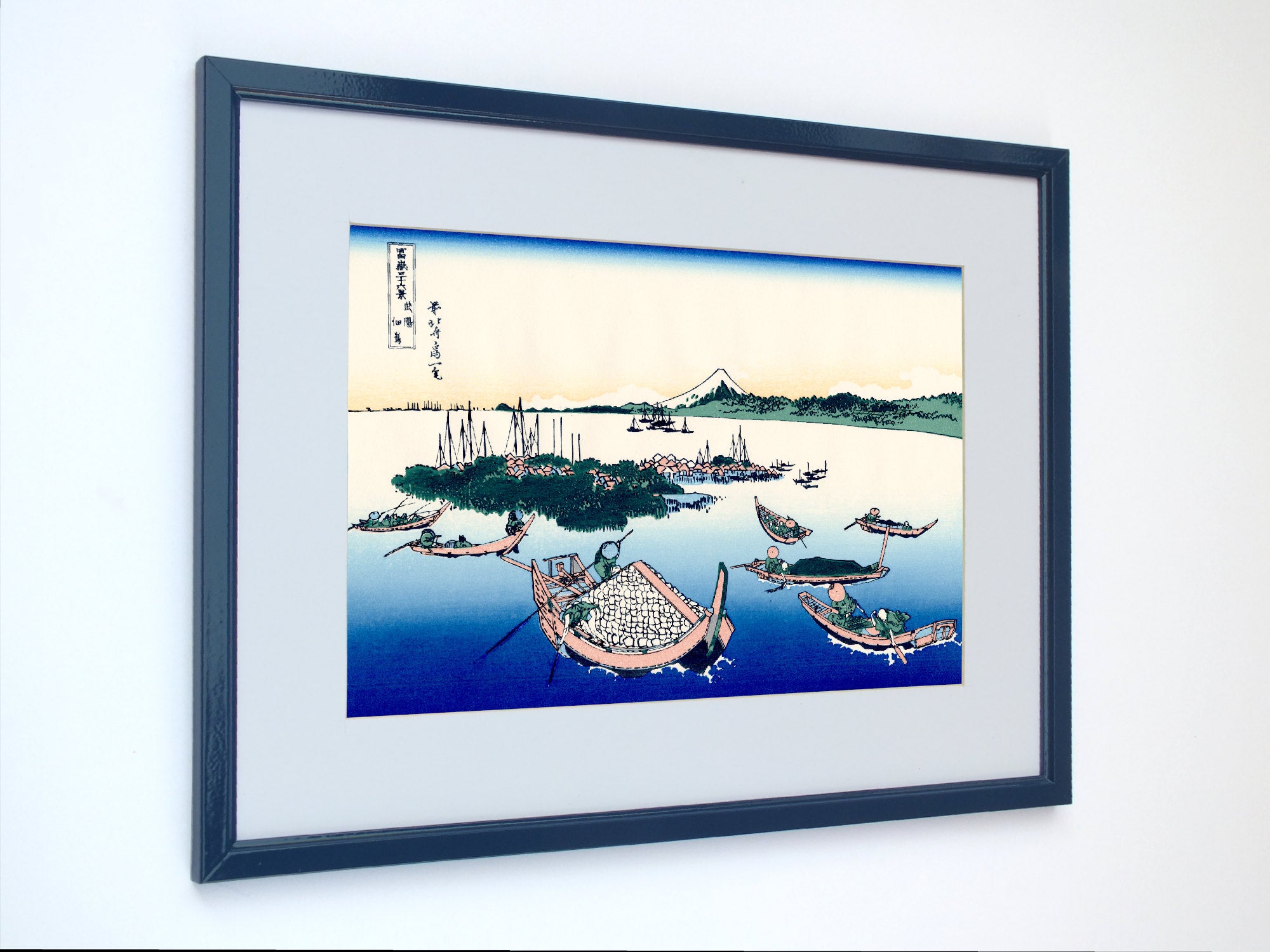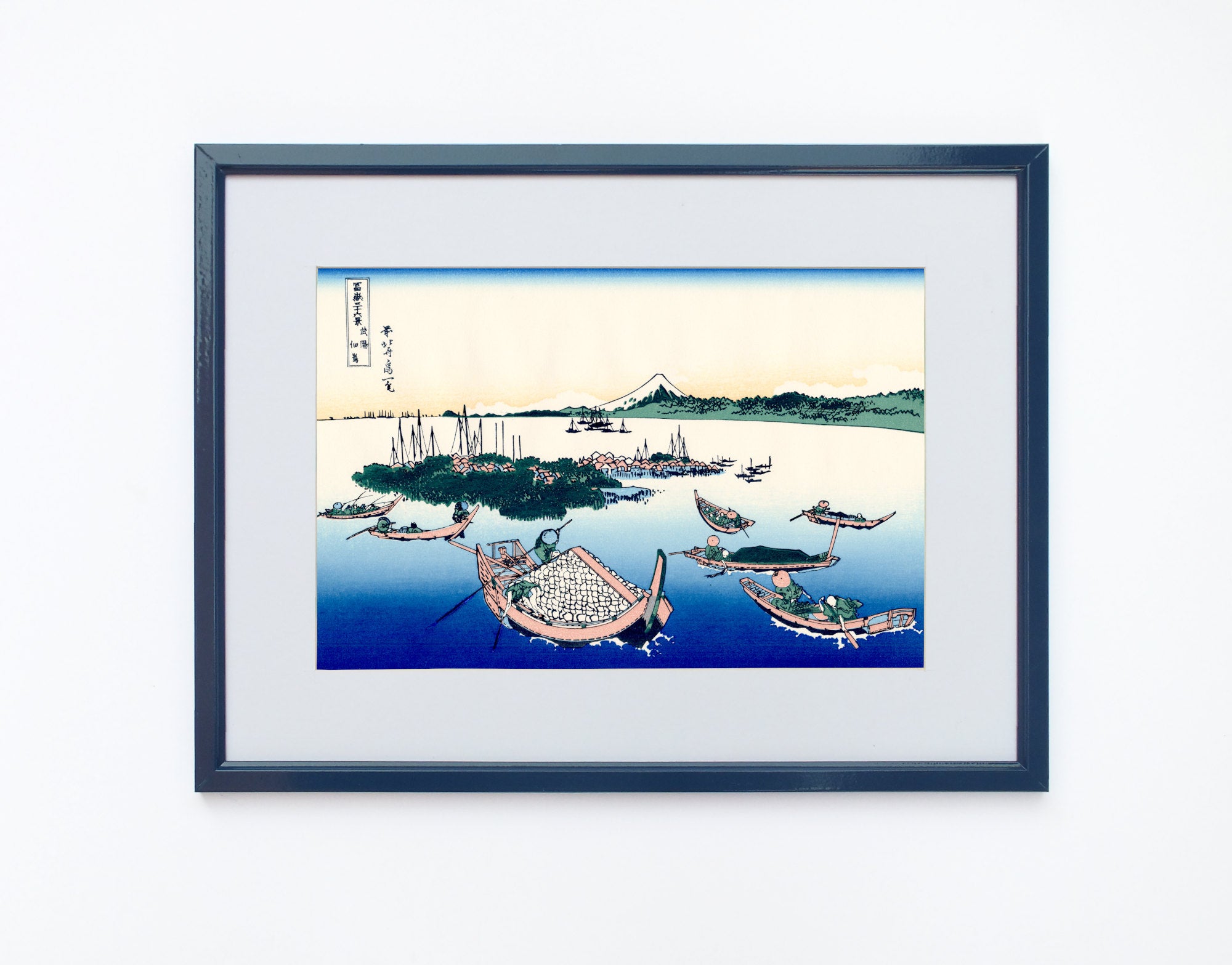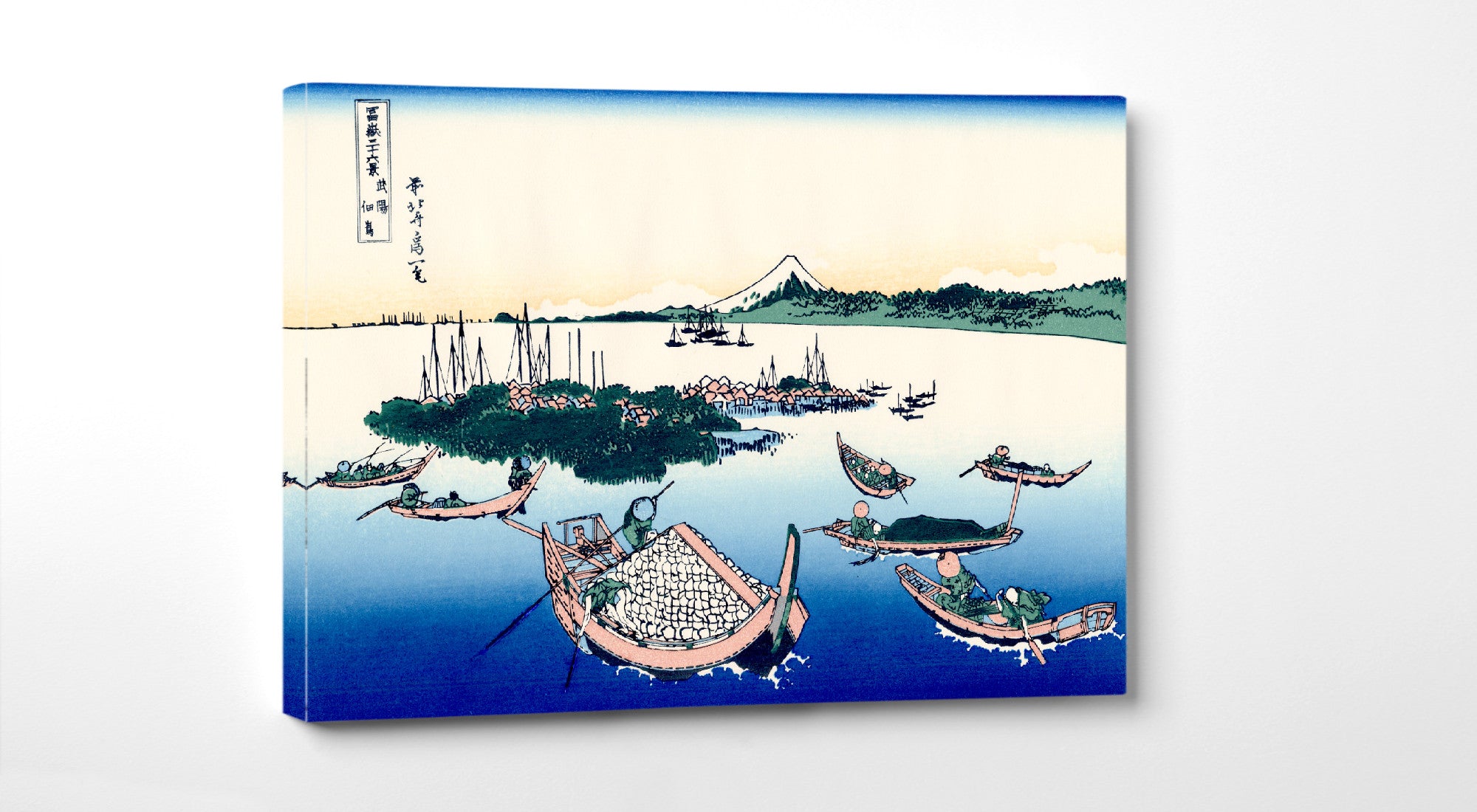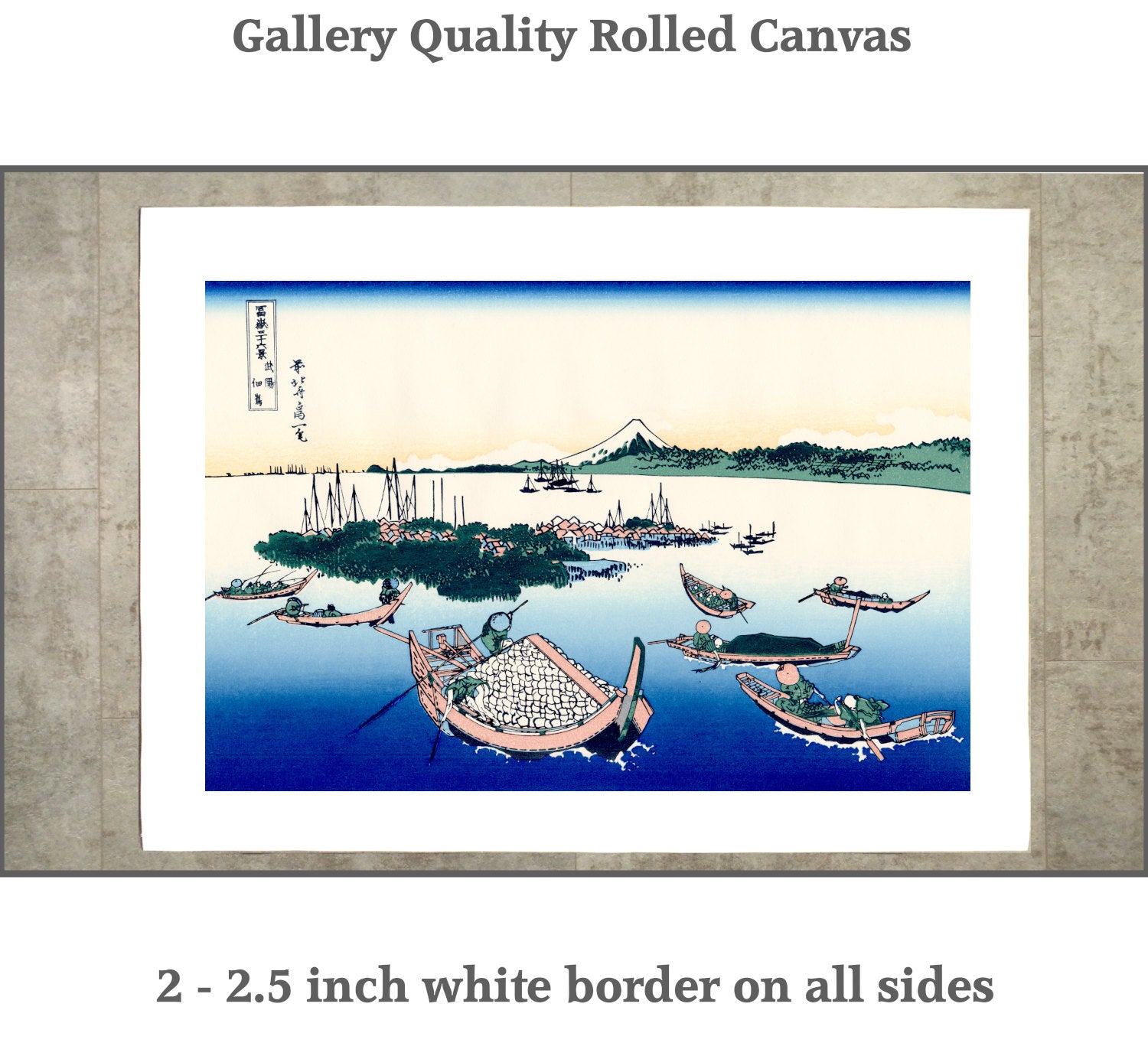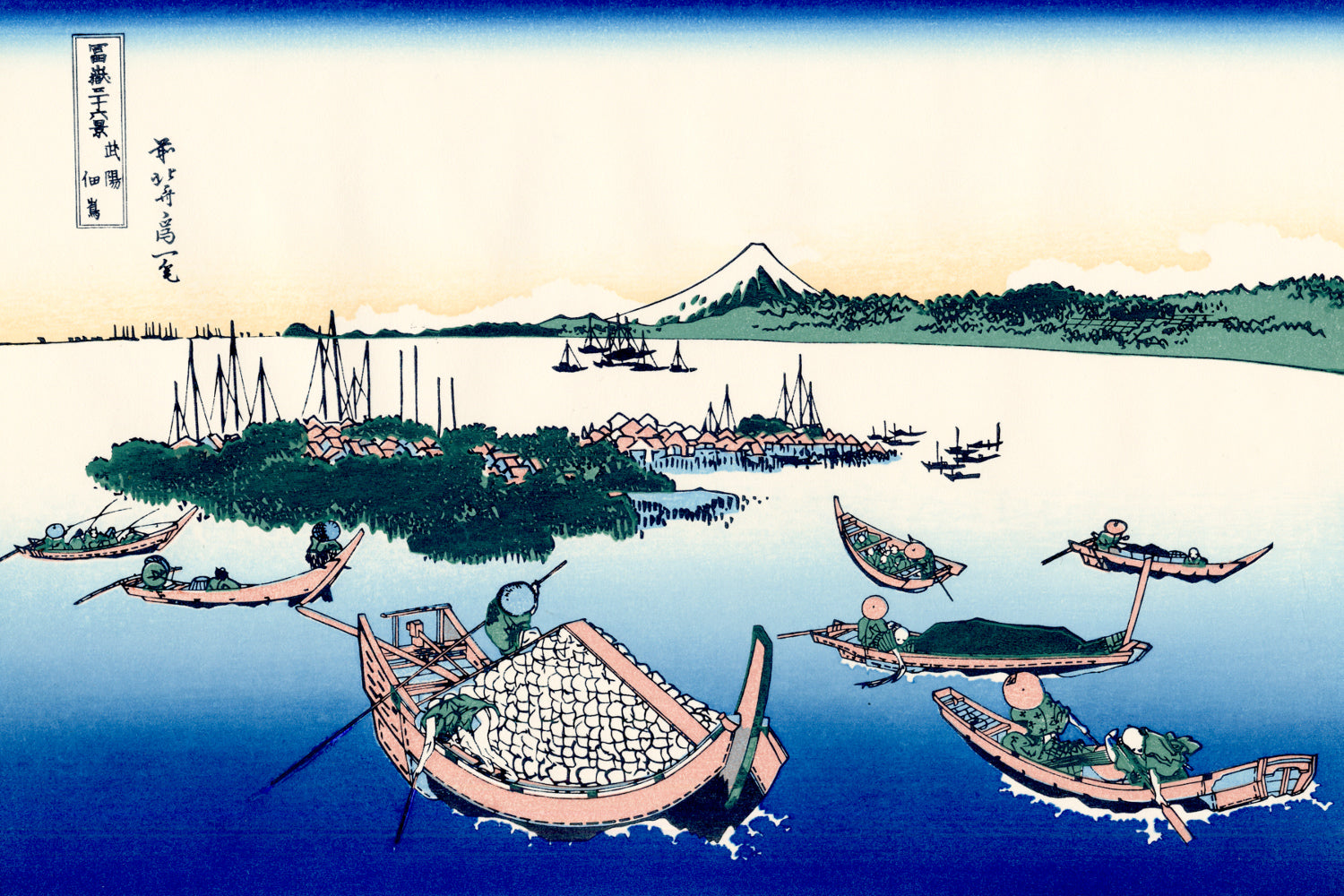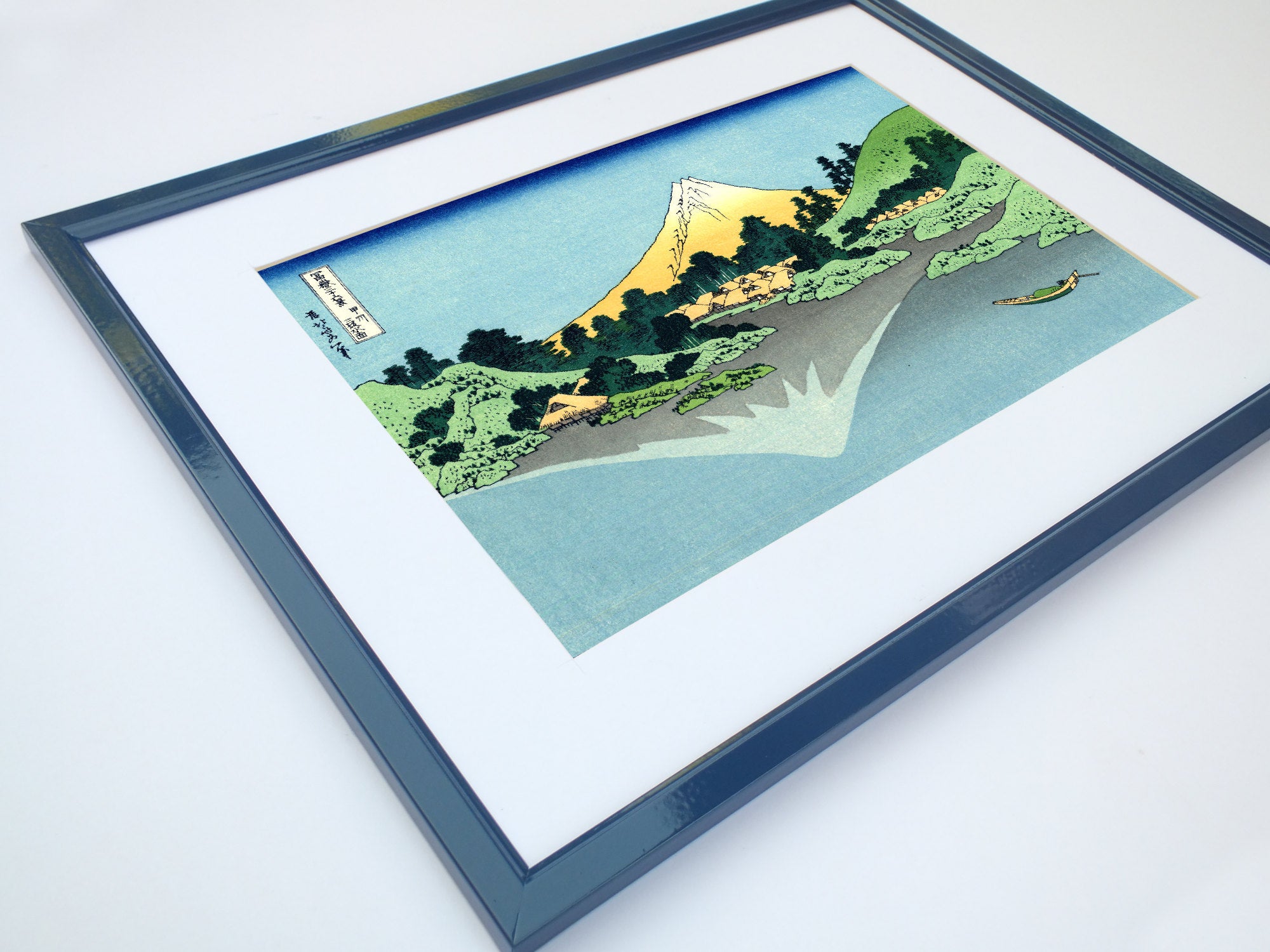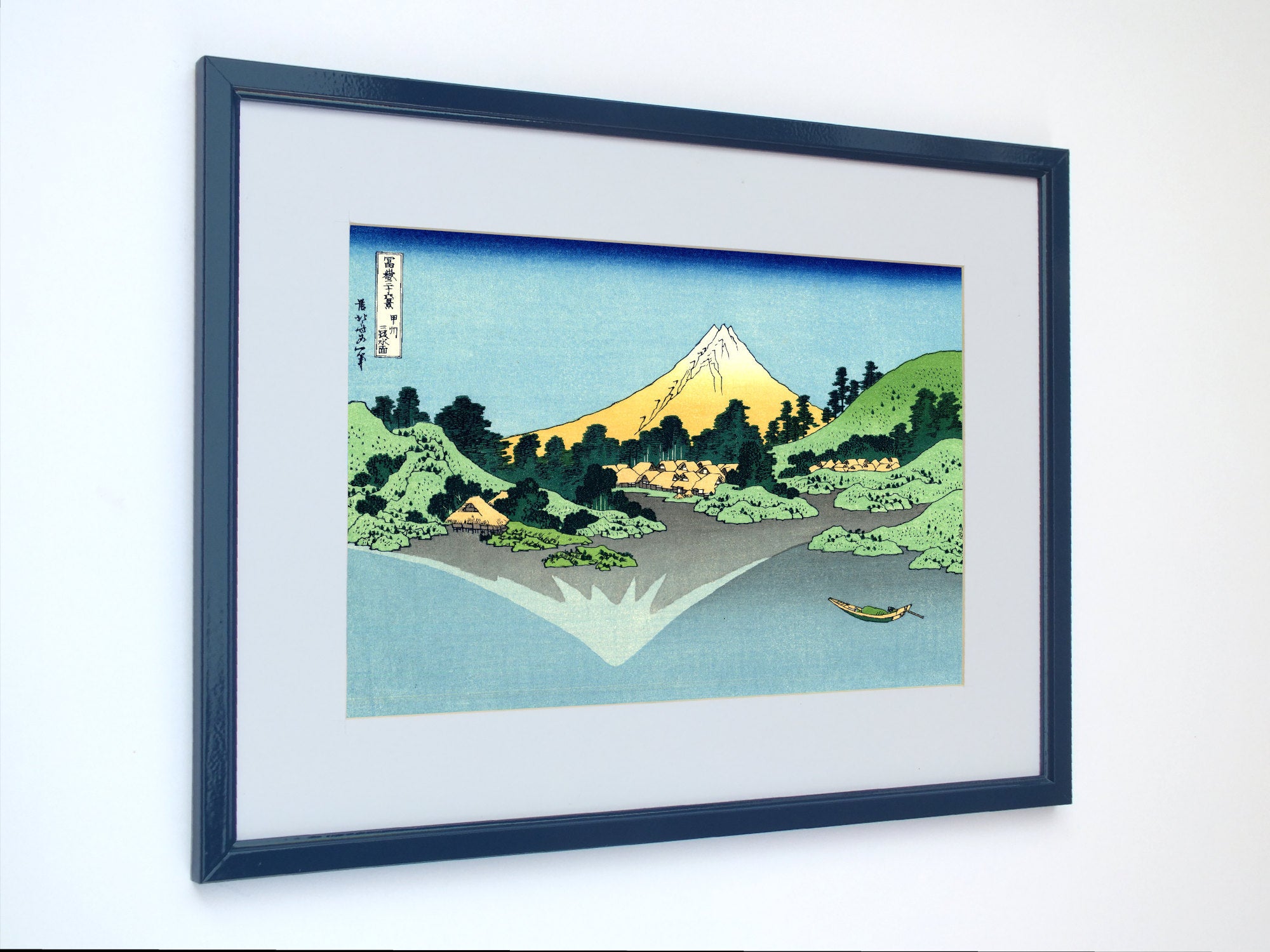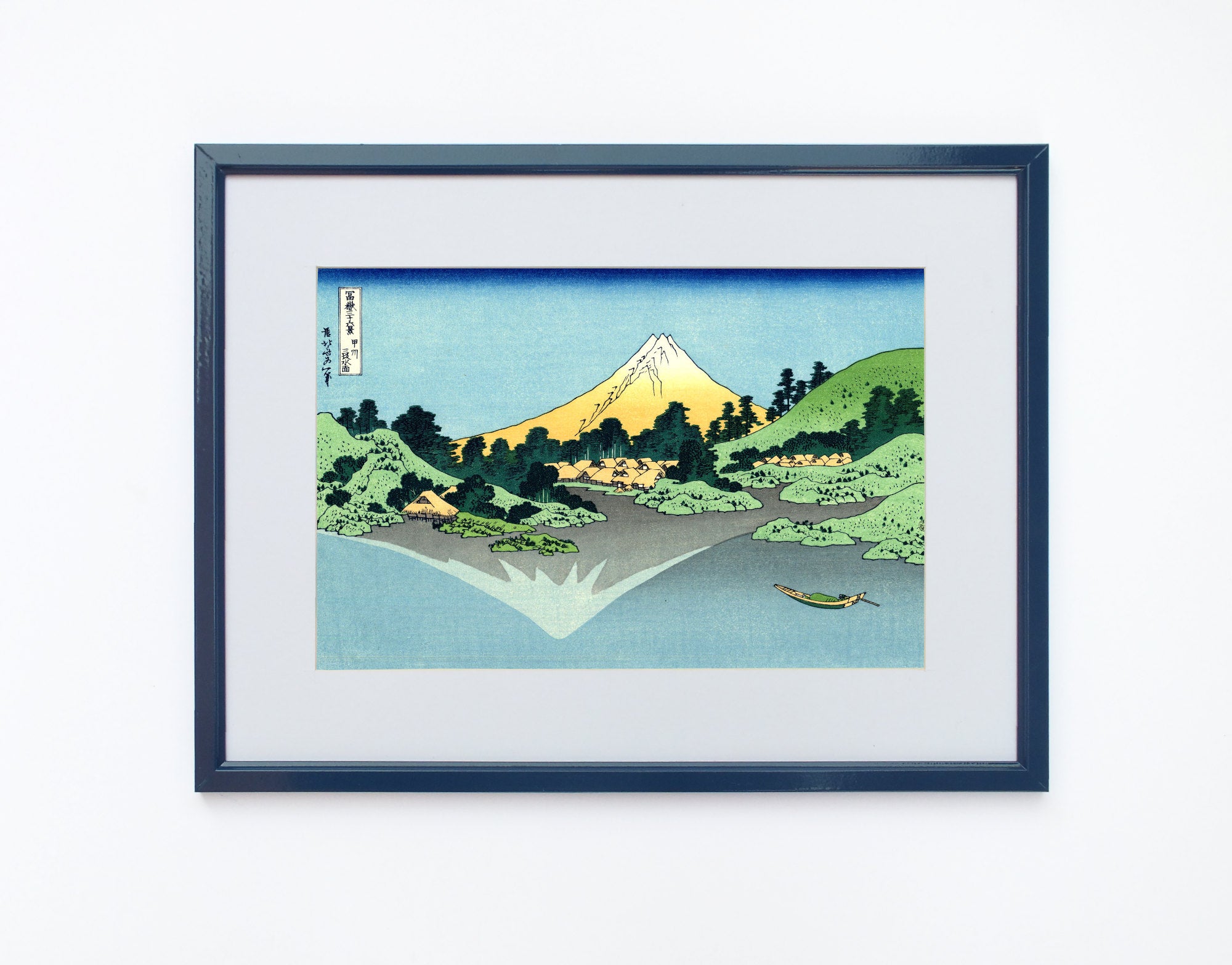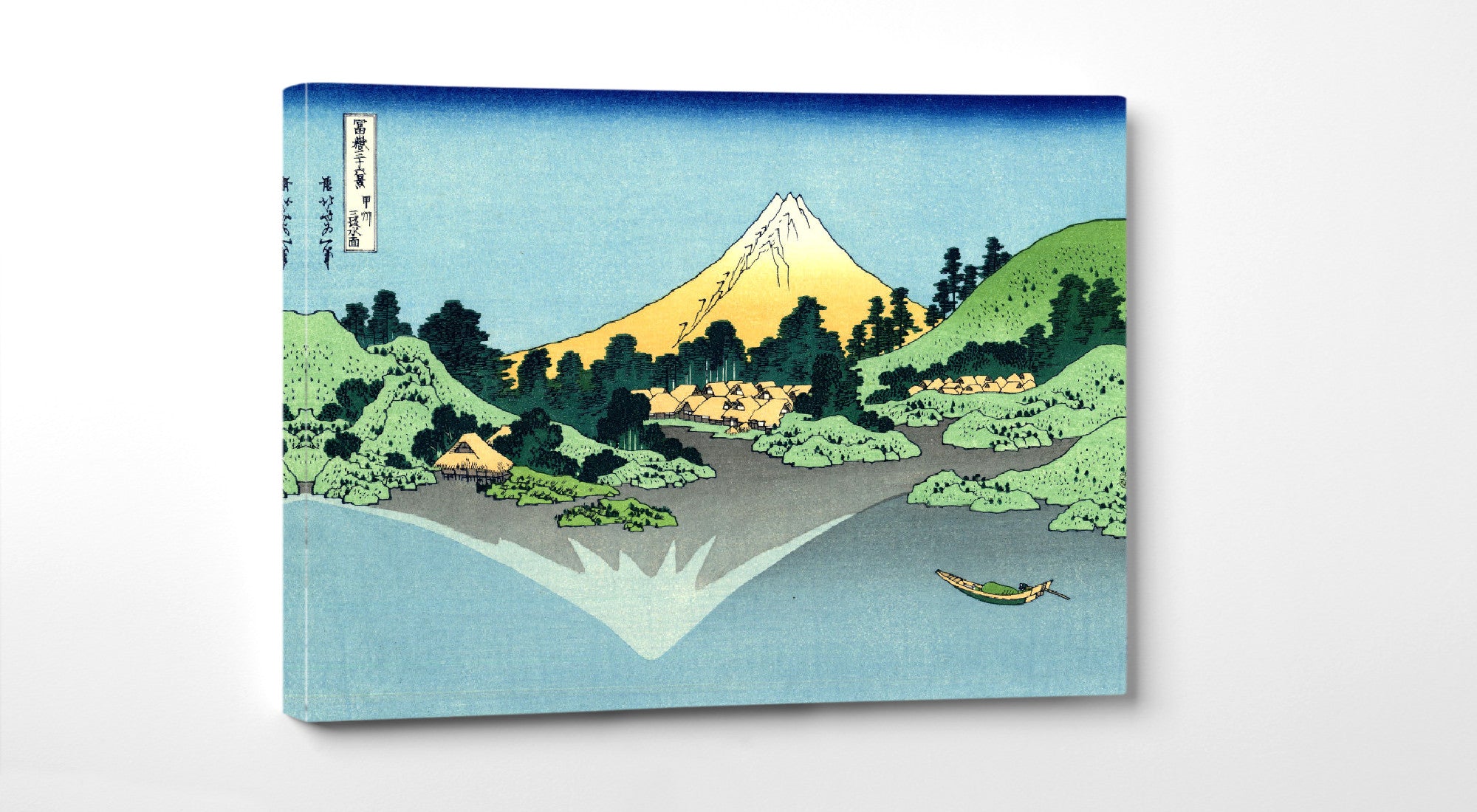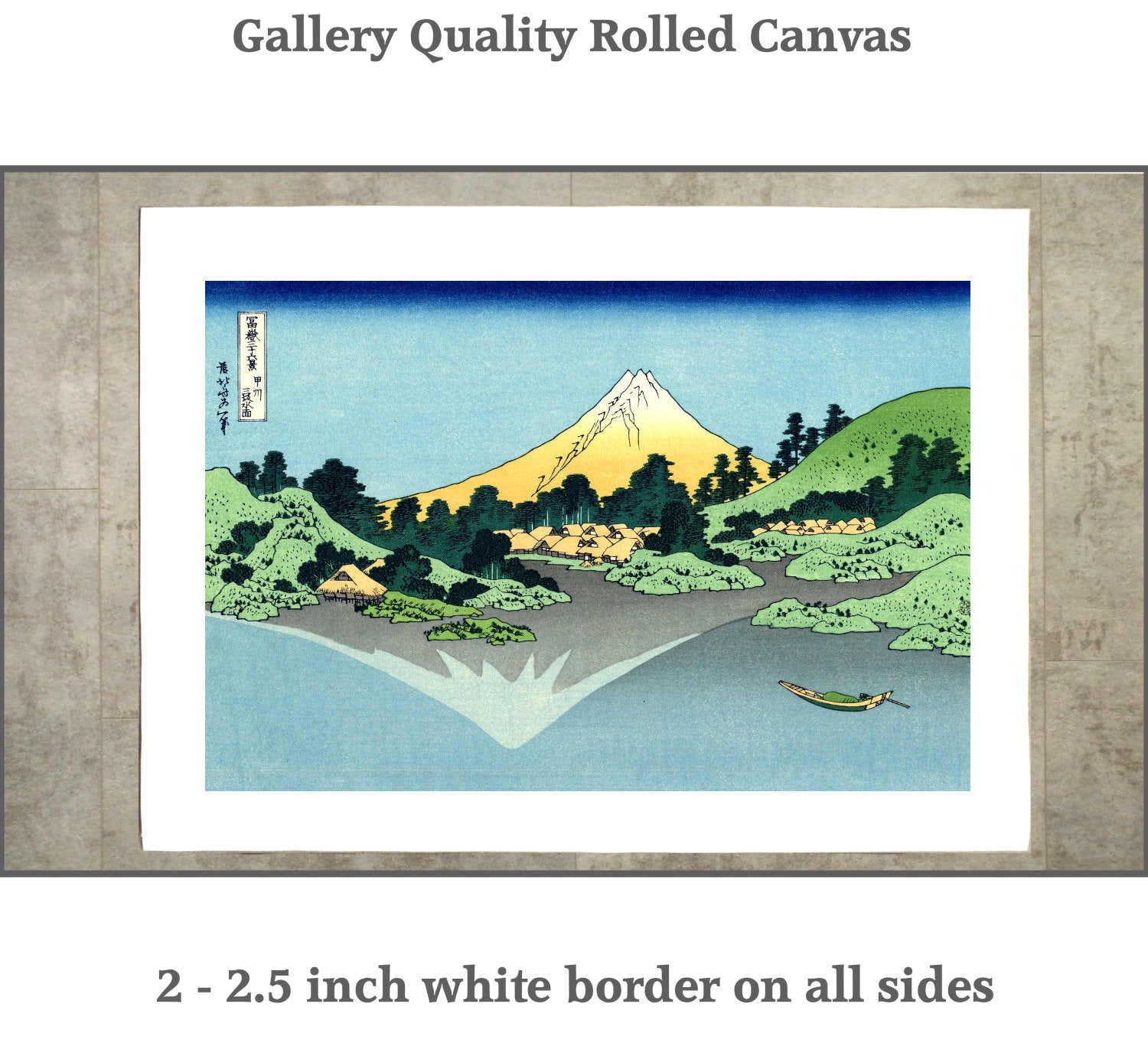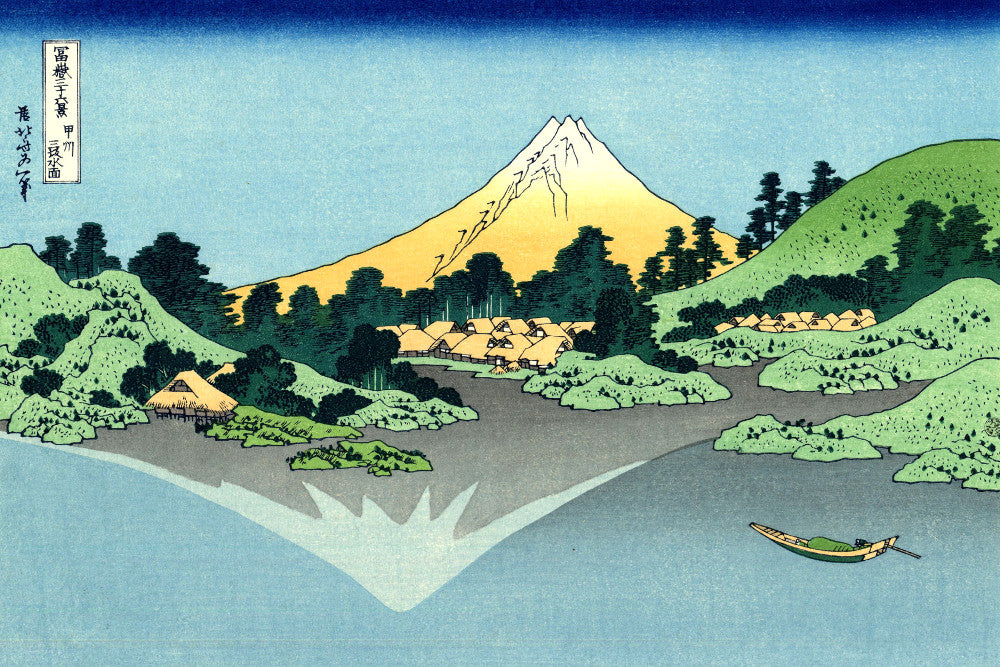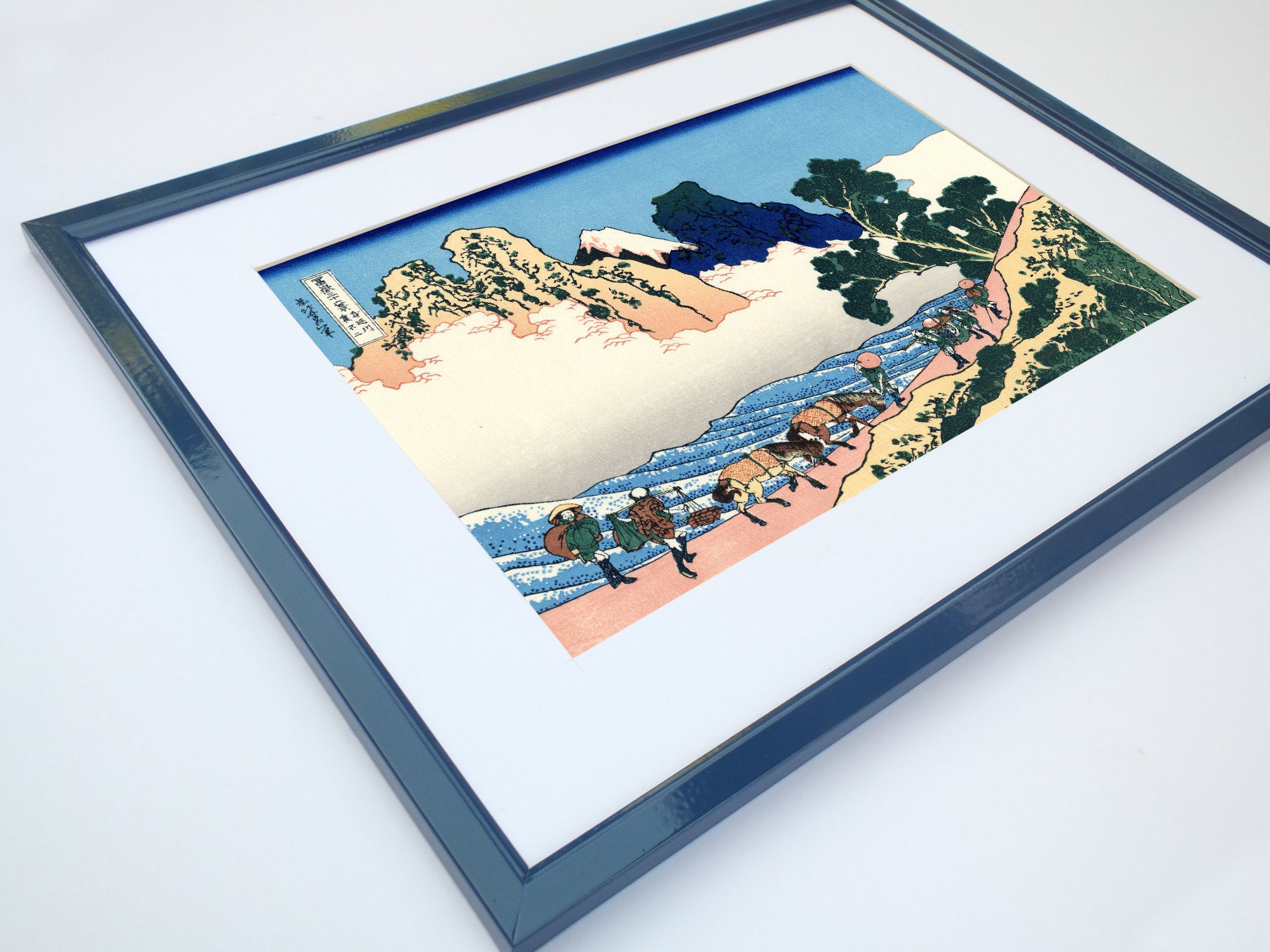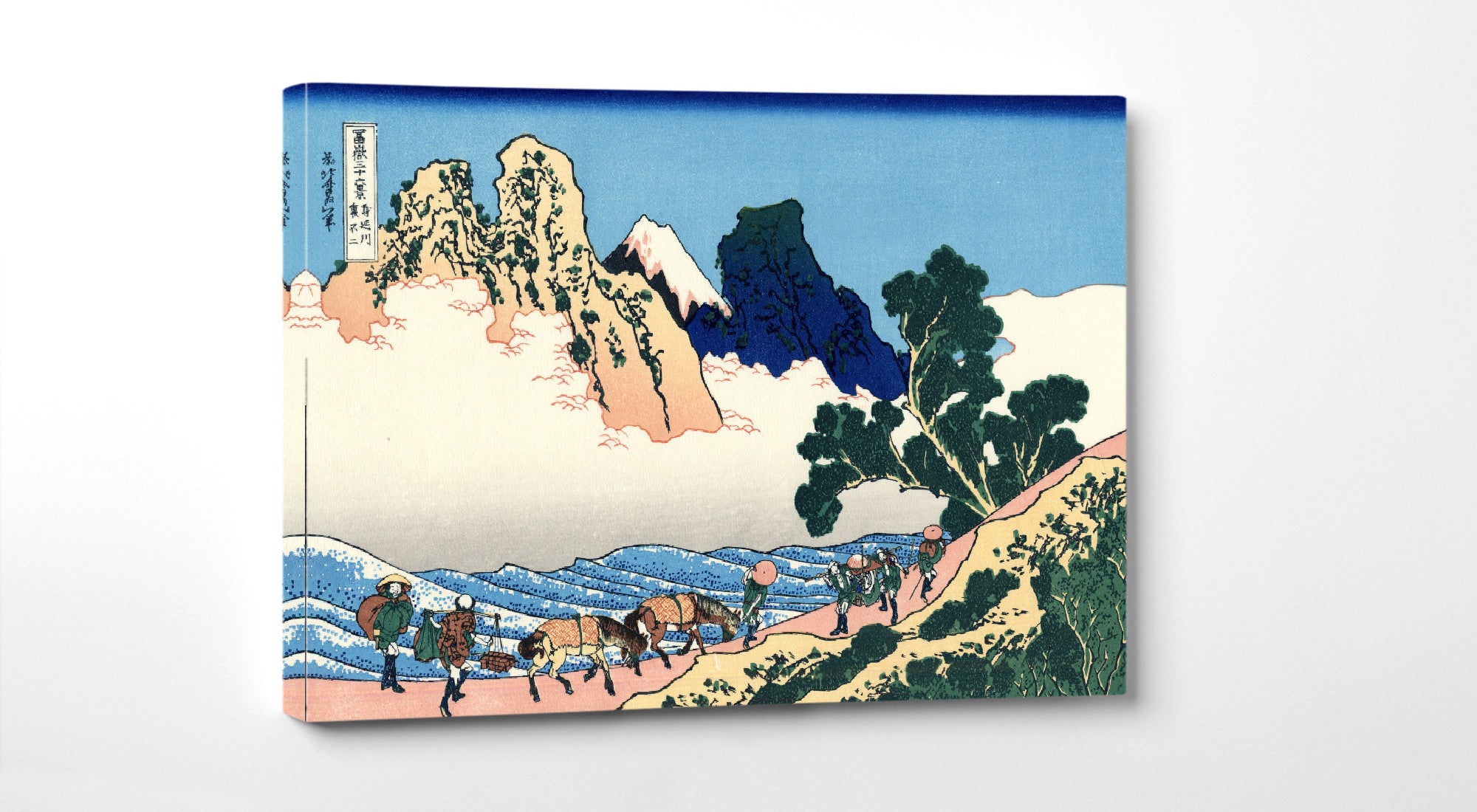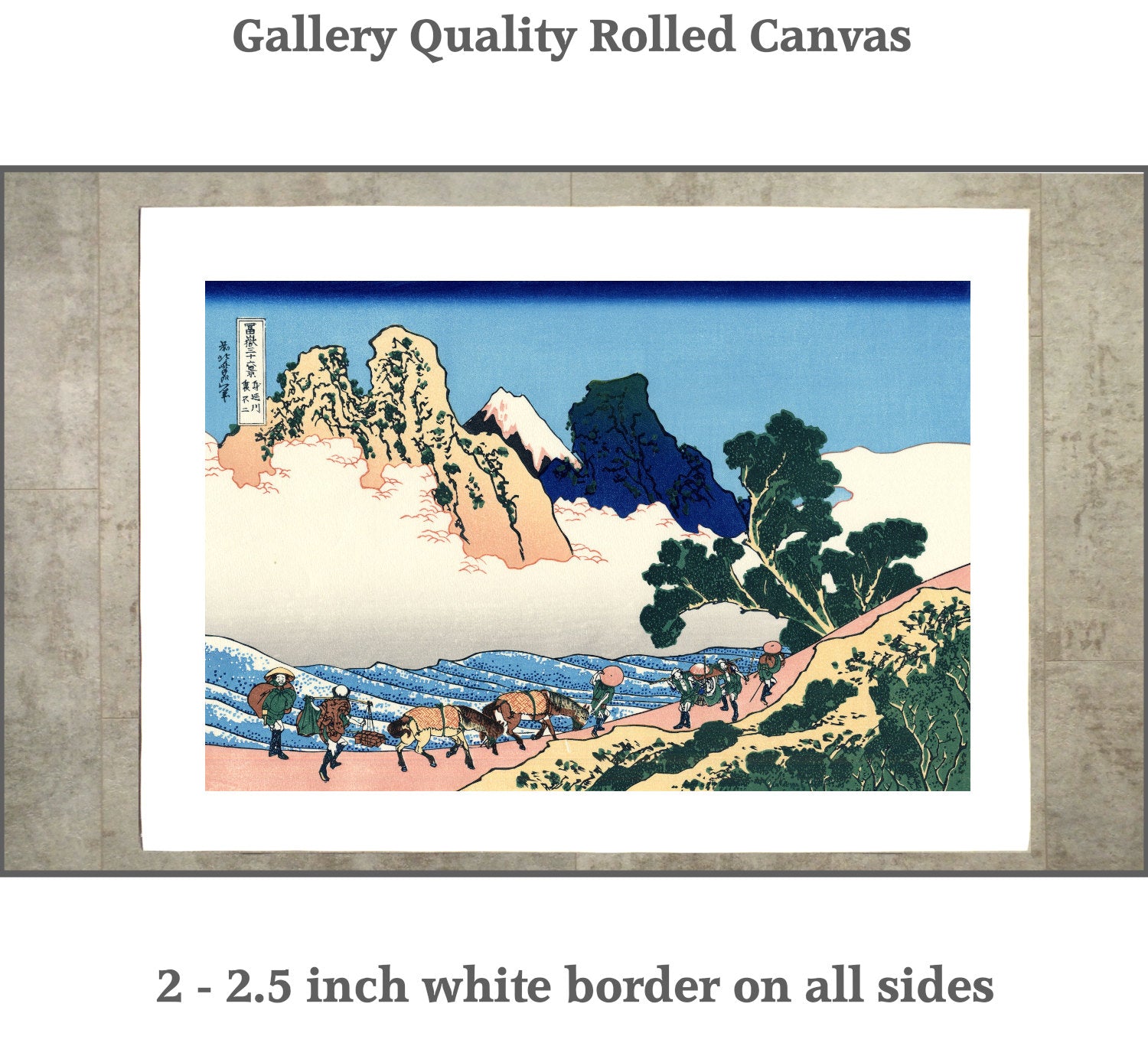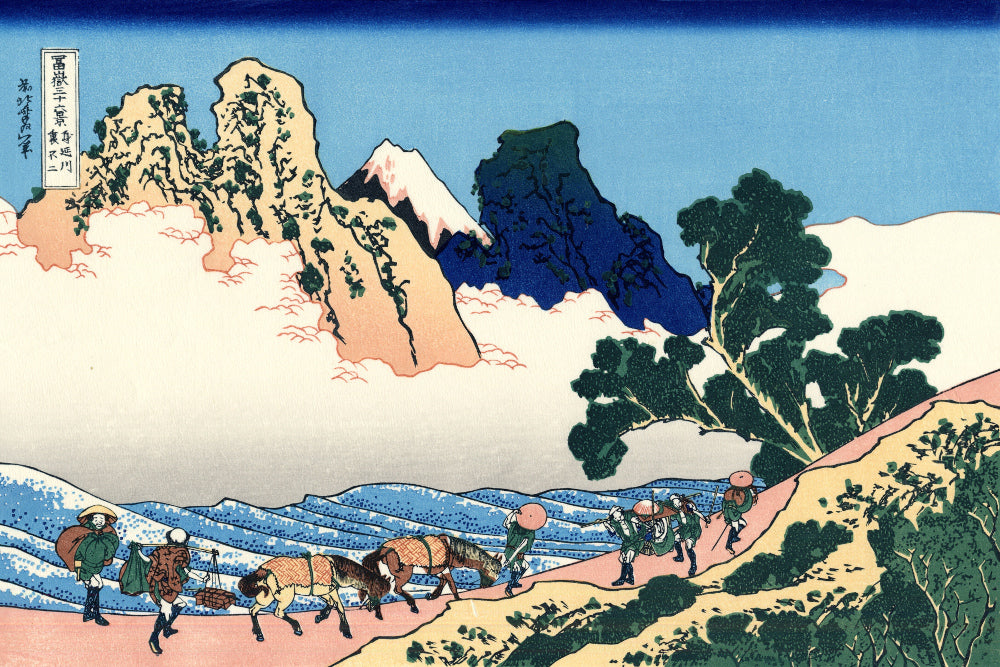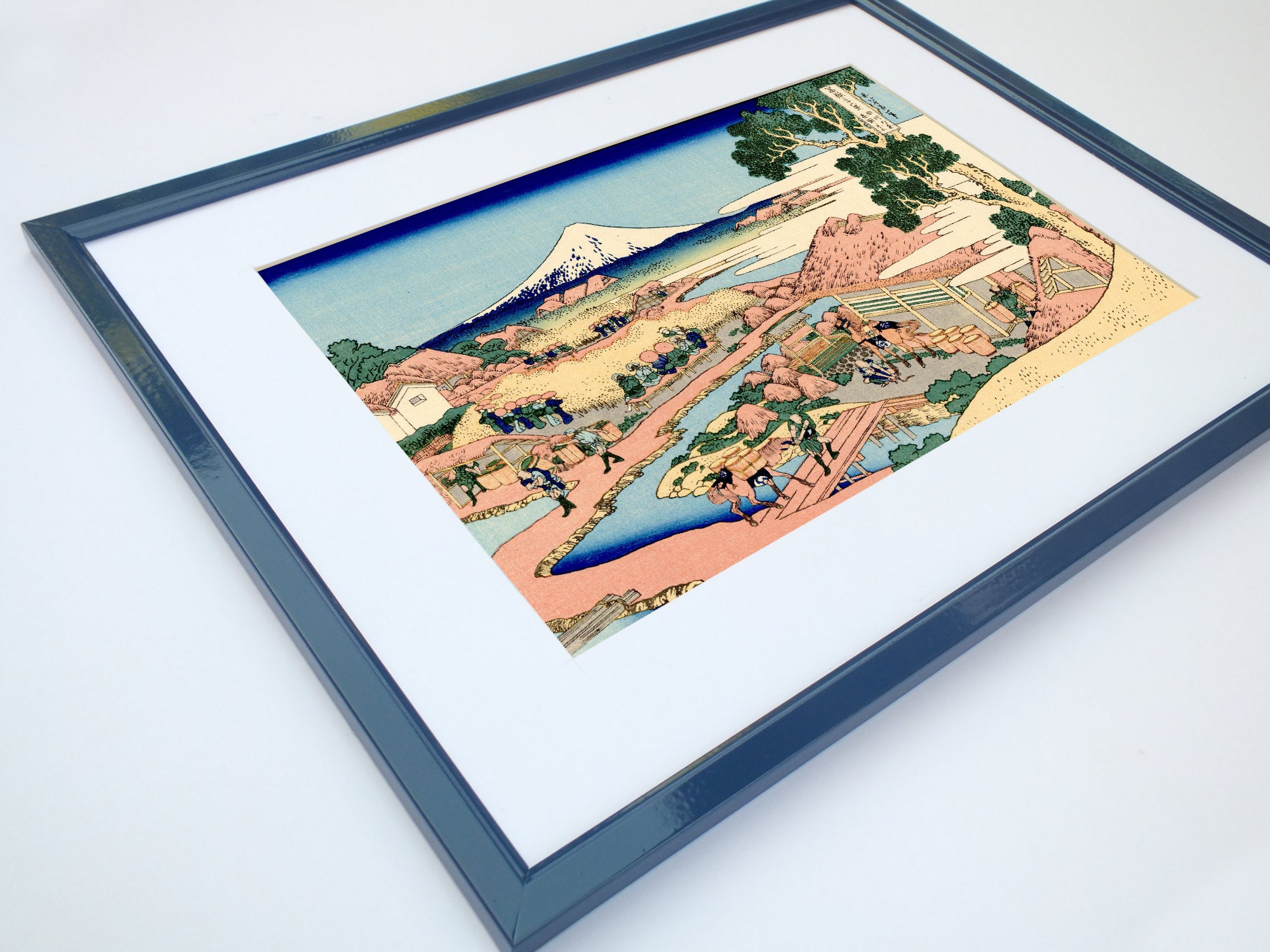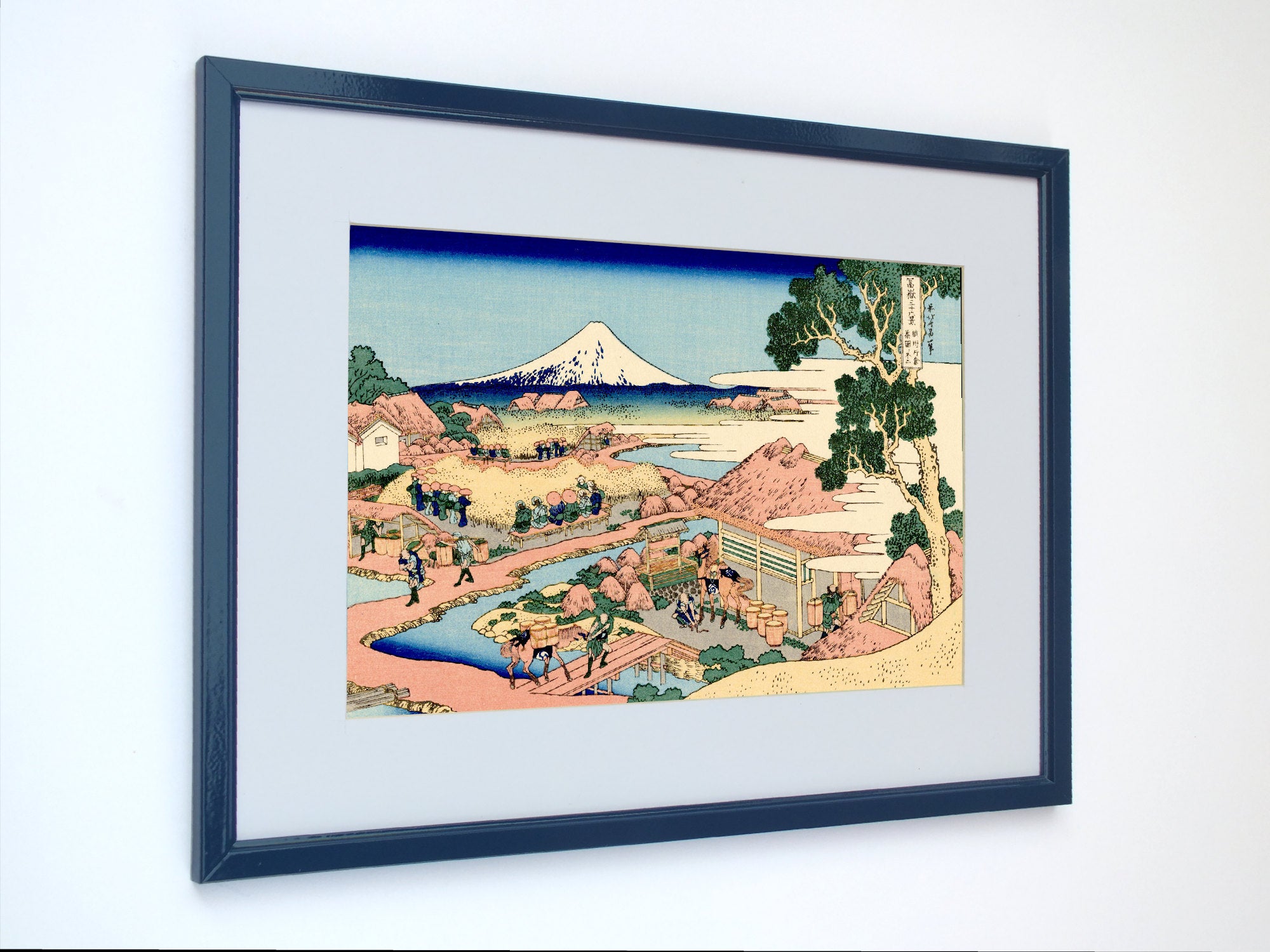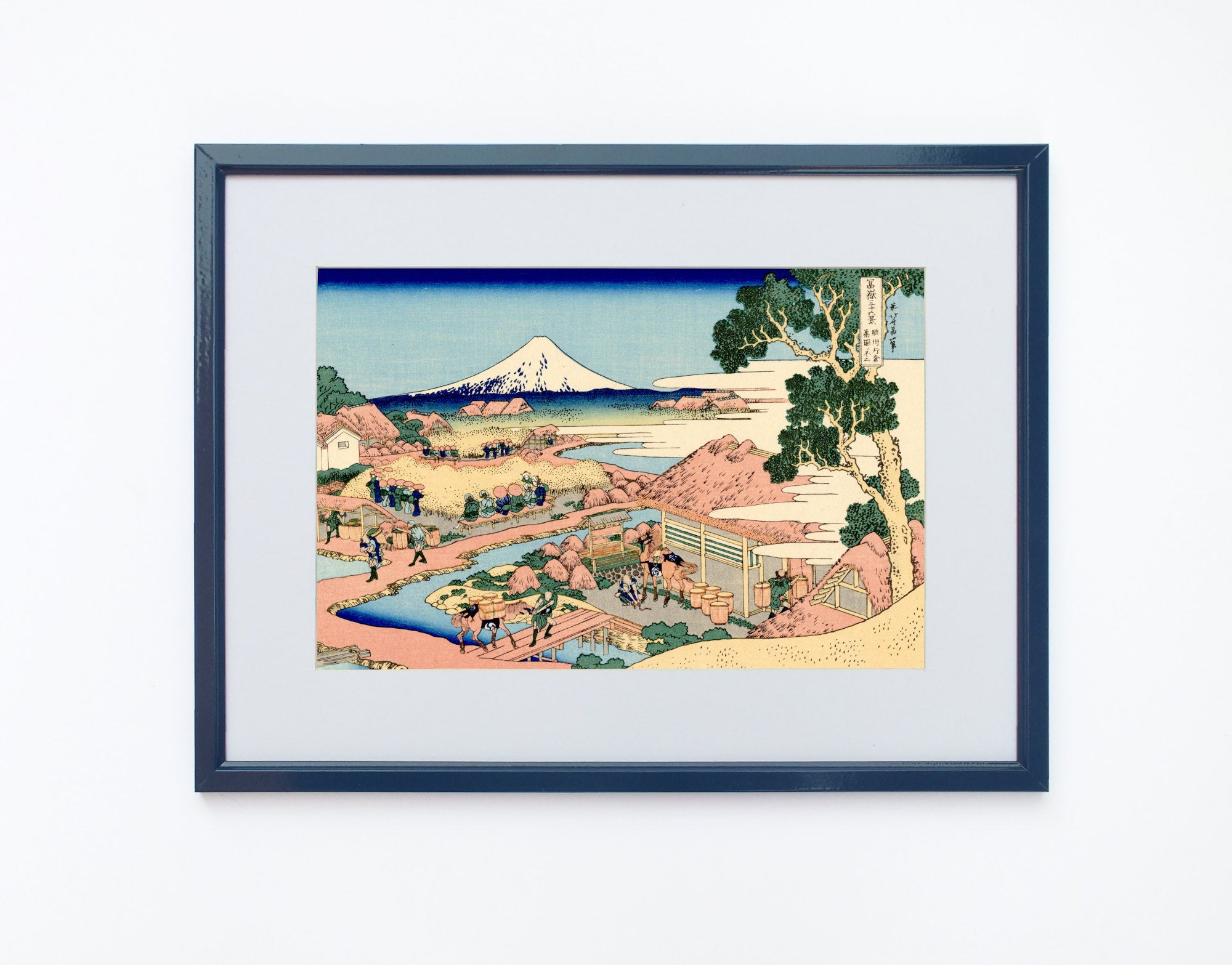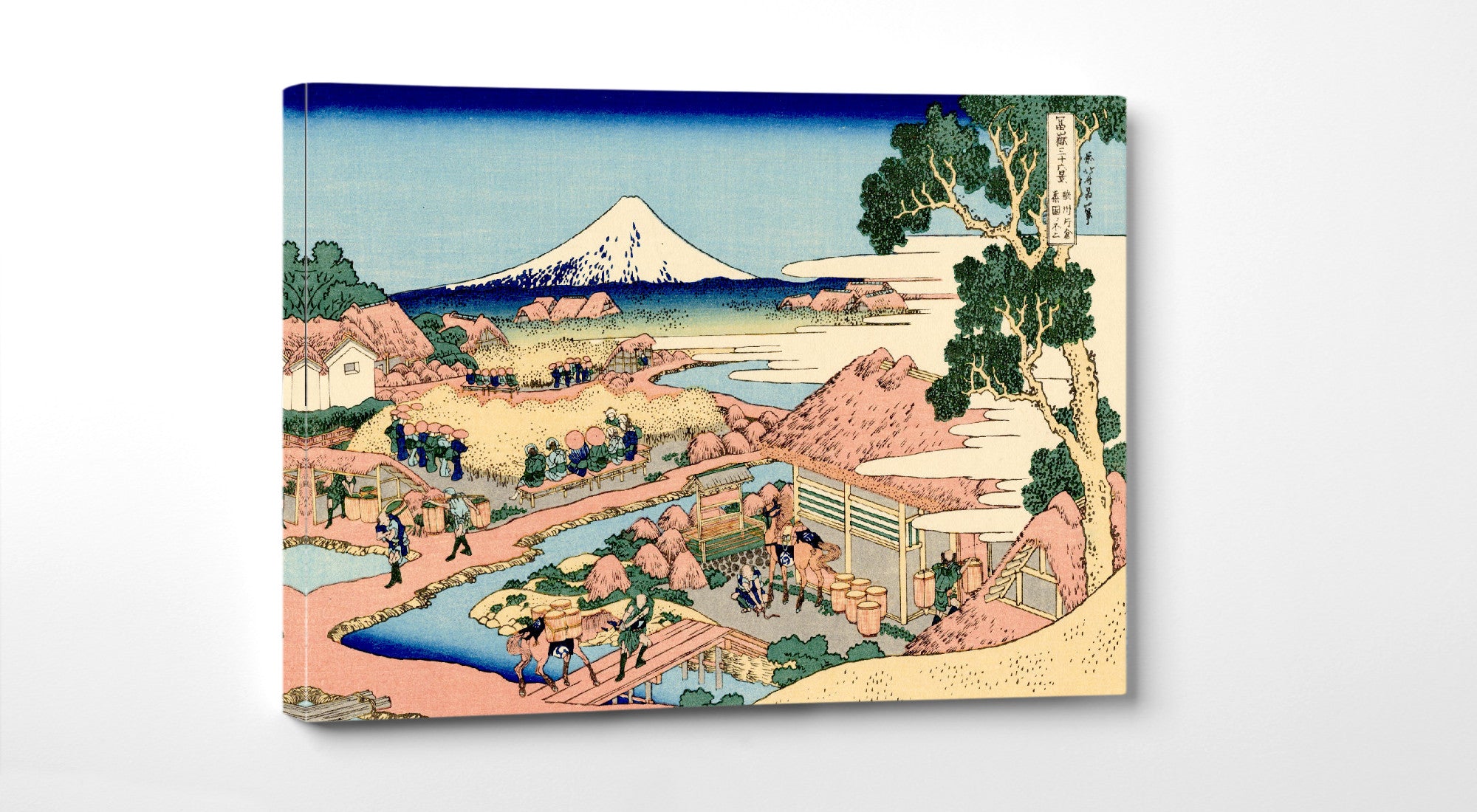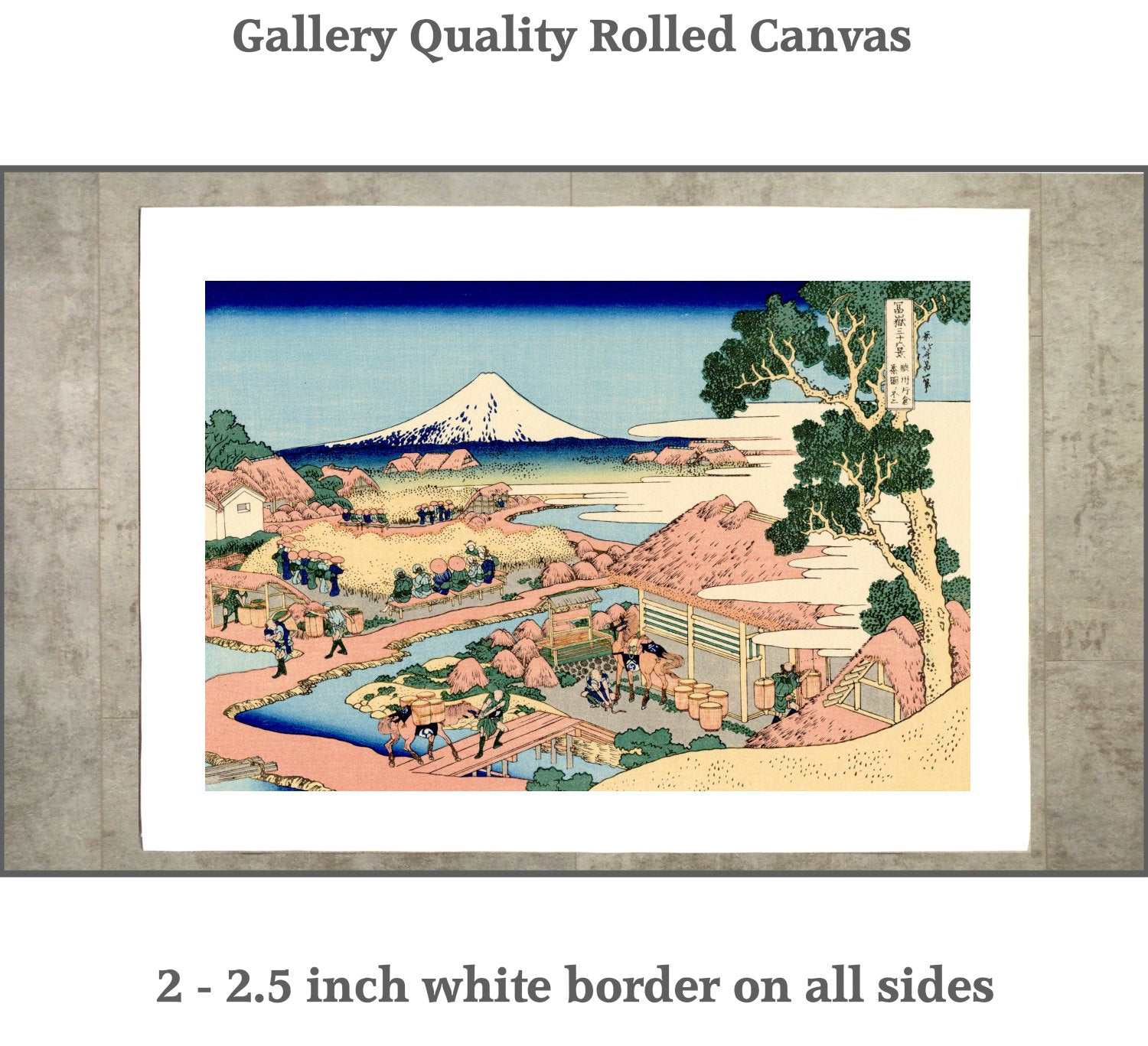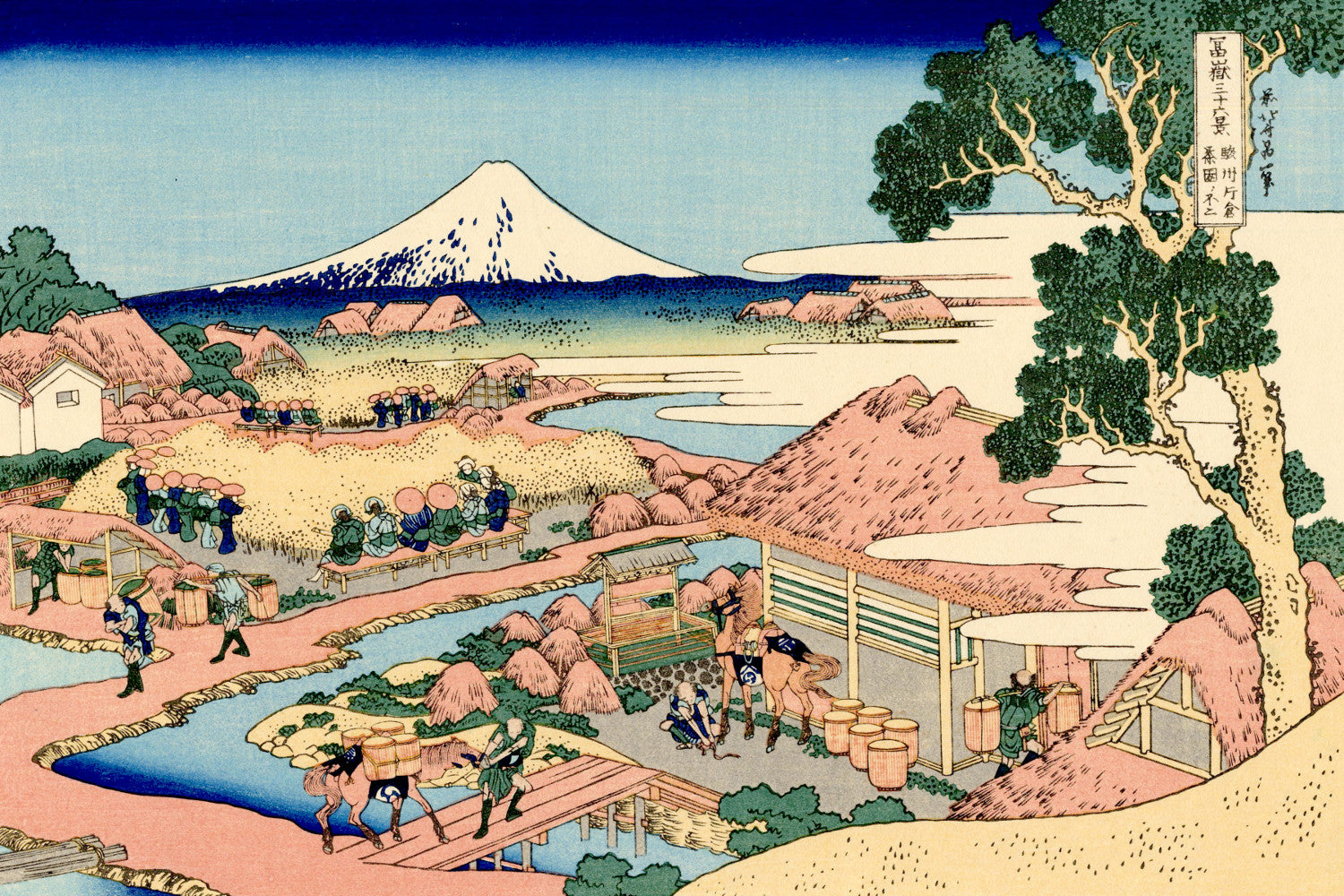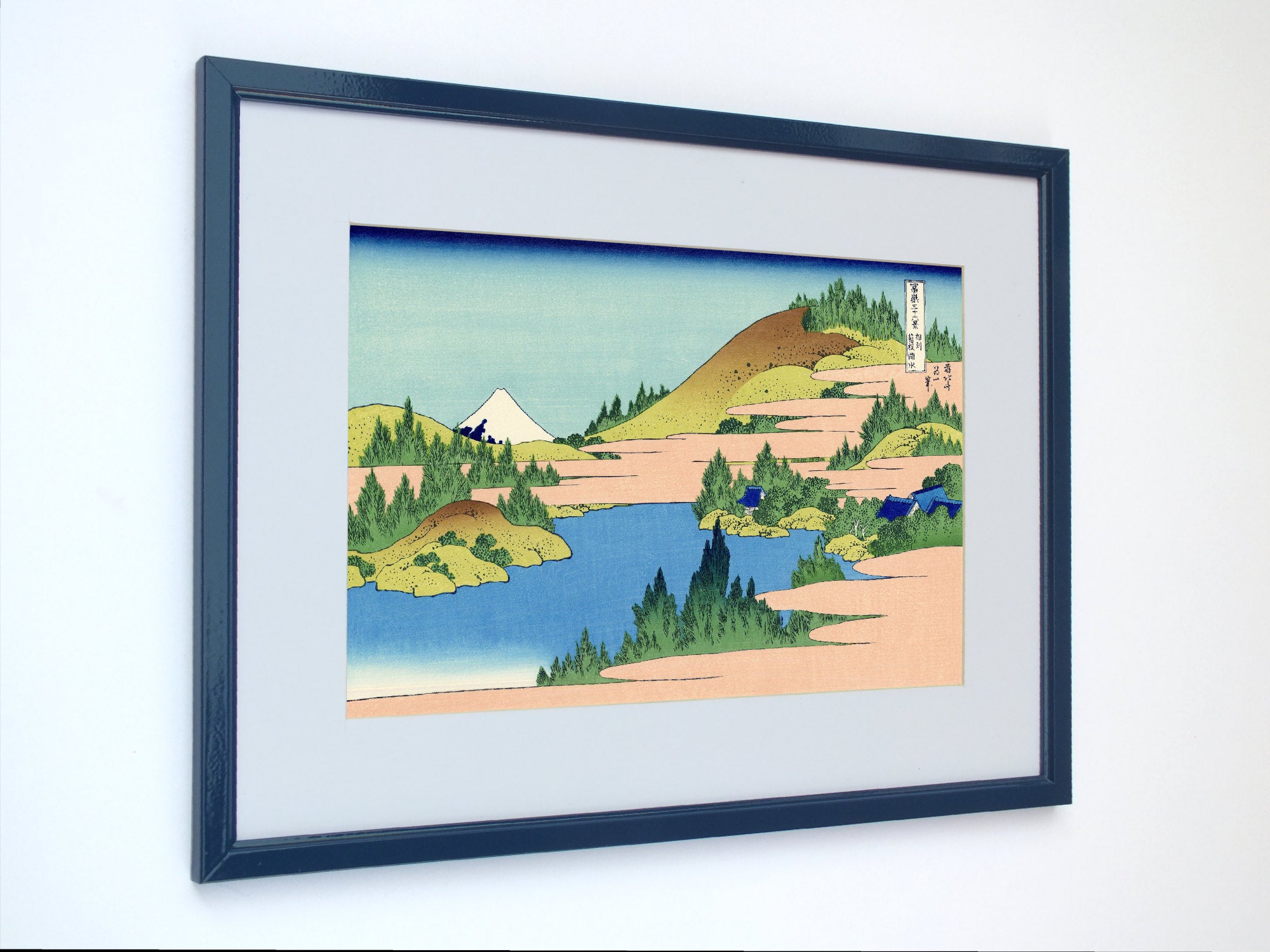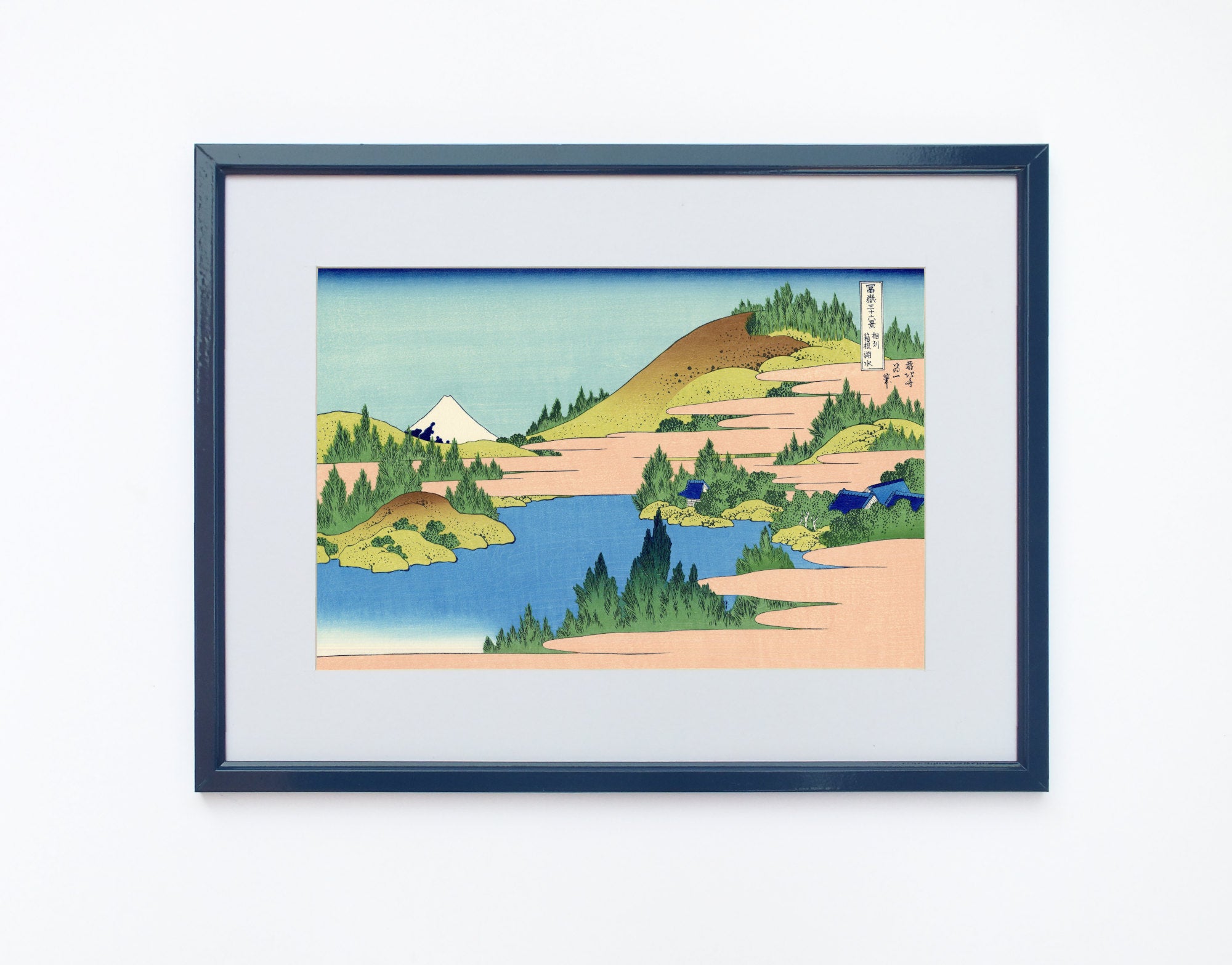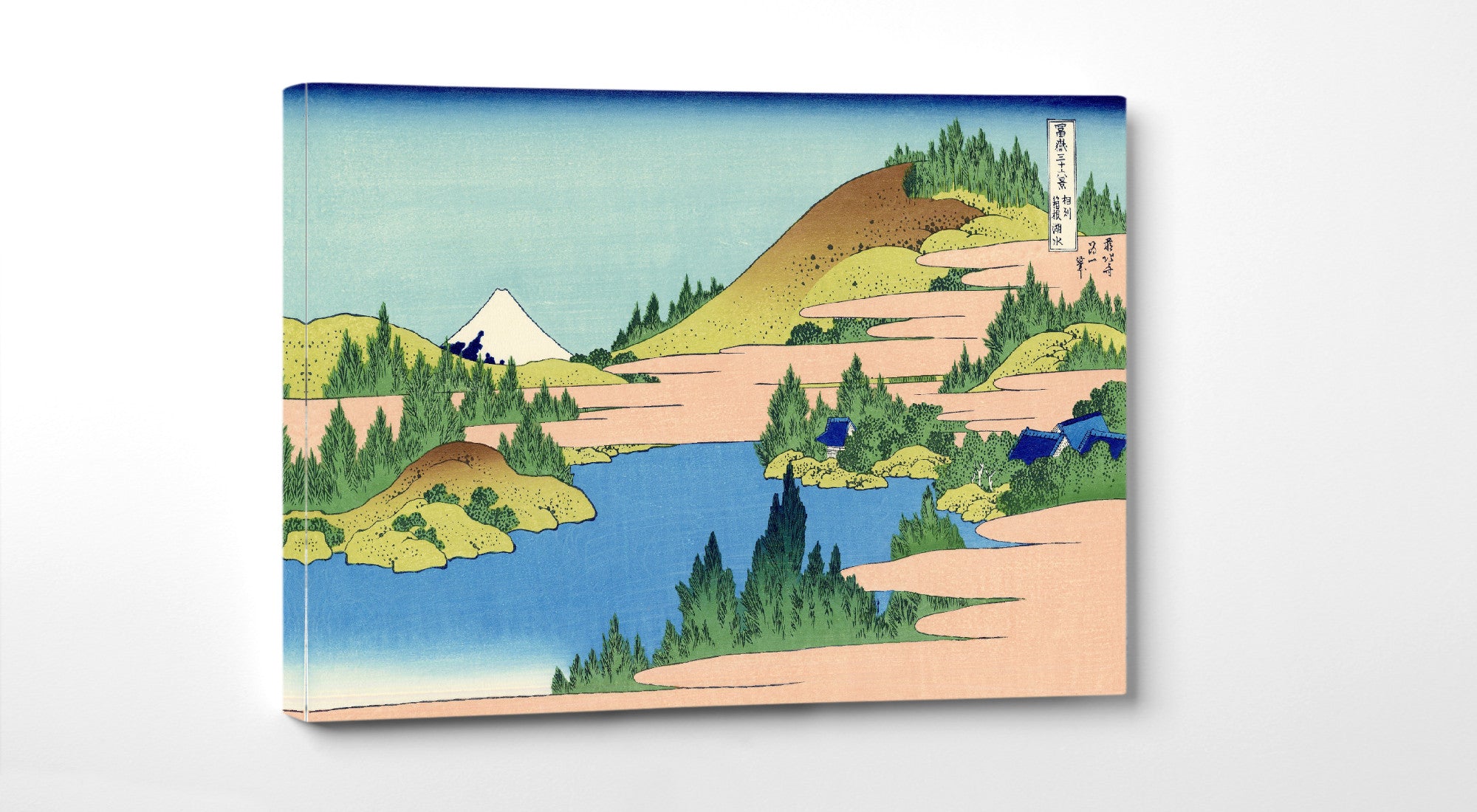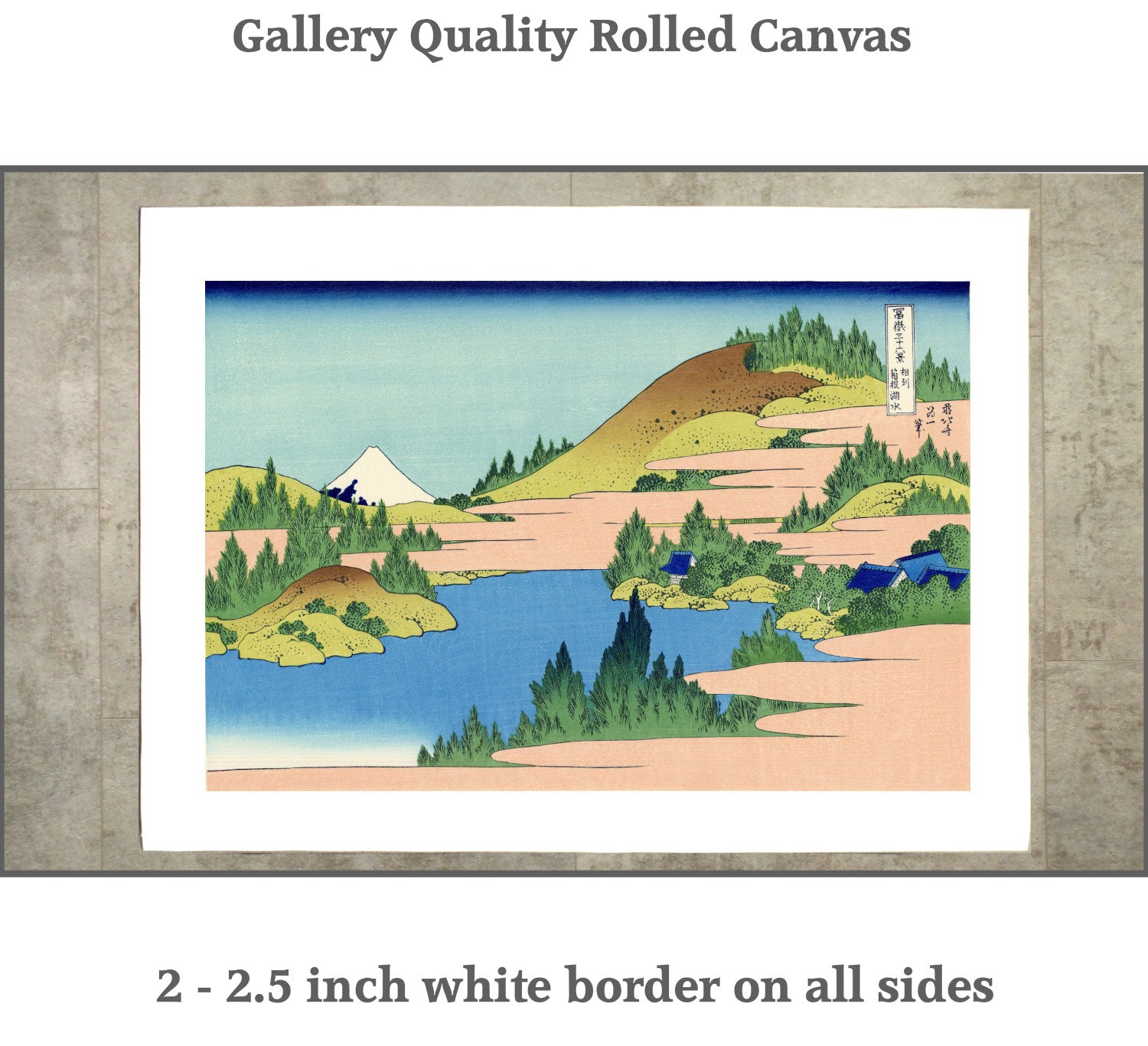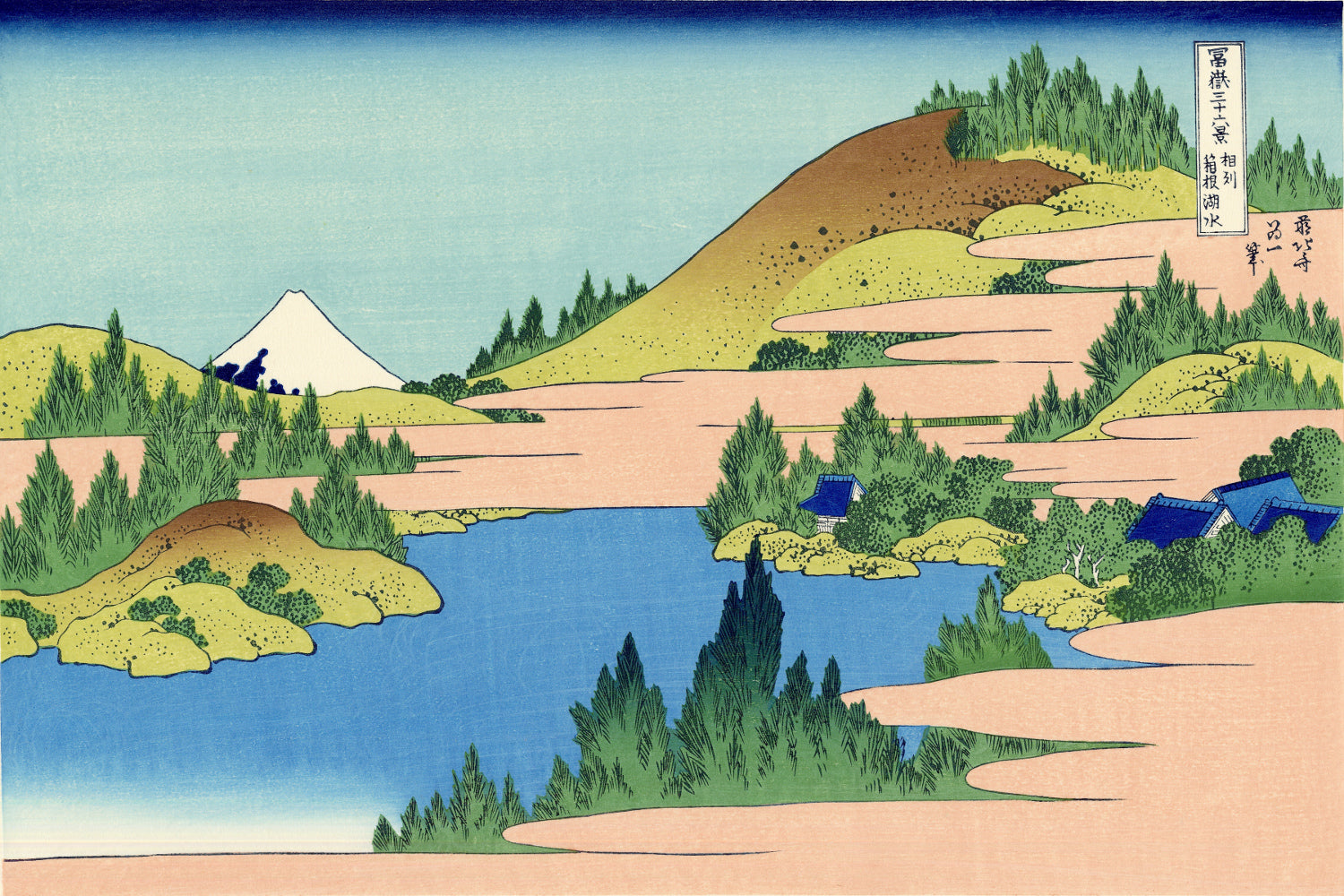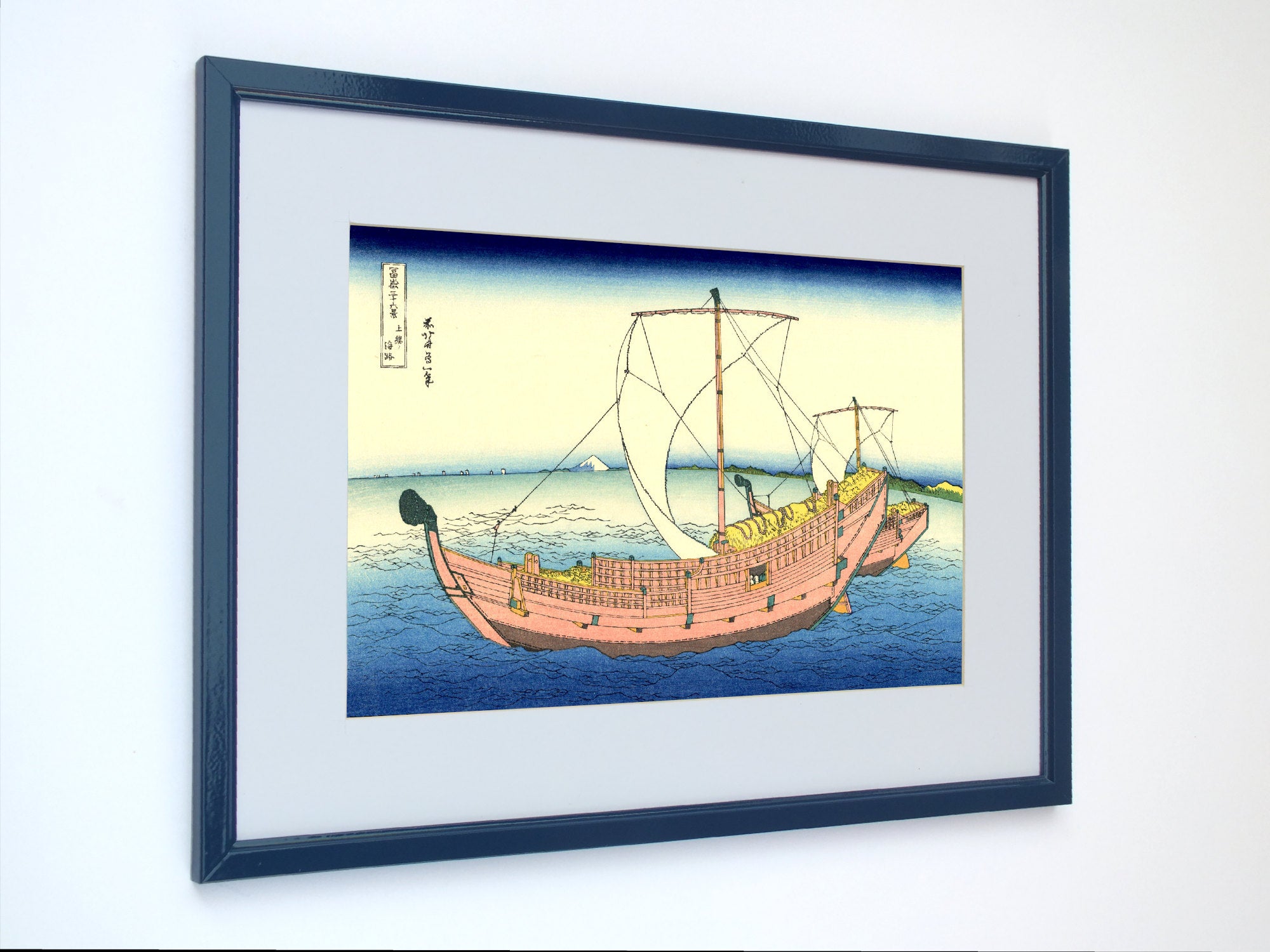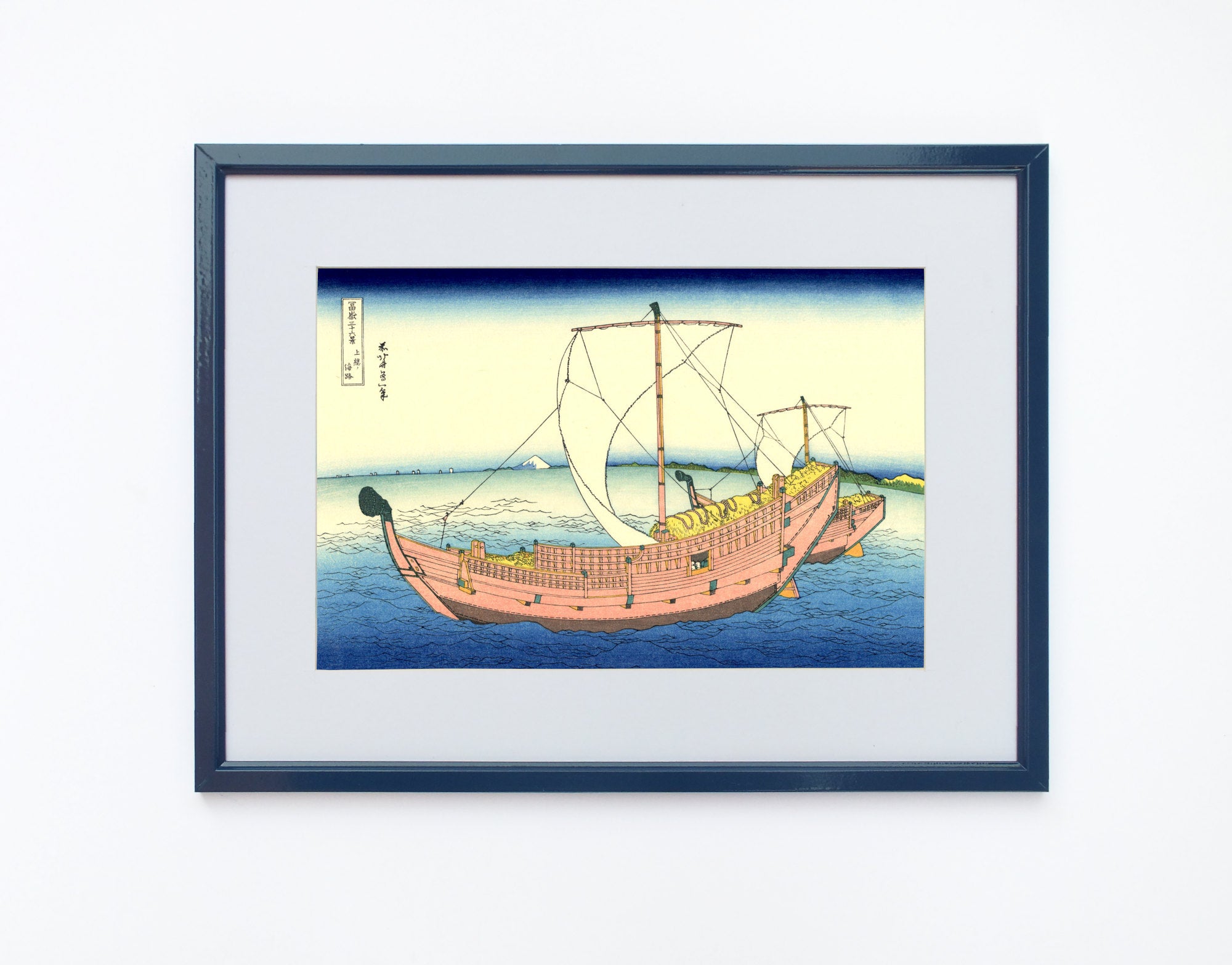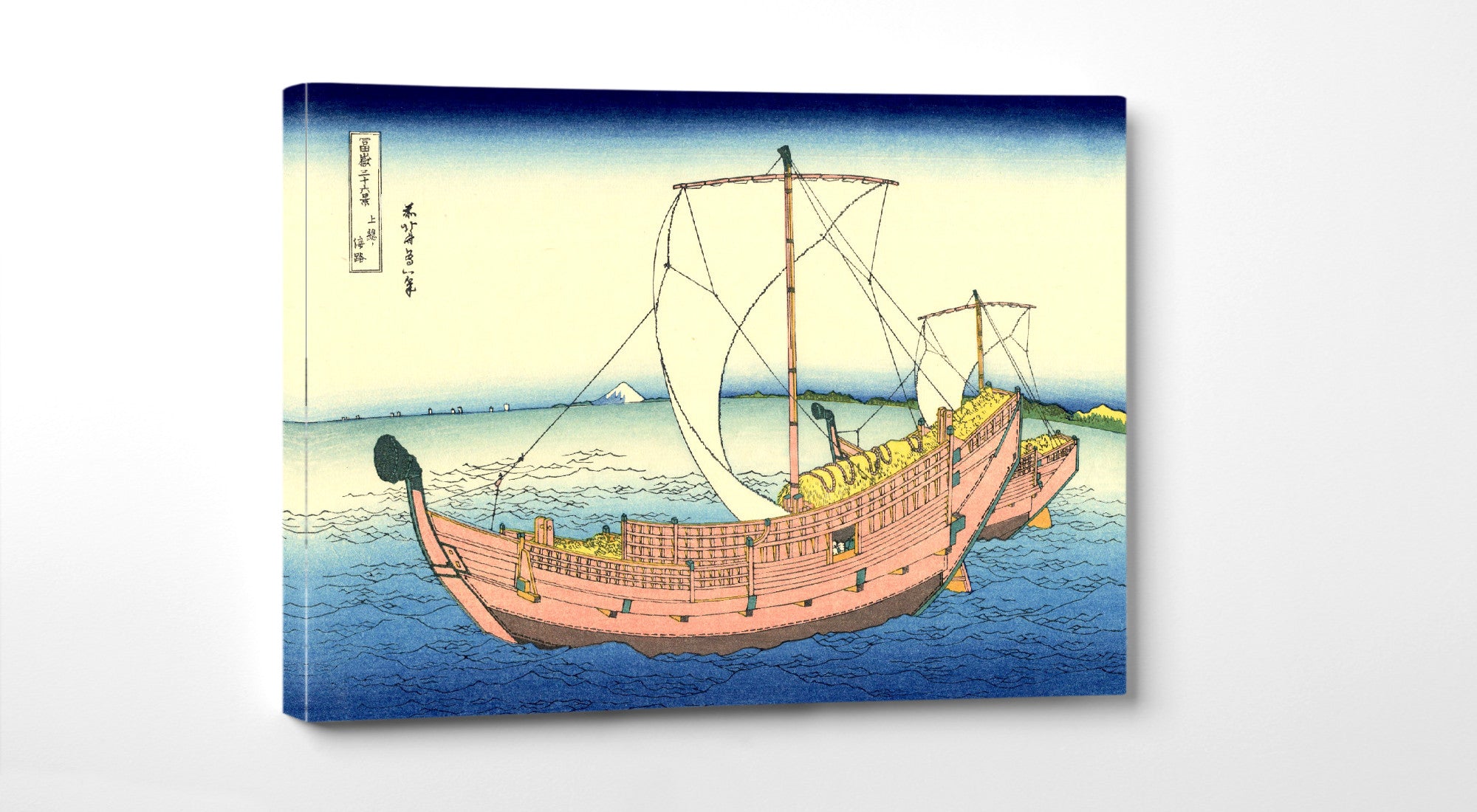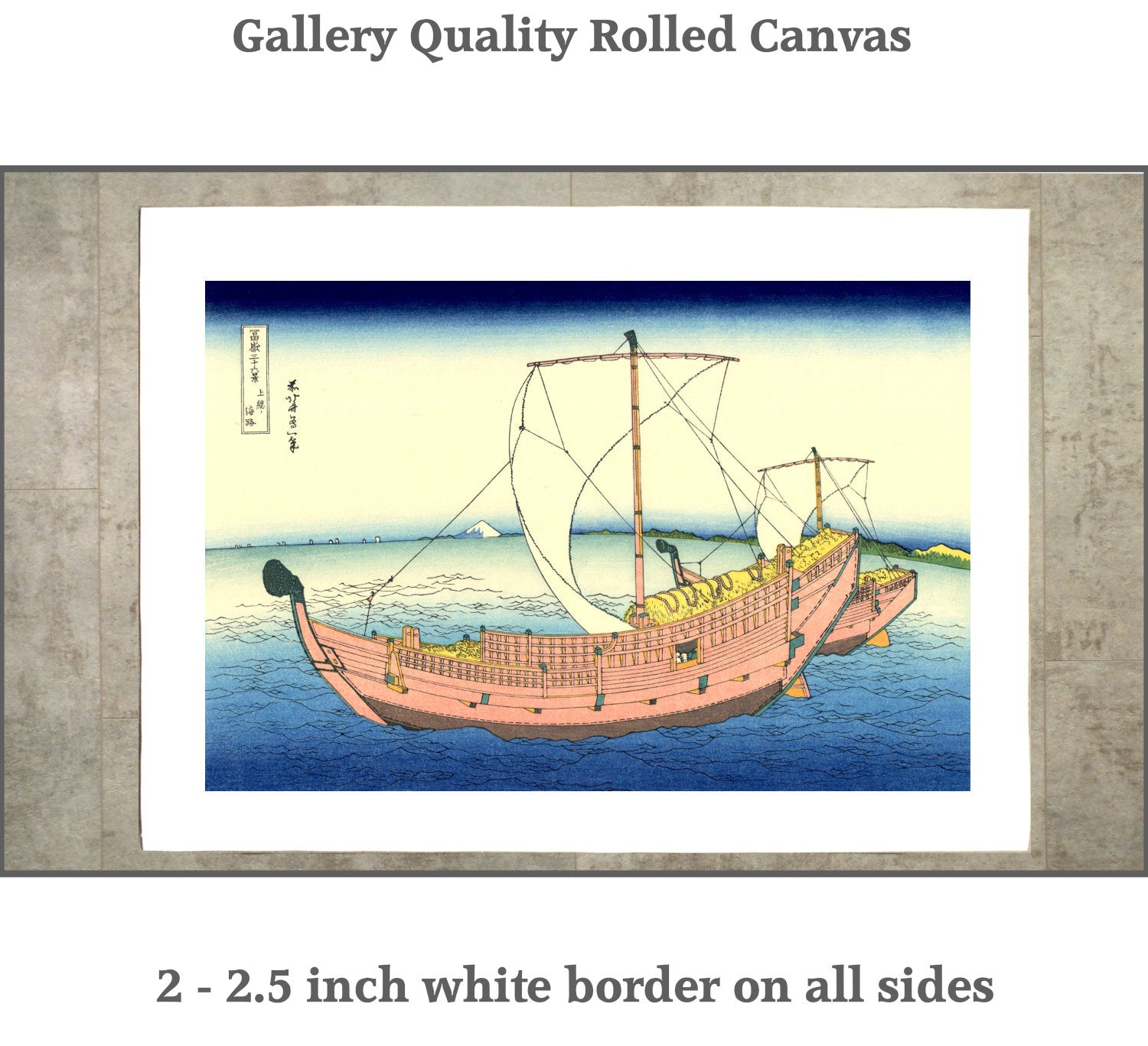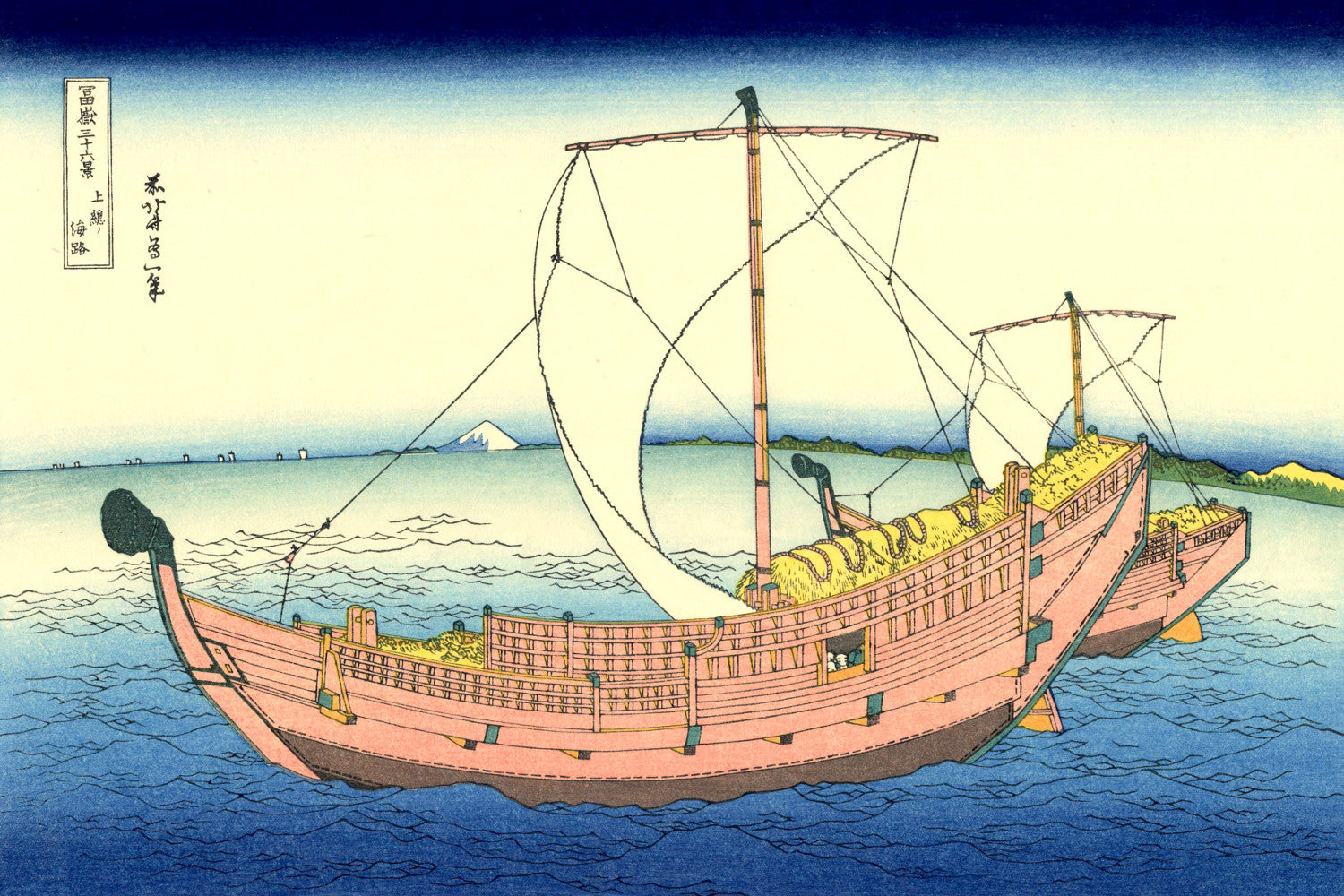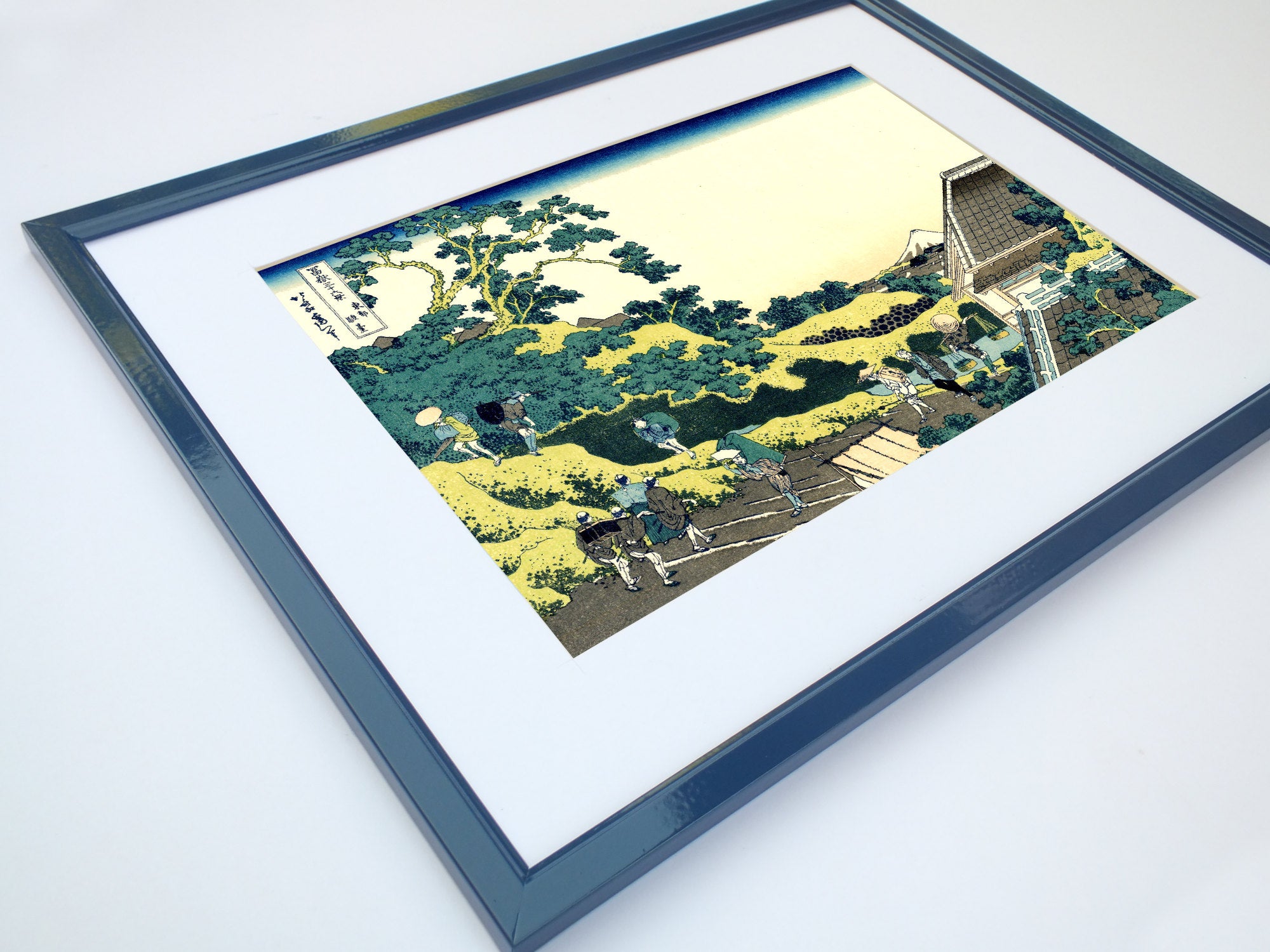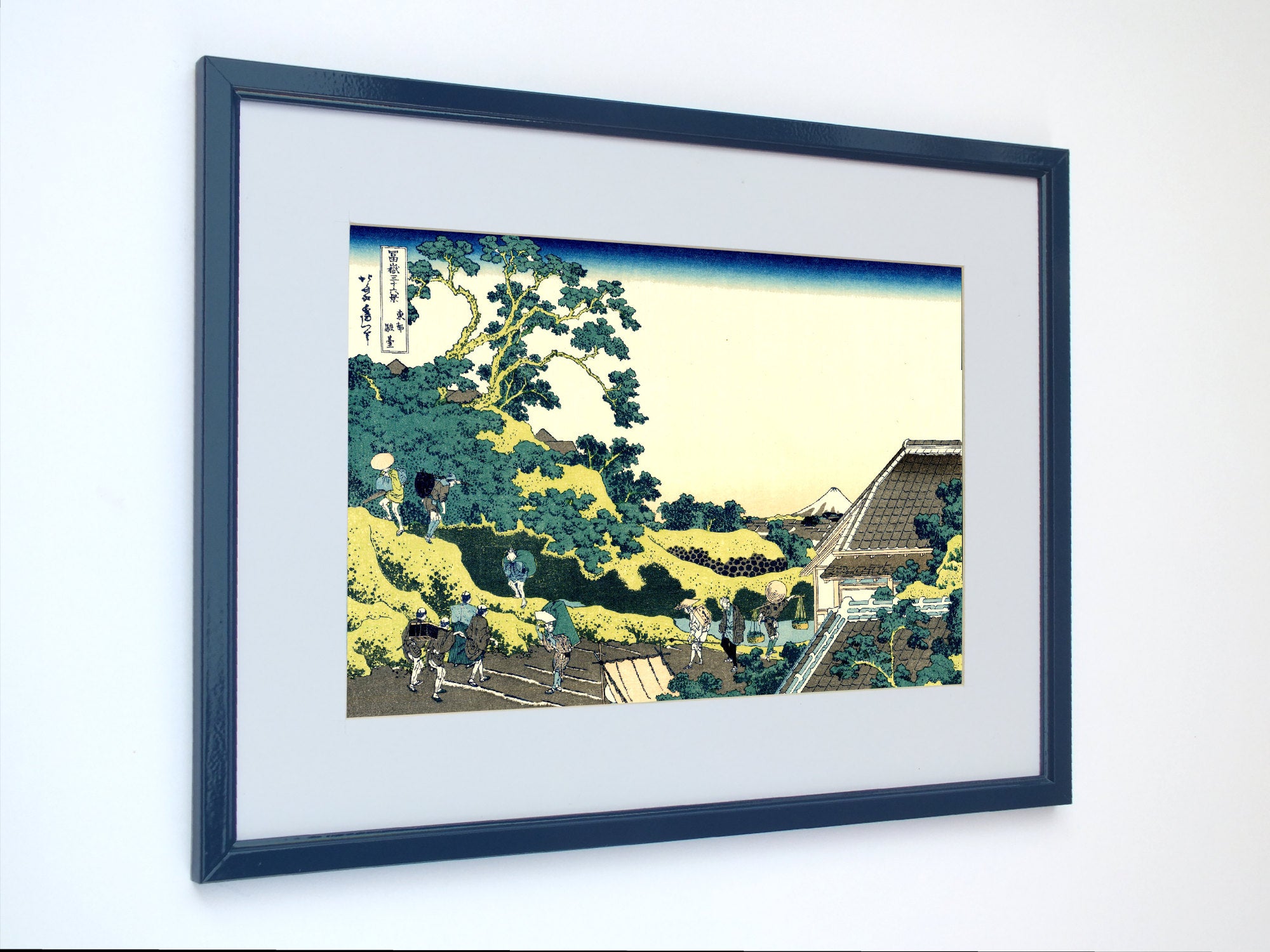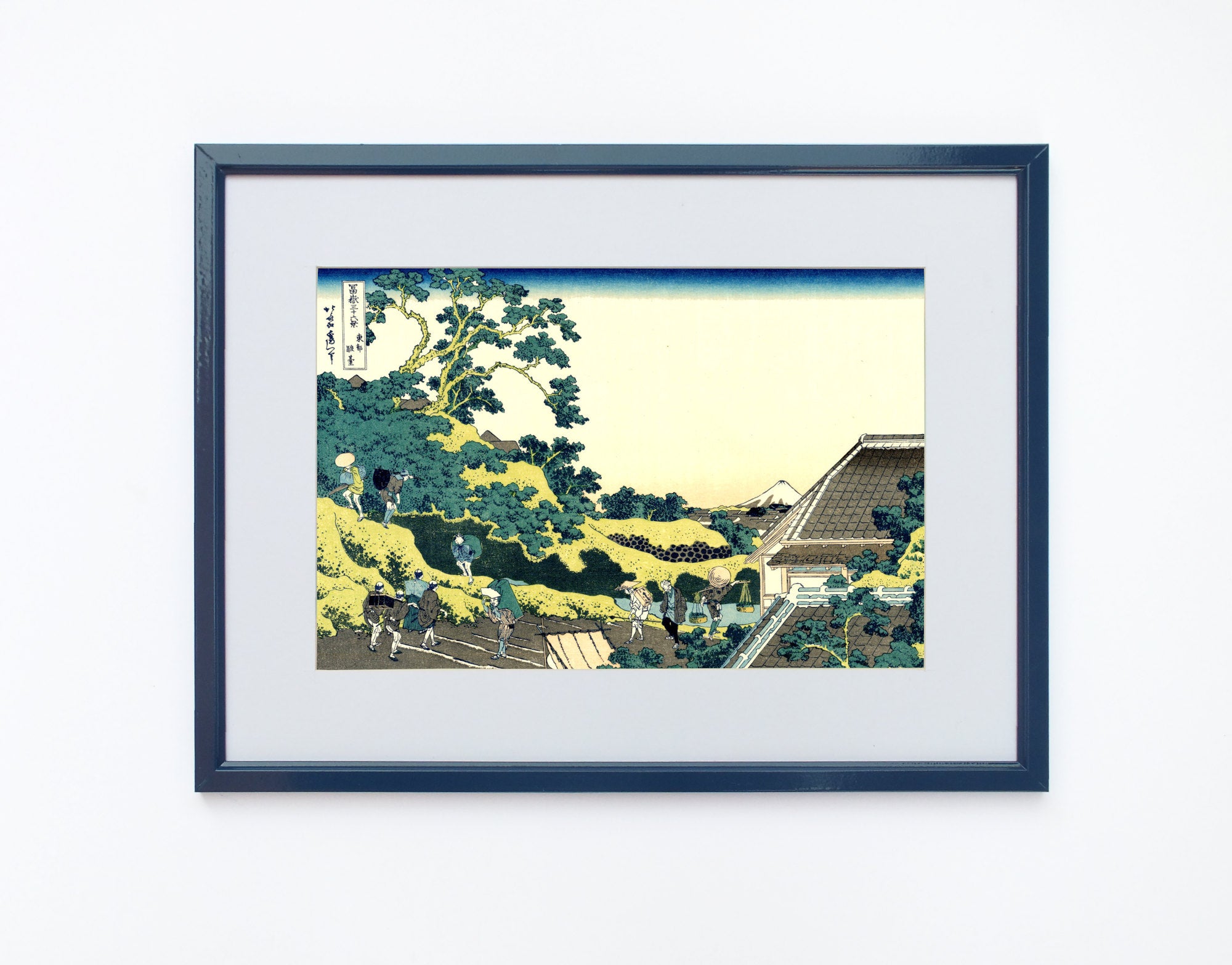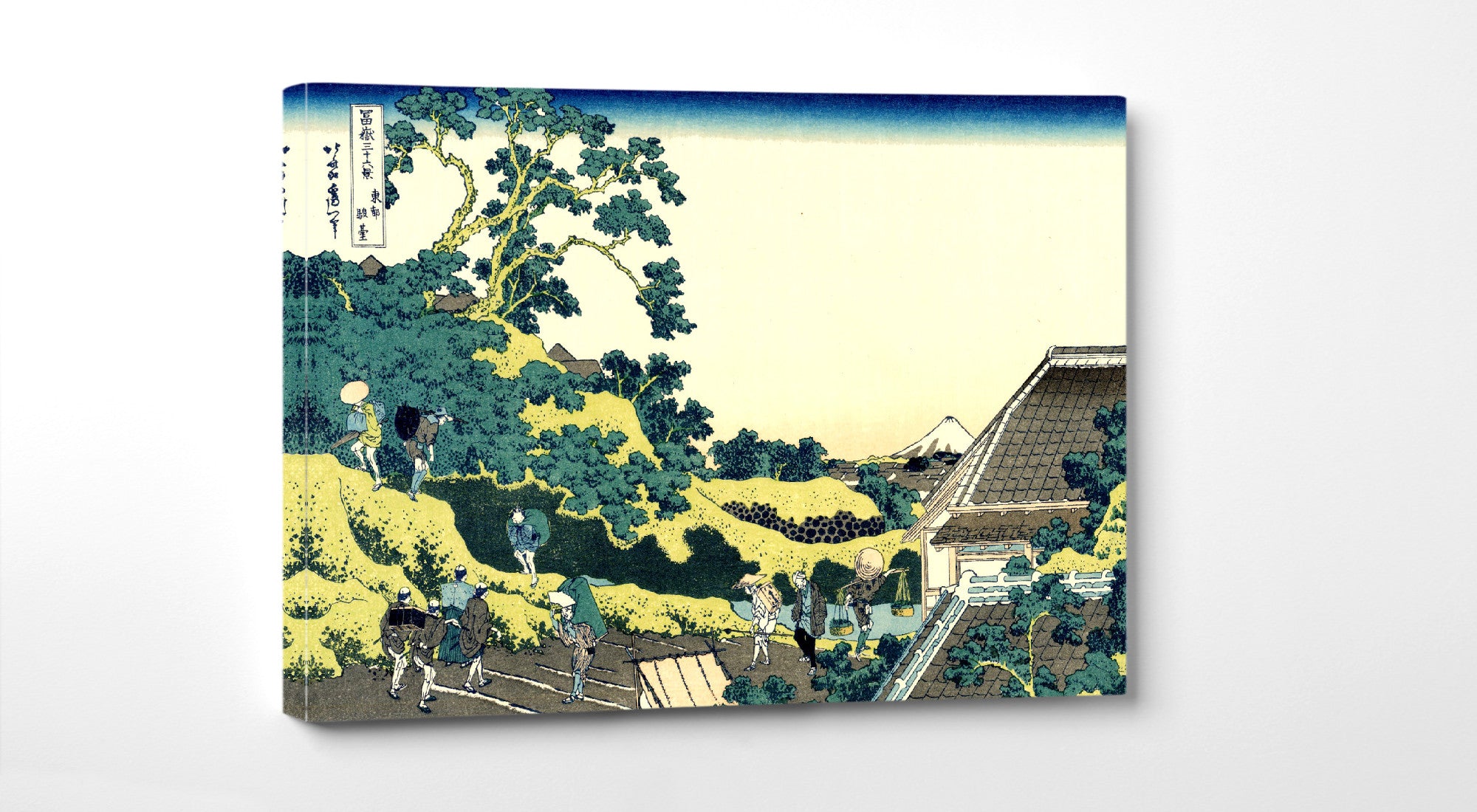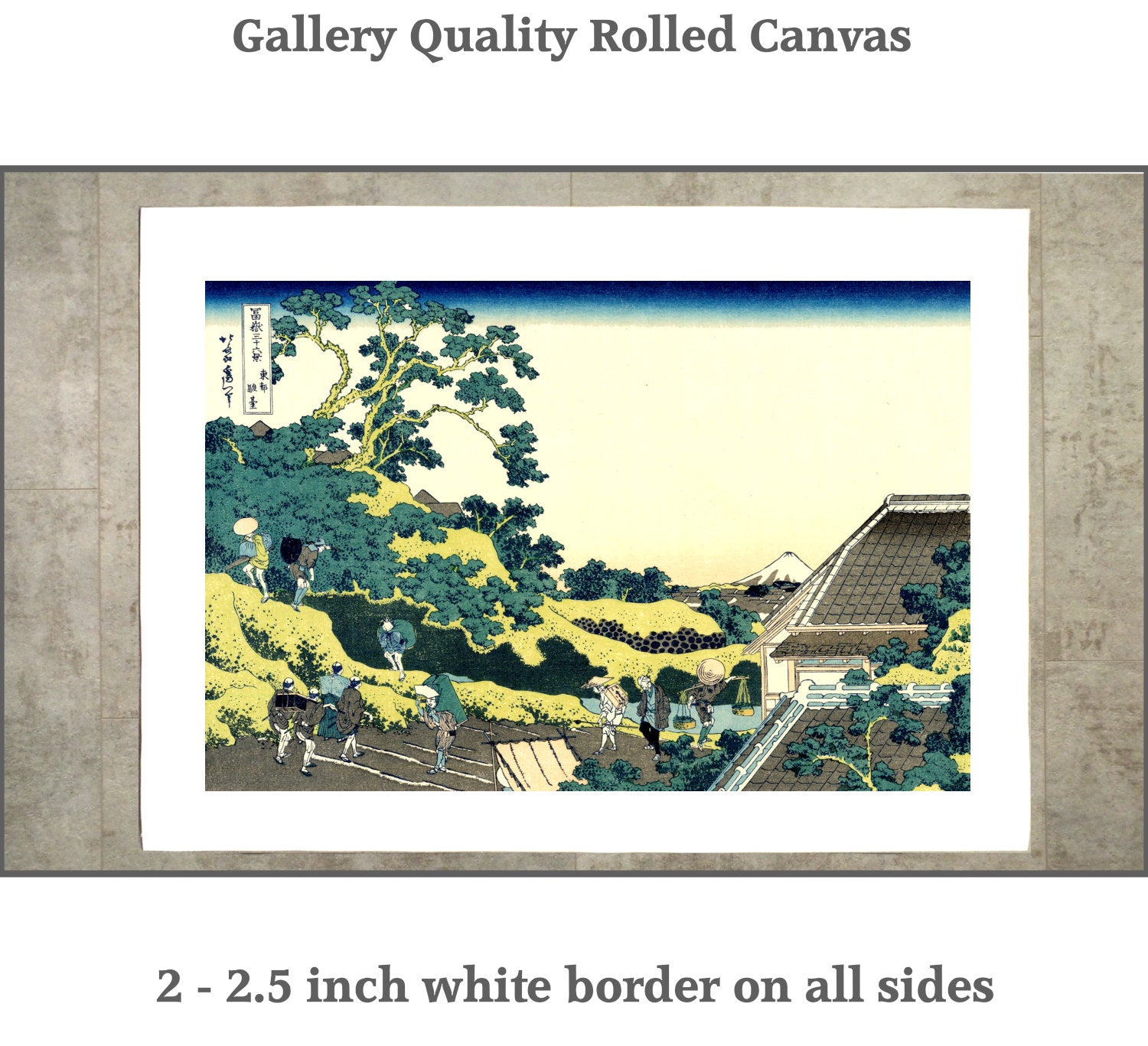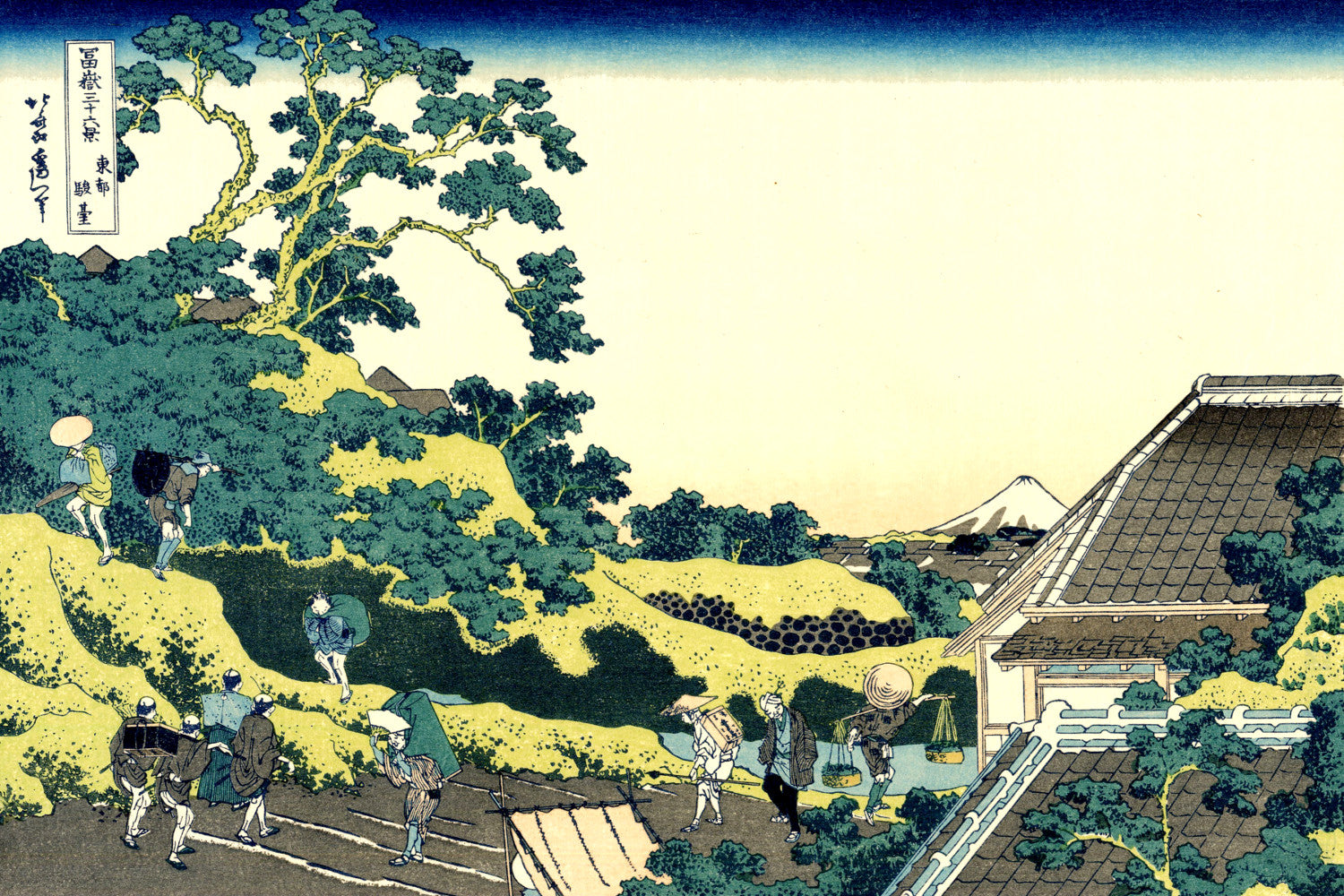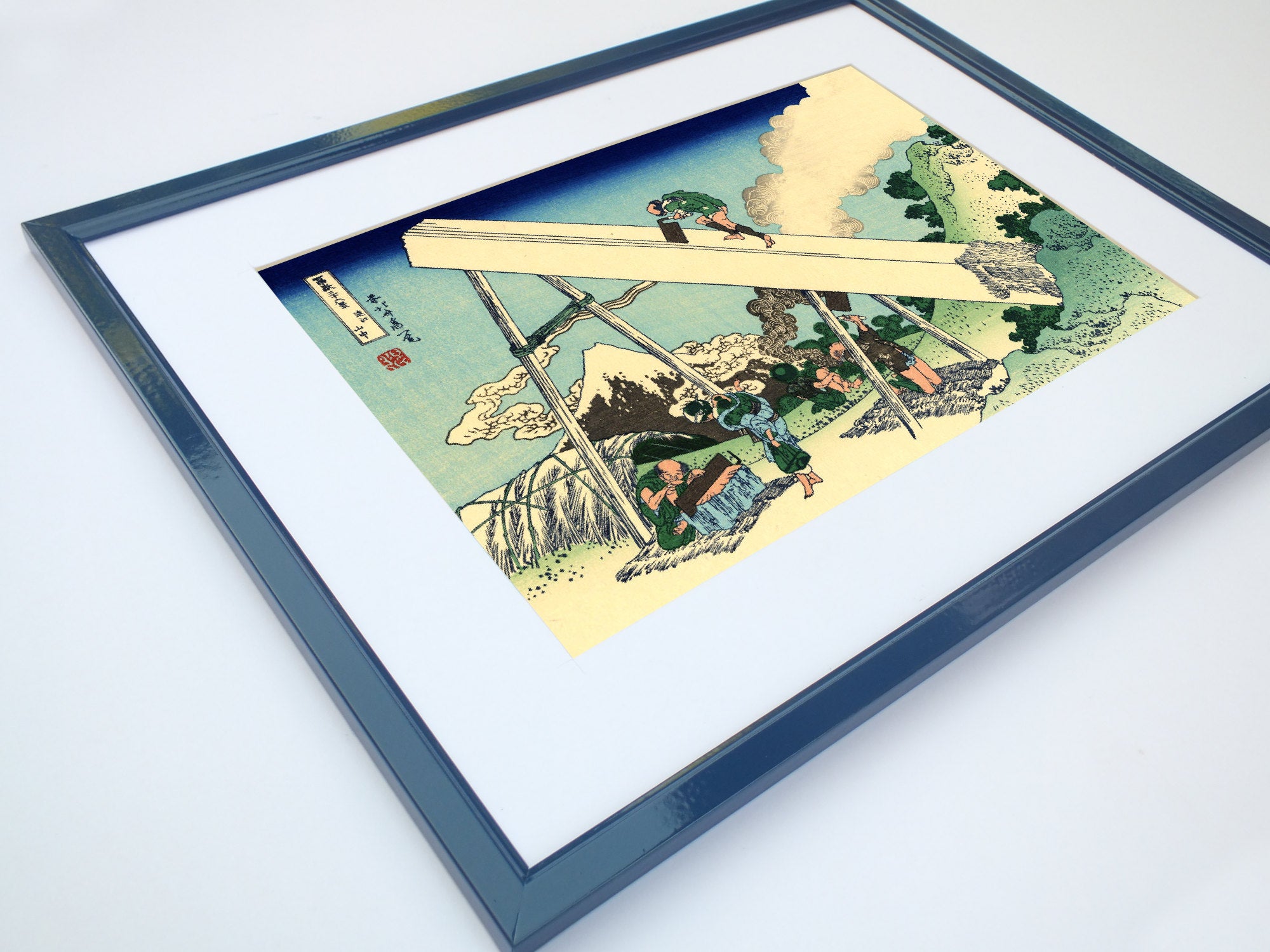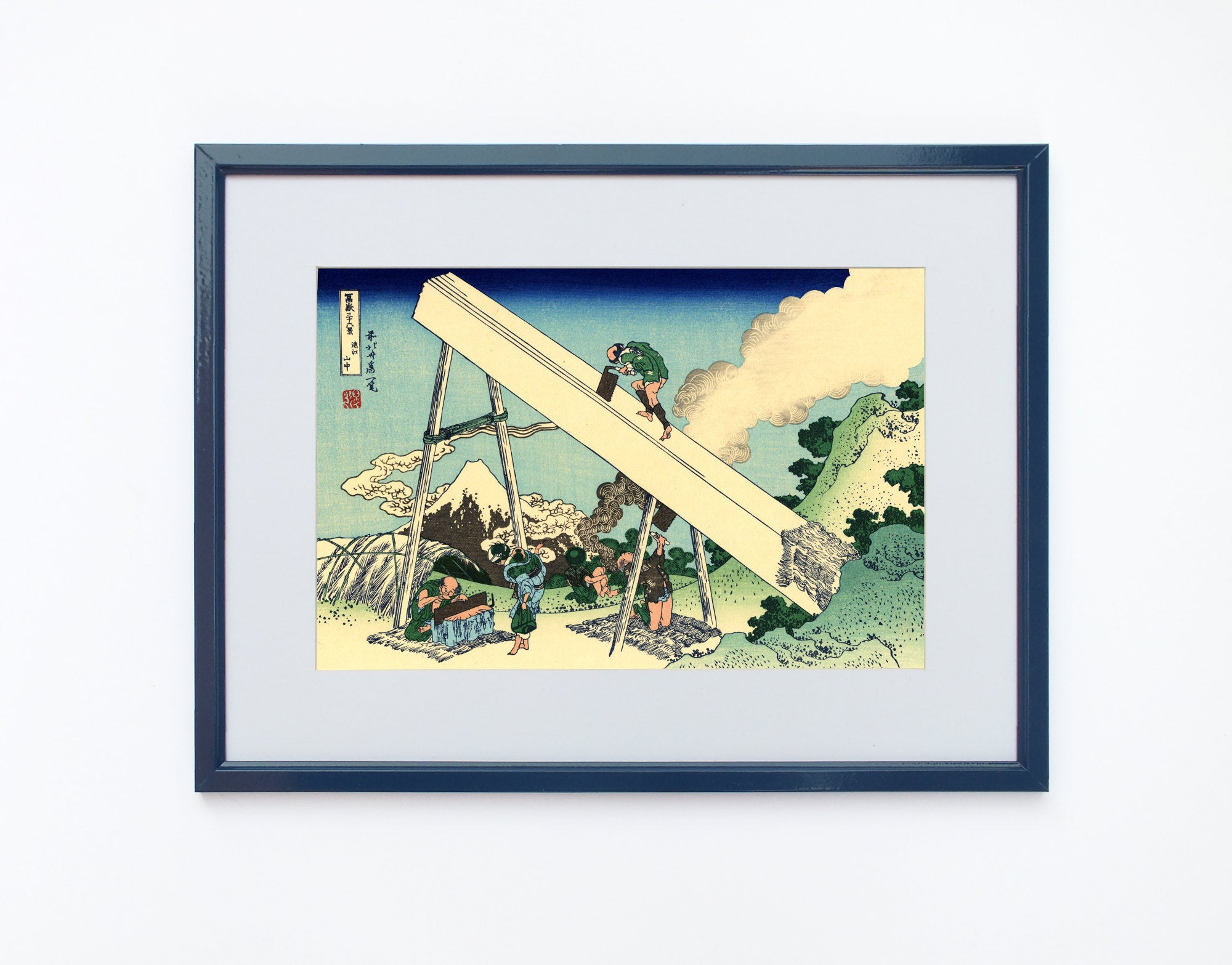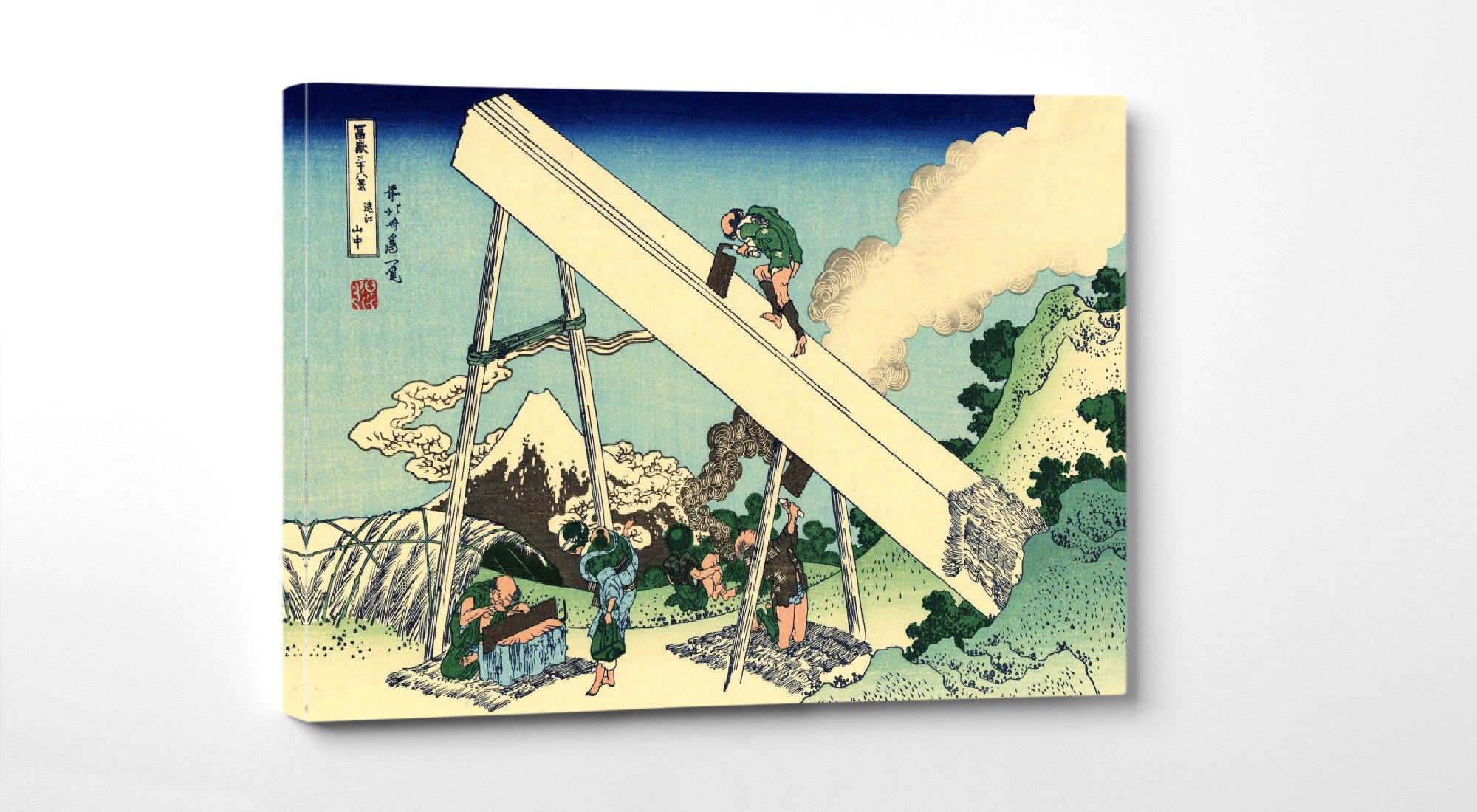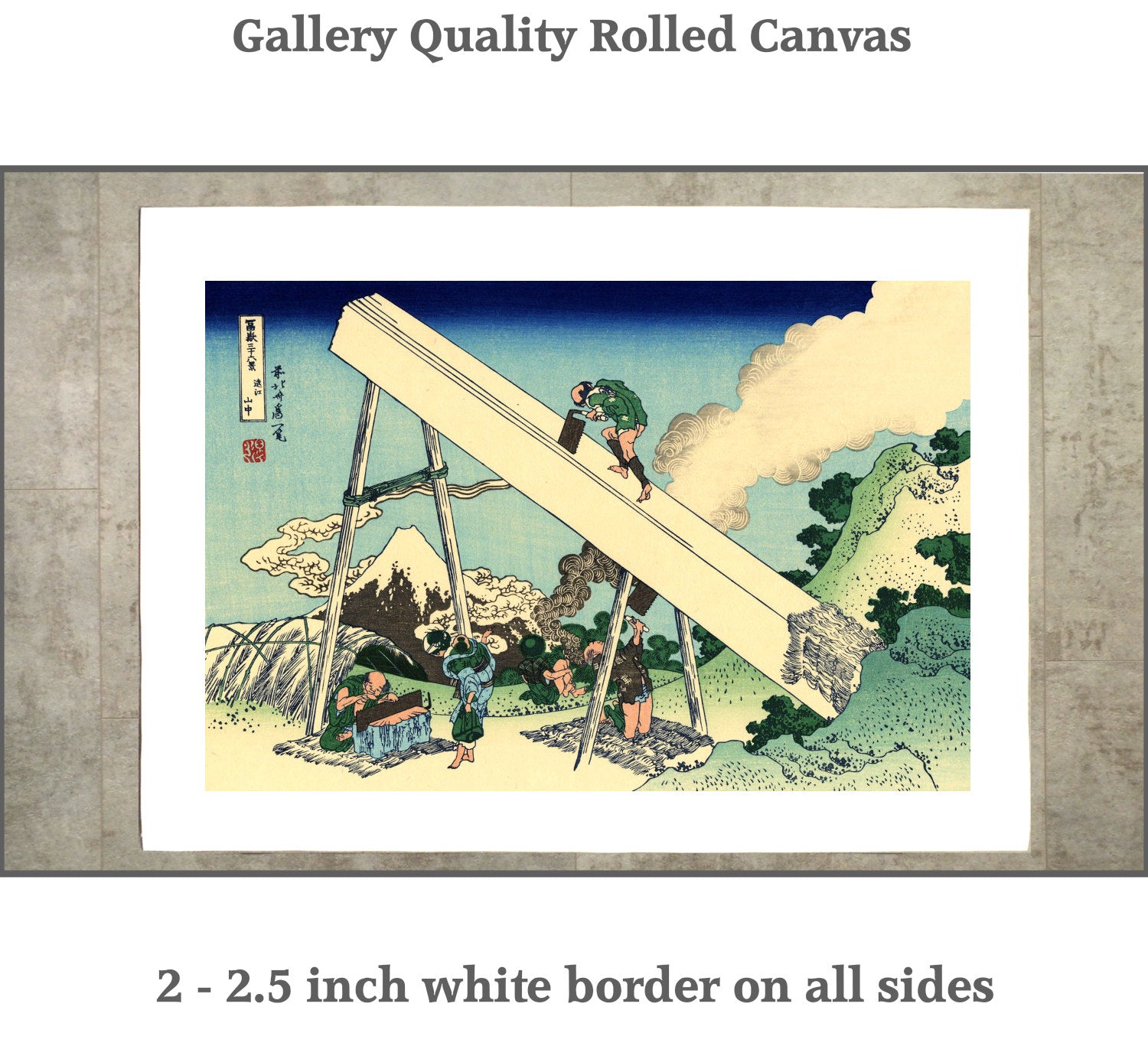History of the 36 Views of Mt. Fuji
Thirty-six views of Mount Fuji is a series by the very talented Katsushika Hokusai. The art is also loved as much as people love the real mountain Fuji. His work is so valuable that it is hard to see the original art.
This series was being made as from 1830 to 1832 and it was really huge at this time Hokusai was in his seventies. Each specific image included drawing on a paper and using the image to guide a carving on wood. The wood is then covered with ink and applied on a paper to recreate the image.He used a lot of colours which made his art stand out seeming so different.He had created 36 series of the views mountain Fuji but because the art became so popular he added ten more.
Mount Fuji is a popular subject for Japanese art due to its cultural and religious significance. This belief can be traced to The Tale of the Bamboo Cutter, where a goddess deposits the elixir of life on the peak. As the historian Henry Smith explains, "Thus from an early time, Mt. Fuji was seen as the source of the secret of immortality, a tradition that was at the heart of Hokusai's own obsession with the mountain." Each image was made through a process whereby Hokusai's drawing on paper was glued to a woodblock to guide the carving. The original design is therefore lost in the process. The block was then covered with ink and applied to paper to create the image (see Woodblock printing in Japan for further details). The complexity of Hokusai's images includes the wide range of colors he used, which required the use of a separate block for each color appearing in the image. The earliest prints in the series were made with largely blue tones (aizuri-e), including the key blocks which provide an image's outlines. Prussian blue pigment had not long been introduced to Japan from Europe and Hokusai used it extensively, ensuring its popularity. Once the publisher, Nishimura, was sure of the series' success, prints were made with multiple colours (nishiki-e). Nishimura had planned to expand the series to more than a hundred prints, but publication stopped at forty-six. The most famous single image from the series is widely known in English as The Great Wave off Kanagawa. It is Hokusai's most celebrated work and is often considered the most recognizable work of Japanese art in the world. Another iconic work from Thirty-six Views is Fine Wind, Clear Morning, also known as Red Fuji, which has been described as "one of the simplest and at the same time one of the most outstanding of all Japanese prints".

No. 5 Sundai, Edo


No.7 Senju, Musashi But

No.8 Inume Pass

No.9 Fuji View Field in Owari Province

No.10 Ejiri in Suruga Province

No.11 A sketch of the Mitsui shop in Suruga in Edo

12. Sunset across the Ryōgoku bridge from the bank of the Sumida River at Onmayagashi

13. Sazai hall – Temple of Five Hundred Rakan

14. Tea house at Koishikawa. The morning after a snowfall

15. Shimomeguro


17. Enoshima in Sagami Province

18. Shore of Tago Bay, Ejiri at Tōkaidō


20. The Kazusa Province sea route


22. Barrier Town on the Sumida River

23. Bay of Noboto

24. The lake of Hakone in Sagami Province

25. Mount Fuji reflects in Lake Kawaguchi, seen from the Misaka Pass in Kai Province


27. Tama River in Musashi Province
![Asakusa Hongan-ji temple in the Eastern capital [Edo] Asakusa Hongan-ji temple in the Eastern capital [Edo]](https://cdn.shopify.com/s/files/1/1016/3209/t/2/assets/asakusa_honganji_temple_in_th_eastern_capital_wm-1664101260019.jpg?v=1664101260)
28. Asakusa Hongan-ji temple in the Eastern capital [Edo]

29. Tsukuda Island in Musashi Province

30. Shichiri beach in Sagami Province


32. Kajikazawa in Kai Province

33. Mishima Pass in Kai Province

34. Mount Fuji from the mountains of Tōtōmi

35. A View of Mount Fuji Across Lake Suwa (Lake Suwa in Shinano Province)

36. Ushibori in Hitachi Province

37. Goten-yama-hill, Shinagawa on the Tōkaidō

38. Honjo Tatekawa, the timberyard at Honjo, Sumida

39. Pleasure District at Senju

40. Nakahara in Sagami Province

41. Ōno Shinden in Suruga Province

42. Climbing on Fuji

43. The Tea plantation of Katakura in Suruga Province

44. The Fuji from Kanaya on the Tōkaidō

45. Dawn at Isawa in Kai Province

The Original 36 Views of Mt. Fuji
- The Great Wave off Kanagawa
The most eye-catching feature of the painting is the extended wave as it is about to break with the crash of its claw-like crest. The beautiful dark blue pigment used by Hokusai, called Prussian Blue, was a new material at the time, imported from England through China. The wave is about to strike the boats as if it were an enormous monster, one which seems to symbolise the irresistible force of nature and the weakness of human beings. - Red Fuji
Mount Fuji in early Autumn. The print was made by Housaki in early autumn of 1830. This particular style of Japanese print is known as Ukiyo-e ("pictures of the floating world")It was made at a time when he was at the height of his fame and enjoying the patronage of Nishimura Yohachi one of the leading publishers of wood block prints at the time. - Thunderstorm Beneath the Summit
The composition is very similar to that of Fine Wind, Clear Morning (or Red Fuji) from the same series, but the atmosphere is markedly different. Here, instead of a hazy and serene view, Mount Fuji is rendered ominously in strong heavy tones. The contours of the mountainside are more textured and defined. The snowy cap rises sharply over a darkly menacing base which has been split by a bolt of lighting rendered with powerful, almost abstract, zigzag lines. As with Fine Wind, Clear Morning, a thin line of Prussian blue is used in the upper portion of the sky, but here the clouds have a smoke-like quality and appear to cling to the mountain. The three peaks at the summit suggest that this view is of the back of Fuji (i.e. seen from the West), another contrast with the Red Fuji print. - Under Mannen Bridge at Fukagawa
The print is completed with various fishing and boat scenes underneath, which invoke the agrarian and mercantile setting of early nineteenth-century Fukagawa, a district of Tokyo. Beneath the bridge in the distance, Mount Fuji, the iconic symbol of Japan, can be seen with its snow-covered peak. - Sundai, Edo
Known as 東都駿台 or Tōto sundai in Japanese, this particular print is number five in the collection. Between 1830 and 1832 in the eponymous Edo era of Japan, Katsushika Hokusai was in his seventies and at the height of his career during the painting of the piece. - Cushion Pine at Aoyama
Pine trees have outspreading branches that make it appear as a gigantic green cushion. This led to the name cushion pine. Some of its branches were very long and could not hold their own weight as such they were supported by bamboo stilts. Hokusai executed each branch and pine needles in a minute detail. He also placed picnickers in front of the pine. When he combined the Cushion-pine and Fuji, he appealed to the interests of the people. He made sure that he carried the intent throughout his work. He combined Mount Fuji with scenes of known places people had heard or always wanted to see. - Senju, Musashi But
Hokusai portrays a farmer with a horse and the angler hand seemingly over the shade looking up to The Mount Fuji. They may be talking about the panoramic view of the mountain as the horse walks leisurely. The geometrical sluice gate is drawn in front to highlight the beauty of the mountain. - Inume Pass
The unique relationship between humans and the environment is artistically portrayed as small persons walk the hill as the massive Mount Fuji is seemingly towering over them. The clouds printed behind the travellers shows that there is a distance between people and the huge Mount Fuji. The impressive woodblock artwork produces an atmosphere where time and breeze seem to flow in a slow motion. - Fuji View Field in Owari Province
The print depicts a man engaged in an activity, and the background has been produced in such a manner that it looks like a theatrical stage. He seems to have experimented a lot with the Eastern tradition and Western techniques in this painting. - Ejiri in Suruga Province
Figures and trees on path through marsh, battling wind in foreground: Stream of paper tissues, trevalling-hat and leaves blown off in sky by wind; Mt Fuji in background. - A sketch of the Mitsui shop in Suruga in Edo
The most interesting aspect of the print is its connection to money. Overtly, the print depicts a textile store that is well-visited by several customers and people of different classes. However, an examination of the location and the Mitsui name yields interesting connections to money beyond what can seen in the print. Echigoya, along with other Mitsui owned stores, used a strategy that was not employed in Japan previously. Traditionally, clothiers visited customers, took measurements and orders. Then the clothing was produced later and delivered back to the customer over the course of several days. At Echigoya, kimonos and other clothing were made first and sold at a fixed price. The clothing could be adjusted on site with some customers leaving with their order “after a short wait” - Sunset across the Ryōgoku bridge from the bank of the Sumida River at Onmayagashi
This print contrasts vivid blue waves against a pale blue river with a deep blue Mount Fiji providing a focal point against the pale sky. A boat of passengers looks out towards the bridge. It is thought that the introduction of Prussian blue synthetic dye was a strong influence on this collection of Mount Fiji views. - Sazai hall – Temple of Five Hundred Rakan
An idyllic scene, with five figures - men, women and children - standing upon a veranda outside a temple. Before them lies a lake or marsh, spreading out to meet the horizon in the distance. The image is composed so that most of the nine figures are seen from the rear, as though the viewer is standing behind them, also observing the view. Mt Fuji, a recurring theme in Hokusai's work, can be seen in the distance; also identifiable to those familiar with Japanese geography are the lumber yards of Fukagawa. Hokusai's skill at portraying human subjects is as adept at his mastery of the natural world: the nine figures each have their own character, from the one on the left eagerly pointing in the direction of Mt Fuji, to the one towards the right mobbing sweat from his forehead. - Tea house at Koishikawa. The morning after a snowfall
The picture shows a group of men and women on the terrace of a tea house, looking up at Mount Fuji. The tea house might appear to be an innocent location but, at the time Hokusai was working, a tea house was often a place for a couple to meet privately. Nevertheless, as everyone gazes at the transformed landscape, there is a suggestion of awe and wonder at the change brought about by the snowfall. - Shimomeguro
A sloping orange-red mountain with a single peak rises from the lower-left A Mild Breeze on a Fine Day (Gaifu kaisei), from the series 36 Views of Mount Fuji. - Watermill at Onden
Now located across two of Tokyo’s busiest districts, Onden once resided behind the Zenko-ji Temple in the Aoyama district. It was then a small farming village littered with many waterwheels, powered by the great Shibuya river. It is one of these watermills that is depicted by the distinguished Japanese artist, Katsushika Hokusai, in his ‘Watermill at Onden’. The image is one of a series of 36, which Hokusai started in 1830 at the age of 70 - Enoshima in Sagami Province
In the Enoshima in Sagami Province print Hokusai depicted the five-story pagoda at Ryukoji Temple that is located in a distant view of the forest of young leaves. The worshipers who visit the Temple are walking along the sandbar during the low tide of the sea. There are various inns and souvenir shops portrayed along the shore. The Enoshima in Sagami Province expresses the sparkle foaming of the waves striking the beaches and rocks in an Ukiyo-e style woodblock. - Shore of Tago Bay, Ejiri at Tōkaidō
In Tago Bay near Ejiri on the Tōkaidō, Hokusai employs a romantic framing of Mount Fuji, snow-capped and receding from both cloud and land, towering over Tago bay. The junks at sail in the turbulent waters provide a juxtaposition to Fuji's similarly powerful, but static, presence. The oarsman of the junk are depicted as strained at work, signifying the strength of Suruga bay's waters. Meanwhile, the shoreline is dotted with activity from fishermen and workers carrying baskets of salt for kilns along the beach. This act of balancing between foreground and background was a perspective Hokusai often employed as a means of counterpoise. The method of production of this print involved Hokusai hand-drawing the scene and then transferring it, with the help of woodcutters, onto a wooden block for printing. The block is covered in ink and then impressed upon a sheet of fine art paper. To achieve the rich variety of colour present in Tago Bay near Ejiri on the Tōkaidō, numerous blocks of coloured ink are created and combined in use. - Yoshida at Tōkaidō
In the print Hukosei depicts a scenic location on a teahouse called Fujimi Chaya, which translates to a teahouse with a view of Mount Fuji. The name is also written on the horizontal panel at the center of the print. There are two women who seem to be enjoying the Vista of Fuji. It has a triangular arrangement of figures in the foreground who represent the shape of The Mount Fuji. - The Kazusa Province sea route
appears much calmer than his arguably most famous work The Great Wave off Kanagawa. The Kazusa Province Sea Route painting depicts a very large wooden boat sailing through a magnificent large and calm ocean. - Nihonbashi bridge in Edo
The composition is interesting in that the image appears to be cropped and you wouldn’t be alone in believing the image had been altered on your screen but it hasn’t this is how it was painting. It is believed the thought behind this is to give the impression of you being part of the scene, scrambling among the bustling crowds as they attempt to cross the bridge. The chaotic scene makes the bridge itself barely viable, you can only make it out if you look very closely at the bottom of the piece and note the finial attachment on the gate post. - Barrier Town on the Sumida River
utilises much more muted and organic tones. Browns, reds and light blues tend to dominate the piece and it is interesting that much of the background remains devoid of any tones. It is also thought that this approach may have been a result of his strong religious beliefs; particularly later in life. As witnessed in many of his other works, a view of Mount Fuji is clearly visible in the background. Not only does this symbolise Japan as a whole, but it is representative of his strong Buddhist beliefs. The fact that the three characters displayed within the painting seem to be travelling toward the base of the mountain could be interpreted as his own desire to become closer to his own sense of spirituality. While not as famous as his other works, Barrier Town on the Sumida River is certainly representative of the sheer talent of this prolific painter. - Bay of Noboto
Men and women gather shellfish under torii, entrance gates to shrines, which mark the transition from secular to religious spaces. Hokusai has cleverly used the torii to frame Fuji, suggesting, in turn, the mountain's sacred, iconic nature. - The lake of Hakone in Sagami Province
Sagami Province was the name in the ancient times and it located today’s Kanagawa Prefecture. The lake of Hakone, Ashinoko Lake has no ripple on the surface. The thick forest and the trailing haze are around the lake. Mt. Komagatake is on the opposite side of Mt. Fuji and has a calm figure. It is a quiet and solemnity ukiyo-e printing without a person or animal. - Mount Fuji reflects in Lake Kawaguchi, seen from the Misaka Pass in Kai Province
depicts one of the more popular themes of nineteenth-century Ukiyo-e art, and one of the most enduring symbols of Japanese culture and natural heritage, Mount Fuji. In the print, Fuji is creatively mirrored by the shore of the lake below, in a tranquil scene which plays on the movement of light, cloud and water, offering clarity in the lake's reflection. This mirror-reflection provides an unusual play on fantasy and reality, with the bare-topped, cracked and jagged edges of the real Fuji standing in contrast with the more romantic, snow-capped depiction in the reflection. - Hodogaya on the Tōkaidō
In this work Hokusai presents the viewer with a depiction of travellers on the Tokaido Highway as they pass through the route's Hodogaya station. All but one of the travellers are heading west, looking weary from their climb of the Gonta-zaka hill. To the far left, the palanquin bearers take a rest and seem to be making themselves more comfortable after their exertions. To the far right of the image the lone walker heading east is typically dressed in a Buddhist monk's travelling and climbing apparel - looking up at what appears to be a rock-carved traditional religious image. The centre of the image is first of all dominated by Mount Fuji in the background, but, it is in the foreground that Hokusai uses his often applied imagery to challenge the viewer. The horse rider, white-hatted and cloaked in pale blue, is sat astride his steed with dropped head and tail. The parallels in shape and construct with the sacred mountain seem clear to many who have studied and commented on the work. All of the travellers are concerned with their travels and travails except one. Looking directly at Mount Fuji, the man leading the rider's horse seems to be gazing at the scene presented by the parting of the pine trees - perhaps pointing out the view with his stick to the rider or perhaps just in awe and wonder for himself. A typical woodblock print in natural tones, Hokusai has a couple of other surprises for those looking on too. The blues and greens of the travellers' clothing match perfectly with those in the leaves and sky to bring nature and life together. The clusters of pine needles meanwhile seem to be a reflection of the shape of the mountain to which the artist became so besotted with - perhaps in a plea for those studying the piece to do the same. - Tama River in Musashi Province
Images of the print reveal the beauty of Japanese landscapes made of rivers, snowcapped mountains, and scenic views as they were back then. Its image has been a source of poetic descriptions of the changing environment influenced by different factors. The admirable beauty of nature in its undefiled state brings out the abundance of natural resources in a classic piece of art. Later prints revolving around the same feature showed the people’s way of life including the development of Musashi Province and human developments. - Asakusa Hongan-ji temple in the Eastern capital [Edo]
Asakusa was the most populous district in Edo in Hokusai’s time. Its streets were crowded with stores where busy merchants and craftsmen lived and vigorously plied their trades. One of the district’s landmarks was the enormous Asakusa Honganji Temple, built in 1657, which belonged to a branch of Kyoto Higashi Honganji, the headquarters of Buddhism’s Eastern School of the Pure Land (Jödo) sect. Begun in the Late Heian period (late eleventh century), the Pure Land sect quickly gained a large following. It had one simple, compassionate teaching – that enlightenment (salvation) could be attained not through the study of sutras or observation of complicated rituals, as required in other sects, but simply by sincerely calling Amida’s name. In the Edo period, this teaching spread, and Pure Land became the largest Buddhist sect, with large temples all over Japan. In this composition, Hokusai brought the temple building so close to the foreground that only the triangle of the roof’s pediment is visible. Looking down, one can observe the sea of roofs of smaller houses, over which decorative clouds float. Mount Fuji, above them, repeats the roof’s shape. Hokusai’s dramatic compositional scheme enlarges the temple roof to an enormous proportion, dwarfing houses and the mountain. On the temple’s steep roof, workmen are busy making repairs. Their exaggerated, precise postures are drawn from studies Hokusai made of form and movement, which culminated in the publication of his sketchbooks, the Manga. The towering structure at the left is a scaffold rising over a well excavation. A kite indicates that the season is winter, most likely New Year’s day. The windy days of winter are best for flying kites, the symbol of the new year. Pale pink in the cloud and the kite enlivens a monochromatic blue print. The key-block was printed in blue. - Tsukuda Island in Musashi Province
depicts boats floating around the eponymous island. Fishermen can be seen working on the boats, and in the distance we see the green mountains with their white snow capped peaks. The rich, simple colours are very pleasant to behold and yet when the viewer looks more closely at the painting they see that it is a very intricate work of art. - Shichiri beach in Sagami Province
The colours he used were very traditional Japanese inspired. His art displayed how human beings connect with nature in their day to day life. Hokusai mixed the traditional methods and western. His art was reprinted by famous and well-established artists such as Edgar Degas and Claude Monet. He drew an image on paper and uses the art as a guide to carving wood and later painting it. This made this work stand out among the other artists. - Umezawa in Sagam Province
Umezawa was the place at the lower part of Mount Fuji. Hokusai added five birds to the landscape so as to bring out the whole image. The mist hangs over the blue Mount Fuji red-crowned cranes. The mist and the pink colours represent the moments just before day break. However, according to the Japanese tradition the Mount Fuji and the crane are meant to represent good fortune. This is an amazing Ukiyo-e style woodblock print. - Kajikazawa in Kai Province
The painting depicts a man standing on the edge of a rocky beach gouged by rough waves, pulling a net, and a boy watching over a basket of fish at his side. At first glance, it seems that the raging waves of the sea are striking on the shore. But Kai Province, the current place of Yamanashi Prefecture, is inland. Fuji River in the picture, the two rivers (Kamanashi River and Fuefuki River) join together shortly before this point, and a large quantity of water current stream. The fishermen standing on the rock is absolutely still, whereas water beats against rocks and bubbles express energy. It’s really contrastive opposite ukiyo-e print. Both the ridgeline of Mt. Fuji, and the rock and fishing line, create triangles and become a geometric pattern. - Mishima Pass in Kai Province
Expressing their exuberance and triumph in the print Mishima Pass in Kai Province, Hokusai, depicted joyous three travellers who had reached the ancient site of the cryptomeria tree and embrace its enormous trunk. Hokusai reveals his empathy for pilgrims by painting small persons embracing the massive trunk of the tree. Mishima Pass is believed to be around the present Kagosaka Pass. From the print other travellers are resting after the long tiring journey while others are embracing the enormous tree trunk. The rugged bark of the trees expresses the fact that it was an old monumental tree. Mount Fuji is seen on the solid clouds on the heads and lower sides. The Ukiyo-e style on this woodblock has employed the gradation of three colours in an artistic manner. - Mount Fuji from the mountains of Tōtōmi
Mount Fuji from the Mountains of Totomi was produced in c.1831 with an intention of trying to depict Mount Fuji from the Totomi Mountains just as the name suggests. The medium used for the print was woodblock; color on paper during the historical Edo Period. - A View of Mount Fuji Across Lake Suwa (Lake Suwa in Shinano Province)
The image depicts Lake Suwa from above with Mount Fuji barely visible in the distance. Centered in the foreground atop a hill is a hut, possibly a shrine, overshadowed by two large trees. To the left a boat heads towards a village nestled in dense vegetation, possibly Shiwo Suwa. Presently well inland, Takashima Castle is depicted on a promontory just below Fuji. - Ushibori in Hitachi Province
This particular piece portrays the traditional lifestyle of the people who lived around Mt Fuji at the time of its creation. This particular painting is a great example of how much Hokusai's work evolved as he grew more experienced at his art form. Many of Hokusai's early works that concerned humans tended to portray the upper echelons of society. These paintings mainly dealt with Actors and Courtesans. This was in line with the traditional subjects of these type of paintings. However, as time went on Hokusai moved from painting pictures of Artisans and Actors to painting works concerning the everyday life of the common folk. This painting is a perfect example of this. The painting shows the impoverished fishermen who live around Mt Fuji fishing in traditional Japanese boats.
The Extended 36 Views of Mt. Fuji
- Goten-yama-hill, Shinagawa on the Tōkaidō
Goten-yama-hill at Shinagawa was known for its beautiful cherry blossoms during the famous Edo period. Hokusai did just one print about the cherry blossom in Thirty-Six Views of Mount Fuji. But an equally talented artist who printed several pieces of work about it is Utagawa Hiroshige. The people who take part in the viewing of the pale pink of the blossoms are the draw the attention of the fact that the Goten-yama-hill at Shinagawa was exceptionally beautiful. They also seem to be enjoying the beautiful sightseeing of the Mount Fuji. But the three-men on the left-side of the Goten-yama-hill at Shinagawa on the Tokaido print seem to be enjoying their drinking and eating. - Honjo Tatekawa, the timberyard at Honjo, Sumida
One of his most intricate works perhaps, is Katsushika Hokusai's Honjo Tatekawa, the timberyard at Honjo Sumida. This Japanese woodblock print depicts a work of landscape art by Hokusai, part of his Thirty Six Views of Mount Fuji series of woodblock prints. It portrays both industry and activity rendered in the traditional Ukiyo-e style, using transparent, water-based ink. It's very much a linear work that makes use of juxtaposing angles in every aspect to create areas of visual interest. Our eyes are immediately drawn to the long, vertical lines of timber to the the right, then over to the curiously stooped postures of the men working in the yard. Even those forms of flesh and bone are strangely angular. Upon further examination, we find the rooftops of the houses to consist of an assortment of angles, the only softening feature being the curved treetops or bushes amidst houses and timber. The man on the upper left hand side throws what appears to be a timber log down to his waiting co-worker far below, while a third man is bent over his saw, to the right of the picture, sawing his timber in a perfectly straight line. The print captures an incredible amount of work achieved, energy spent; yet we only see three men on the scene. Its appeal stems from its illustration of activity and the suggestion of a movement toward progressiveness. - Pleasure District at Senju
Pleasure District at Senju is a depiction of the red-light area, more commonly known as the pleasure district in Japan. This district generally housed women who were prostitutes, but men could also frequent houses where women served as entertainers and servers, giving a boost to their egos. The picture depicts a scenery on the Senju Road. The daimyo is leading a procession, with a number of his samurais following, armed with their guns wrapped in reddish-brown cloth. All the samurais are dressed similarly in green tunics and blue robes. Each one carries two knives, as required by the samurai code of conduct. At the front of the procession, the daimyo is being carried on a litter by two attendants, dressed in grey. Two women are sitting in the middle of the farm, watching the procession. - Nakahara in Sagami Province
In this evocative scene the viewer is presented with a busy river crossing where travellers along the route and local Sagami people converge. In the far left corner is a fisherman hunting in the shallows as two pilgrims pass to his right onto the bridge - the roadside carving of the traditional god Fudo marking the route to Oyama behind them. Ahead of the pair is a woman with a baby strapped to her back in contemporary fashion, while also being weighed down with tools and other items of labour. In the middle ground, along the Tokaido Highway, the bustle of the day develops further with a local farmer hoping to sell seeds to the pilgrims heading across the bridge. Ahead of him, looking longingly at the farmer's wares, is another pilgrim hoping to beg a meal and drink, perhaps. He is turned away from another local seemingly laden with supplies. It is in the background where the sacred mountain of Fuji sits – typically from Hokusai's artworks located front and centre though seemingly primary not the subject matter. The shape of Fuji is echoed in the fore-right of the image through the roof of a shack to give further resonance and balance to the piece. Printed in one of Hokusai's preferred methods of colour woodblock on paper the limited palette is easy on the eyes inviting closer study. - Ōno Shinden in Suruga Province
Ono Shinden in the Suruga Province is a woodblock painting showing the rice paddy fields of Ono in the Suruga Province. In the foreground of the picture are horses carrying huge loads of rice that has just been harvested. A number of farmers / peasants, all dressed similarly in blue like a uniform, are loading the rice on the horses' backs, managing the horses, or carrying smaller loads on their own backs. Behind them, the rice paddies extend far into the horizon. Birds are flying over the paddies, showing the season. The picture presents a view of the daily life of farmers on a good day during the harvest. Far in the distance, Mount Fuji dominates the skyline. It provides an apt background for the paddy fields. - Climbing on Fuji
The pilgrims climbing the mountain path with the canes, sitting down as exhausted, and resting in the cave are depicted. - The Tea plantation of Katakura in Suruga Province
The Tea Plantation of Katakura in Suruga Province is a brilliant woodblock painting depicting the entire workings of the tea plantation. The picture is less about a landscape depiction of the tea plantation itself and more about the daily life in it. - The Fuji from Kanaya on the Tōkaidō
In the painting Hukosai depicted travelers crossing the Ōi River at Kanaya on the Tōkaidō highway. He arranges individuals with palanquins in a unique rhythmic style in the swift waves. Hukosai utilizes the monochromatic Mount Fuji to make the colours play in a turbulent manner as they challenge each other with several lines of the Fuji. - Dawn at Isawa in Kai Province
Colour woodblock oban print. View of Mt Fuji from north at dawn at Isawa: Travellers in deep round hats crowding road and making preparations for early departure: loading pack-horses and shouldering carrying poles; Fuefuki River behind inns, crossed by bridge on far right. - The back of Fuji from the Minobu river
he back of Fuji From the Minobu River or Minobu-gawa ura Fuji is one of Katsushika Hokusai's series of The Thirty-Six Views of Fuji or Fugaku sanjurokkei (oban Yoko-e).Hokusai depicts the travellers and horses walking run down to the Kuonji Temple, which is believed to be the head temple of Nichiren sect.
Who painted the 36 Views of Mount Fuji?
Katsushika Hokusai (葛飾 北斎, c. 1760 – 1849), known simply as Hokusai, was a Japanese ukiyo-e artist of the Edo period, active as a painter and printmaker. He is best known for the woodblock print series Thirty-Six Views of Mount Fuji, which includes the iconic print The Great Wave off Kanagawa. Hokusai was instrumental in developing ukiyo-e from a style of portraiture largely focused on courtesans and actors into a much broader style of art that focused on landscapes, plants, and animals.
Hokusai was known by at least thirty names during his lifetime. While the use of multiple names was a common practice of Japanese artists of the time, his number of pseudonyms exceeds that of any other major Japanese artist. His name changes are so frequent, and so often related to changes in his artistic production and style, that they are used for breaking his life up into periods.


